Glossary
A | B | C | D | E | F | G | H | I | J | K | L | M | N | O | P | Q | R | S | T | U | V | W | X | Y | Z
A
Access Control
Describes the type of restriction governing access to a space. Access Control is a property of the following feature types:
- Opening
- Relationship
Access Control categories
Accessibility
A device, service, equipment or physical environment that is designed for a pedestrian that experiences disabilities. Accessibility is a property of:
- Amenity
- Opening
- Section
- Unit
The "Americans with Disabilities Act" (ADA) is a contributor to the meaning of the concept. Accessibility is expected to be used in a manner that is consistent with the "spirit" of the ADA requirements.
Accessibility categories
Accessibility - Braille
Accessibility category. "braille" indicates the presence of a device, service, equipment or physical environment that is designed for a pedestrian that is visually impaired.
Illustration
When considering how to map the presence of this service that exists in association with, say, a restroom.
- Capture the restroom as a
"restroom"Unit, set the display-point, and set accessibility on the Unit to"wheelchair"and"braille"
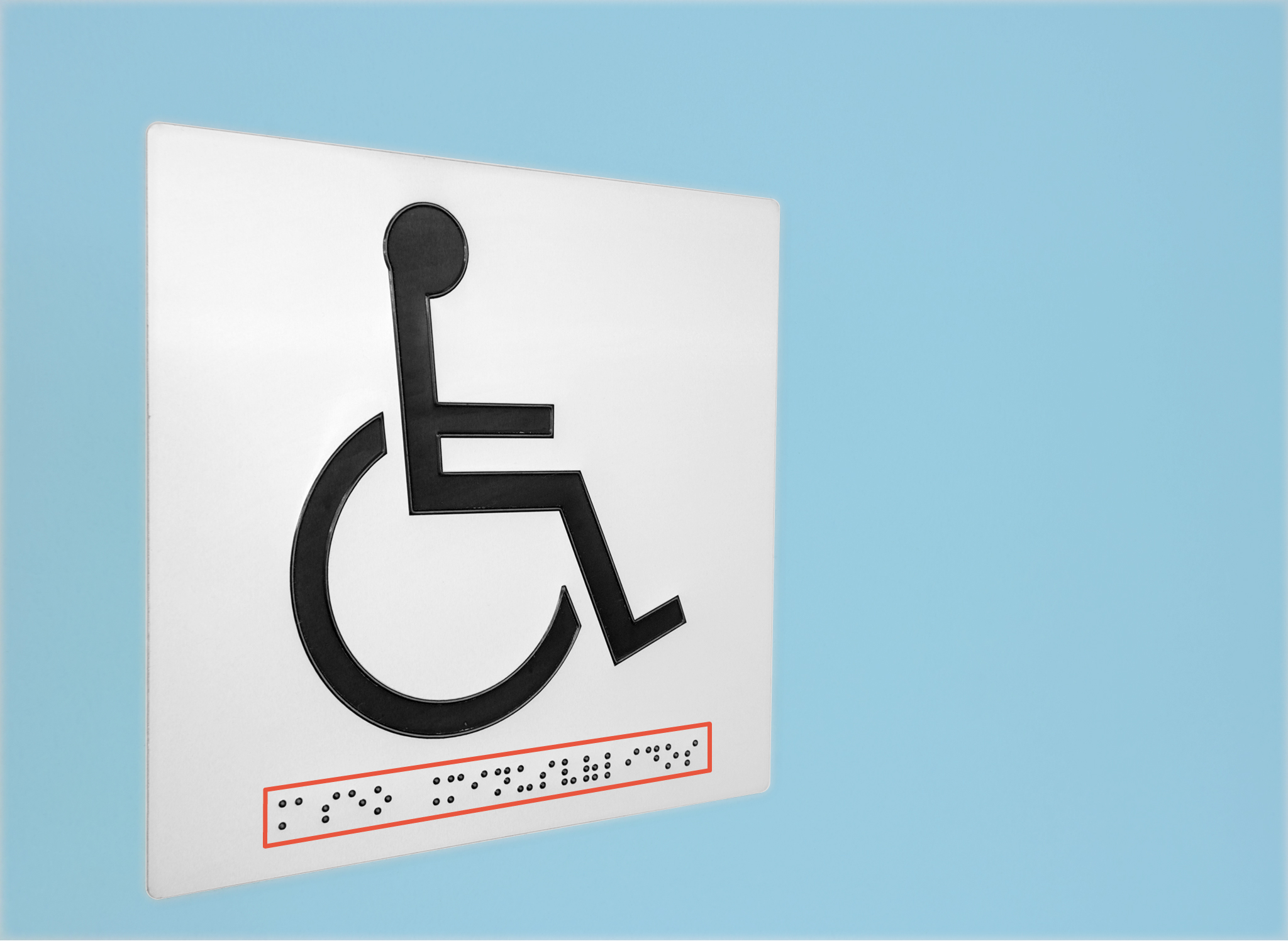
Accessibility - Wheelchair
Accessibility category. "wheelchair" indicates the presence of a device, service, equipment or physical environment that is provided to a pedestrian with a mobility disability.
Illustration 1
When considering how to map the presence of a physical elevator in this physical environment.
- Capture the elevator as an
"elevator"Unit - Set the display-point
- Set accessibility to
"wheelchair"to explicitly indicate ADA compliance
Note: In this scenario, two (2) Opening features would be expected when the lower and upper floors are modeled as a single Level feature.
If a Venue Organization preference was to only capture a point-based representation of the physical elevator, then:
- Capture the elevator as an Amenity (
"elevator"category) - Set accessibility to
"wheelchair"to explicitly indicate ADA compliance
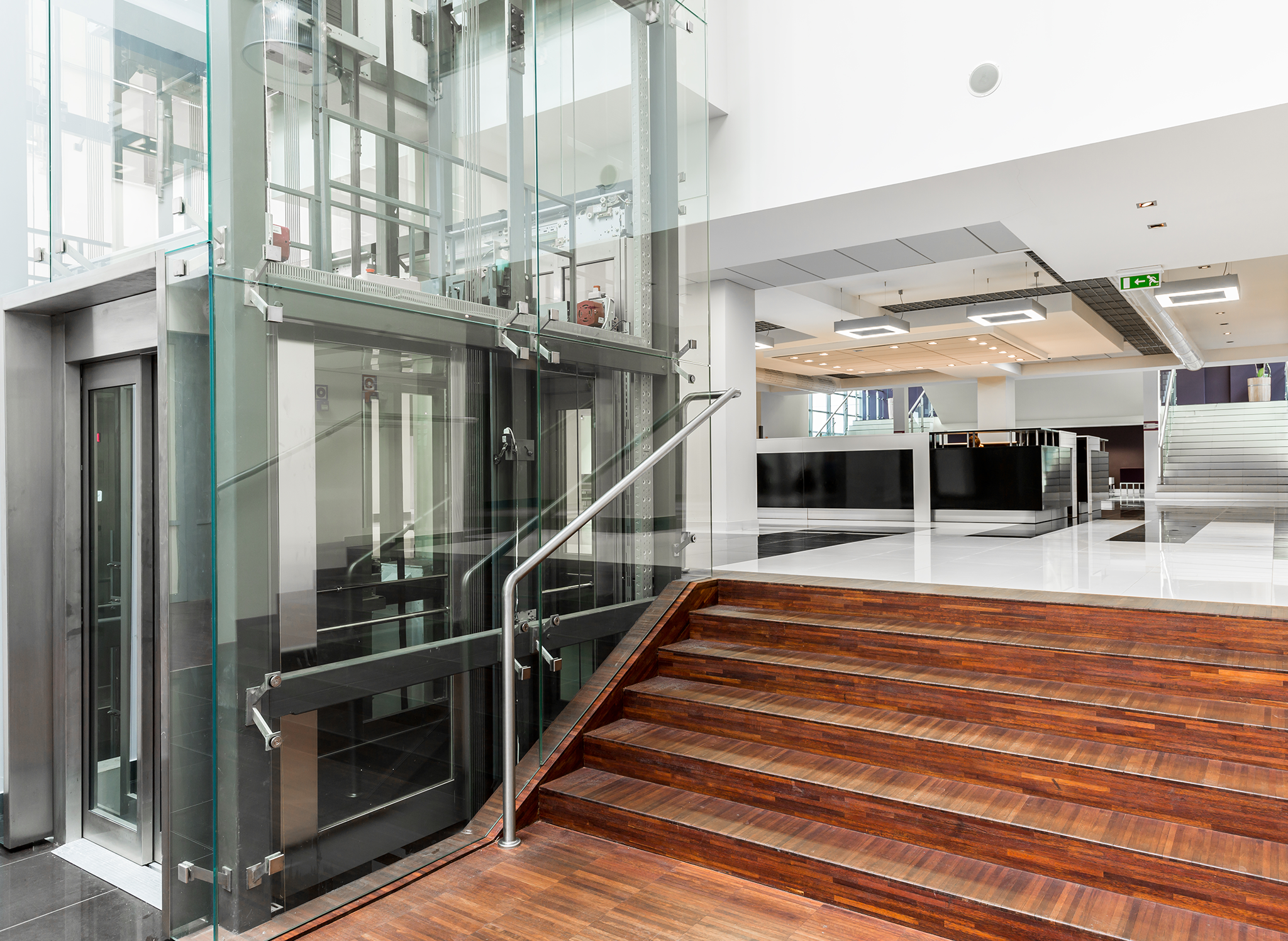
Illustration 2
Where a modeled entrance possesses this service, or one like it, accessibility category "wheelchair" should be present on the Opening.
Note: In this scenario, it is not a requirement to indicate that the Opening's door is "automatic". Automation is assumed when this accessibility category is assigned to an Opening.
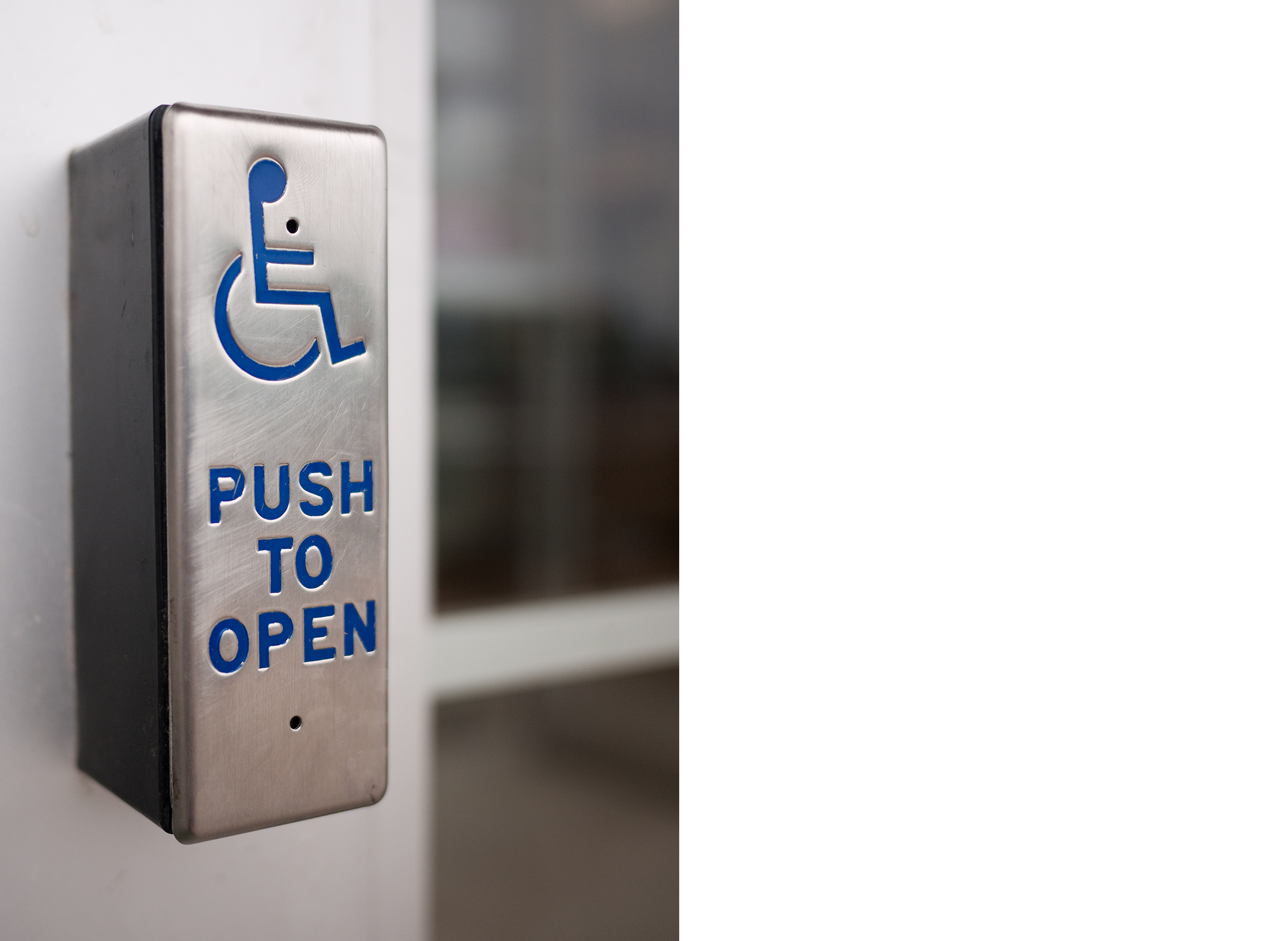
Illustration 3
Several options exist when considering how to map the presence of a ramp in this physical environment.
- Capture the ramp as a
"walkway"Unit (map the grade as part of a single contiguous pedestrian pathway) and imply that the grade is structurally compliant with ADA requirements - Capture the ramp as a
"ramp"Unit and imply that the grade is structurally compliant with ADA requirements - Capture the ramp as a
"ramp"Unit and set accessibility to"wheelchair"and explicitly indicate ADA compliance - Capture the ramp as a
"ramp"Unit, set the display-point, and set accessibility to explicitly indicate ADA compliance. This is the preferred approach in this specific case
Note: Refer to Steps to view a conceptual approach to capturing risers in this physical environment.
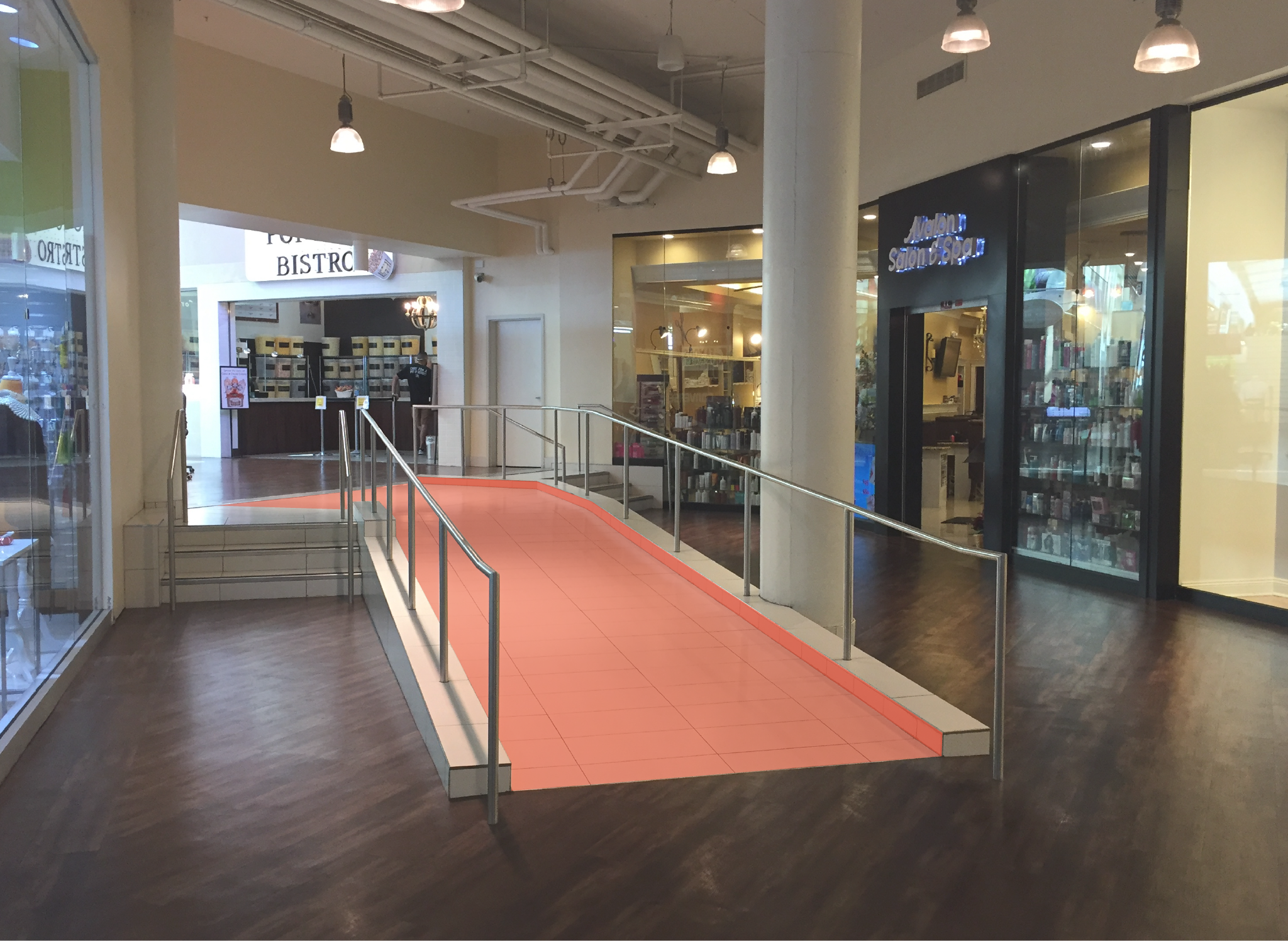
Address
An address is a collection of information used to describe the location of an eligible feature type. A feature references an Address using an address_id.
Address File
The purpose of an Address File is to store one of more Address. An Address record describes a location using elements that store a house number, unit, street name, and administrative area information. An Address can also be used to derive an x/y coordinate for display or routing purposes.
Sample Address Record

Address ID
A property of an Address. address_id uniquely identifies a single address record stored in the Address File. address_id is a property of the following feature types:
- Venue
- Building
- Level
- Section
- Amenity
- Anchor
Airport
Venue category. "airport" models a Venue that services domestic airport locations. Reference.
Airport International
Venue category. "airport.intl" models a Venue that services international airport locations. Reference.
Alternative Name
Synonym or other expression that may be used to describe or refer to a modeled space, physical object, service or convenience. Instances of alt_name are intended to be indexed, enable queries, and support the retrieval of a predetermined label.
Amenity (Feature)
Feature reference.
Amphitheater
Amenity category. "amphitheater" models the presence and approximate point location of an "...open-air venue used for entertainment, performances, and sports."
Anchor (Feature)
Feature reference. The function of an Anchor is to serve as the preferred location to display a POI that occupies a Unit, Fixture or Kiosk. Anchors are not intended to be visible in the map application.
Illustration
Anchors whose position within "room" Units within the Level is orderly/patterned to produce a desirable map aesthetic quality.
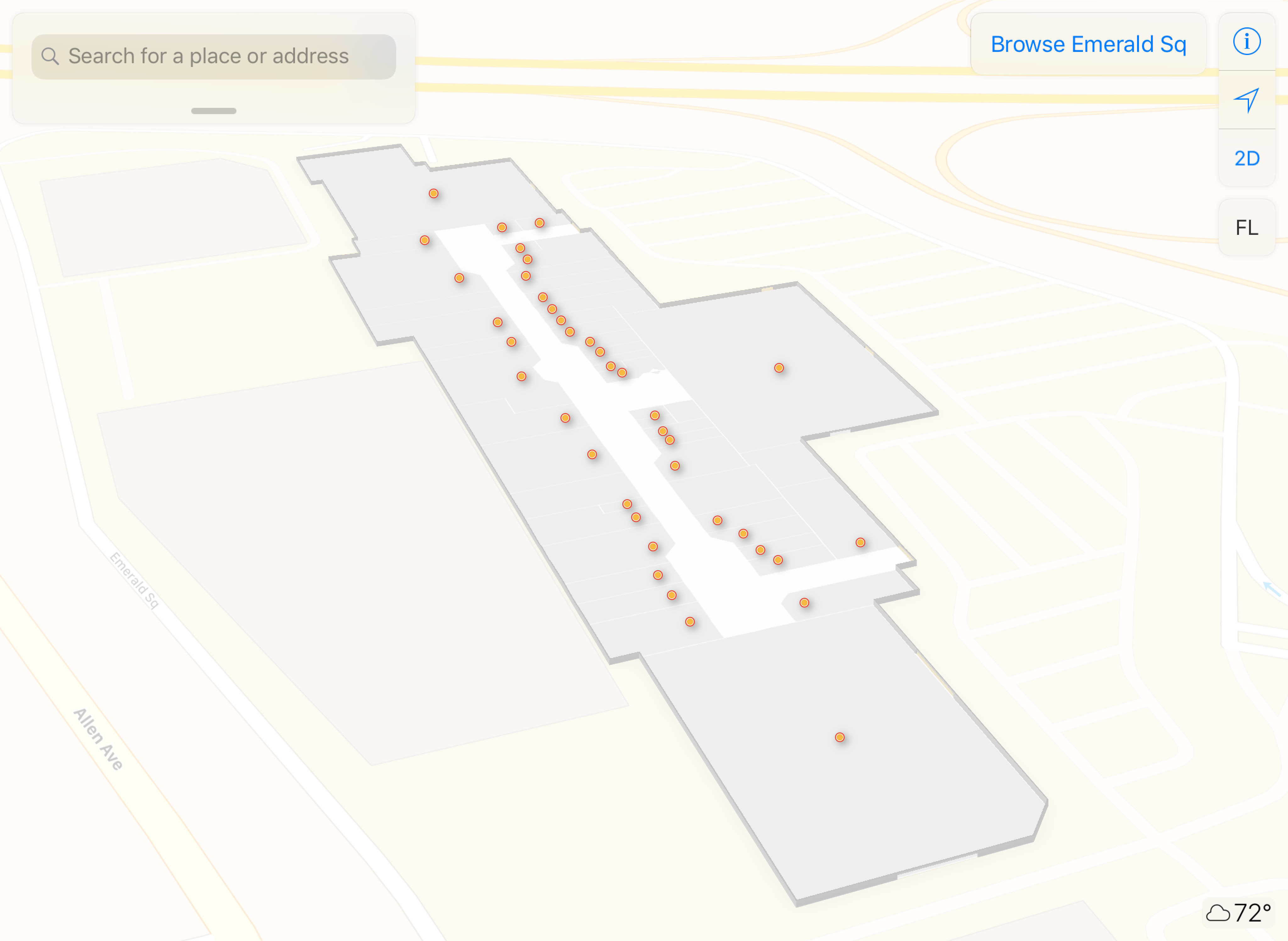
Anchor Store
Illustration
Units modeling the extent of Anchor Stores at this Shopping Center Venue.
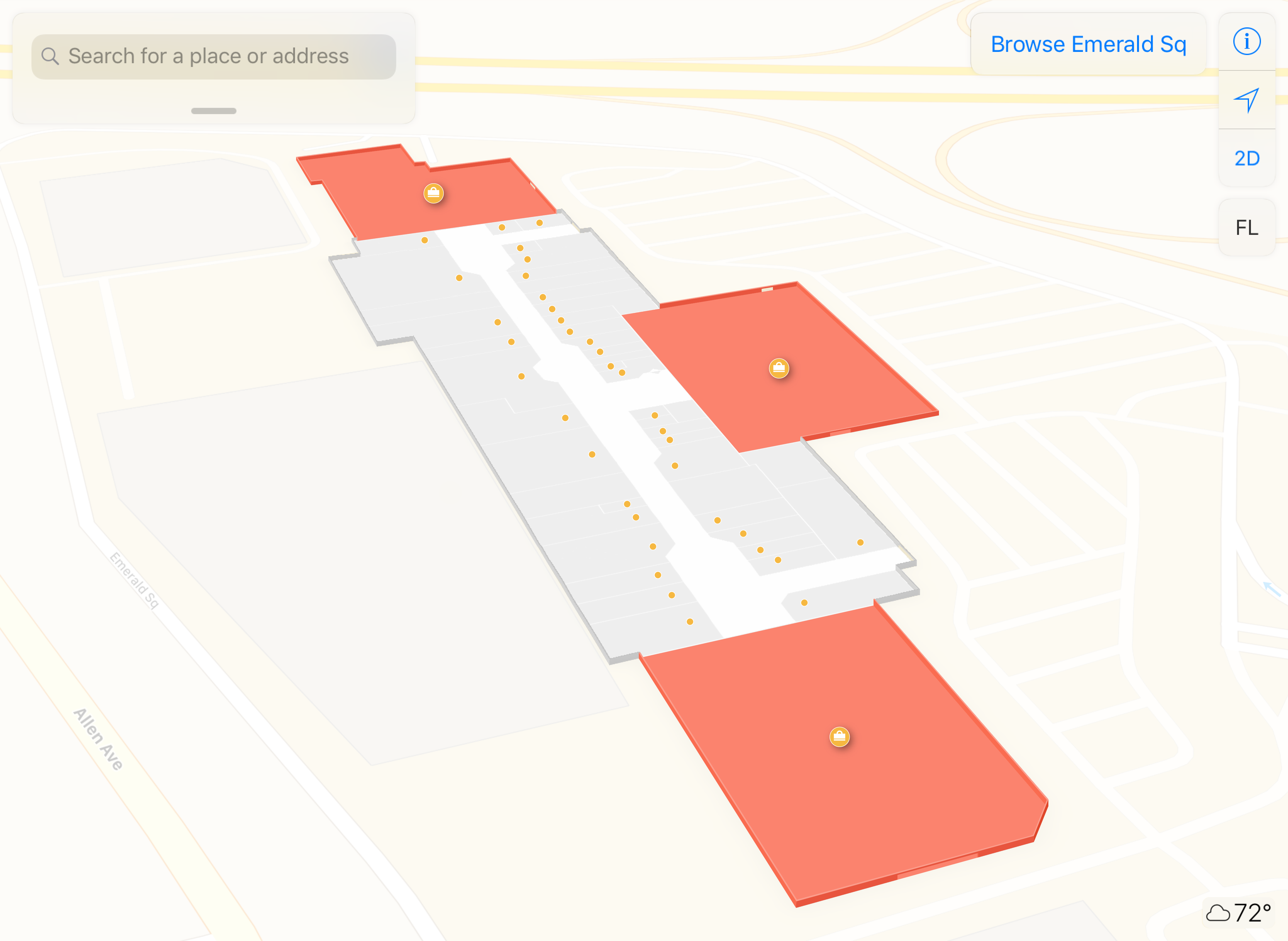
Note "Anchor Store" and "Anchor" are two separate, unrelated concepts.
Animal Relief Area
Amenity category. "animalreliefarea" models the presence and approximate point location of a Service Animal Relief Area (SARA) or domestic pet relief area.
Applied Aesthetics
APM
Amenity category. "peoplemover" models the presence and approximate point location of a transit stop that is associated with a transportation system describable as an Automated People Mover.
Illustration
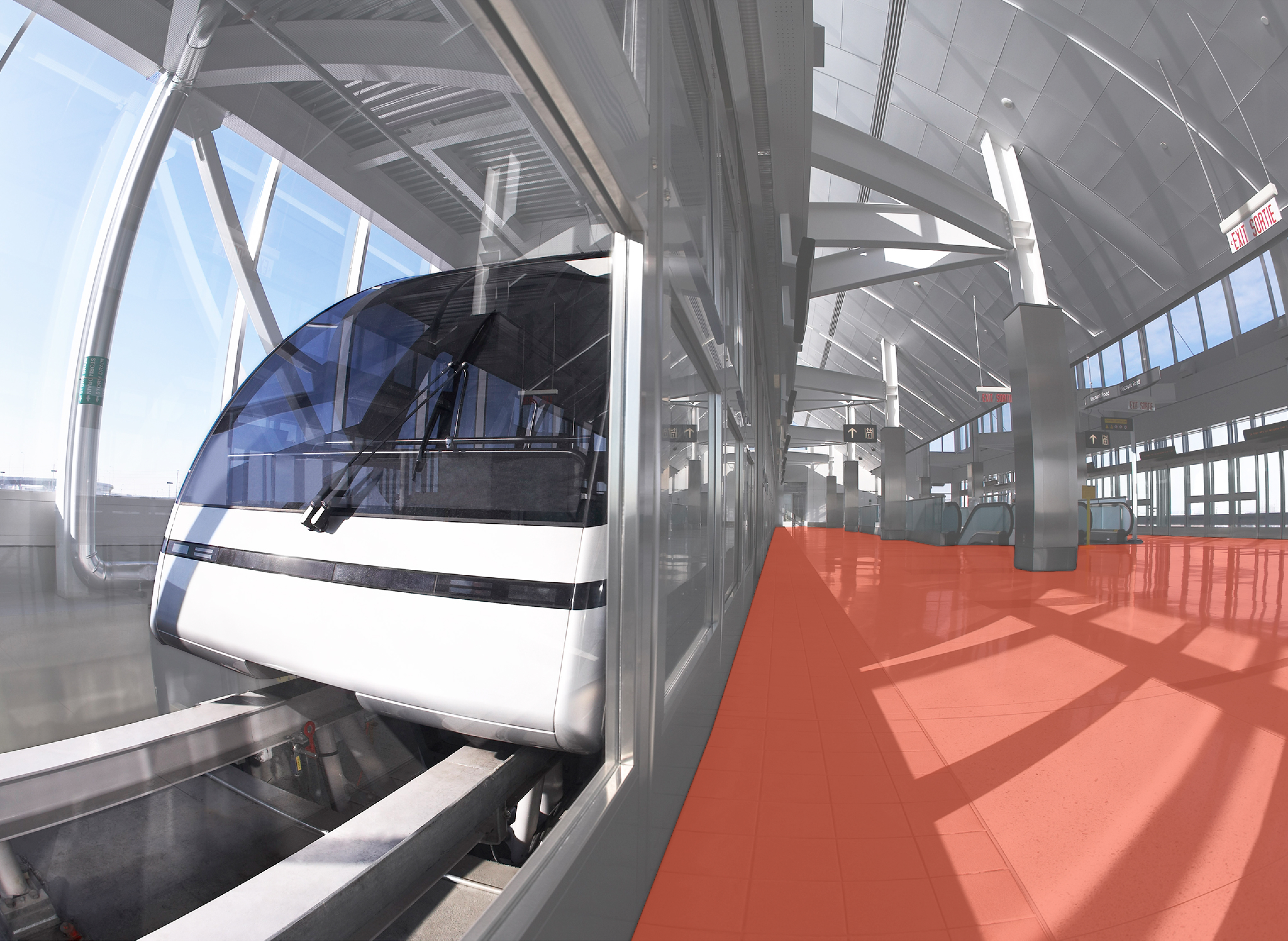
Aquarium
Venue category.
Arrivals Gate
Amenity category. "arrivalgate" models the presence and approximate point location of an arrivals gate operation. In certain airports around the world, arrival gates are separately sign-posted from boarding gates.
ATM
Amenity category. "atm" models the presence and approximate point location of an Automated Teller Machine. "atm" may be used to model the location of a "white-label" or brand-name ATM. A brand name ATM should possess a name.
Auditorium
Unit category. "auditorium" models the presence and physical extent of an enclosed space that supports presentations, performances or learning.
B
Baby Changing
Amenity category. "babychanging" models the presence and approximate point location of a space that contains a changing table but not bathroom facilities. A Restroom (Family) Amenity is expected to model the point location of a space that possesses both bathroom facilities and a changing table.
Baggage Carousel (Amenity)
Amenity category. "baggagecarousel" models the presence and approximate point location of an individual Baggage Carousel.
Baggage Carousel - International (Amenity)
Amenity category. "baggagecarousel.intl" models the presence and approximate point location of an individual Baggage Carousel that is either dedicated or timed to support international arrival operations.
Baggage Carousel (Fixture)
Fixture category. "baggagecarousel" models the presence and physical extent of an individual Baggage Carousel.
Illustration
Four (4) "baggagecarousel" Fixtures within a "walkway" Unit.
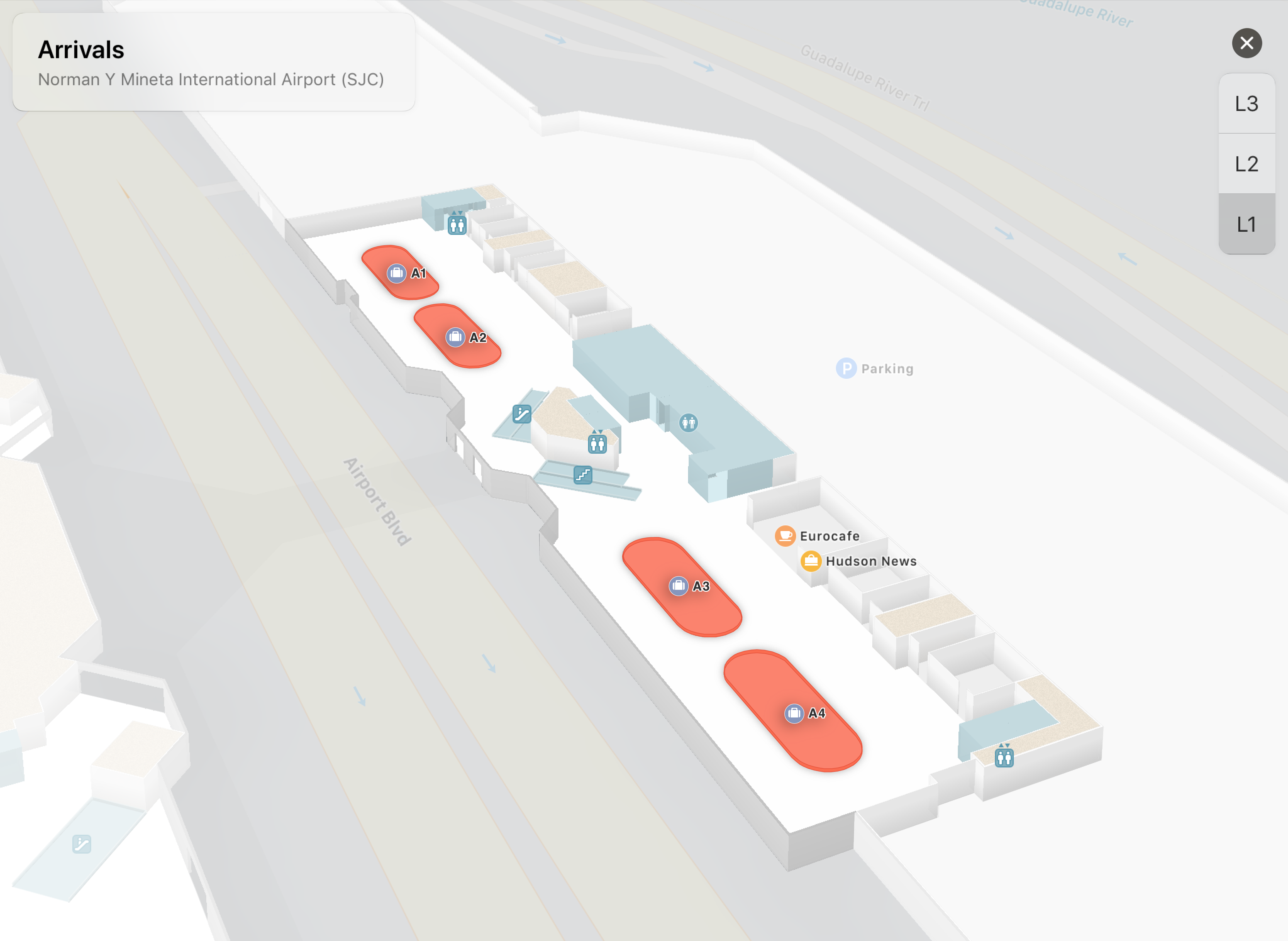
Illustration
"baggagecarousel" display-points used as the curated point-based representation of each Fixture.

Baggage Carts
Amenity category. "baggagecarts" models the presence and approximate point location of a baggage/luggage trolley system.
Baggage Claim (Amenity)
Amenity category. "baggageclaim" models the presence and approximate point location of an open or semi-enclosed environment containing a baggage claim operation.
Baggage Claim (Section)
Section category. "baggageclaim" models the presence and approximate thematic extent of an open or semi-enclosed environment containing a baggage claim operation.
Illustration
An operational theme that is suitable for capture as a single contiguous "baggageclaim" Section.
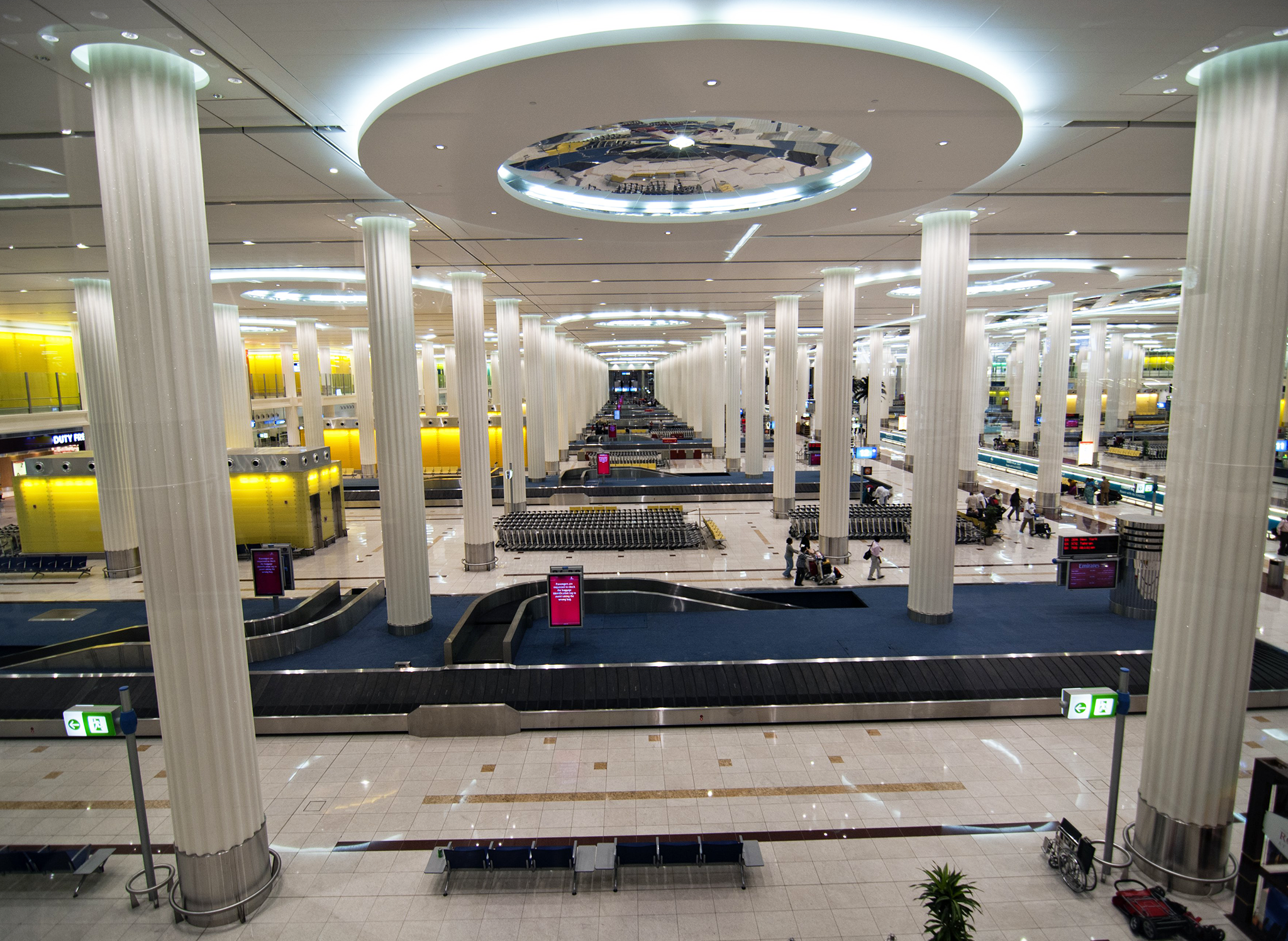
"baggageclaim" Section within a Level.

Baggage Claim - International
Section category. "baggageclaim.intl" models the presence and approximate thematic extent of an open or semi-enclosed environment containing a baggage claim operation dedicated to international flight operations.
Baggage Claim - Oversized
Amenity category. "baggageclaim.oversize" models the presence and approximate point location of a baggage claim area, desk, or service where special or oversized baggage may be re-claimed. Examples of oversized items include: Golf clubs, skis, lacrosse/hockey sticks and other sporting equipment. Also, pets traveling in crates.
Baggage Recheck
Amenity category. "baggagerecheck" models the presence and approximate point location of a baggage recheck service.
Baggage - Storage
Amenity category. "baggagestorage" models the presence and approximate point location of a baggage service or facility where baggage may be temporarily stored.
Blue Dot
A UI feature that displays your calculated location on a map.
Illustration

Boarding Gate (Amenity)
Amenity category. "boardinggate" models the presence and approximate point location of a boarding gate operation. "boardinggate" should be used when a location cannot be classified using any other category in the hierarchy. "boardinggate" is not further defined in IMDF.
Amenity categories
Boarding Gate - Aircraft (Amenity)
Amenity category. "boardinggate.aircraft" models the presence and approximate point location of an aircraft boarding gate operation.
Illustration
"boardinggate.aircraft" Amenities within a "walkway" Unit and "gatearea" Section.
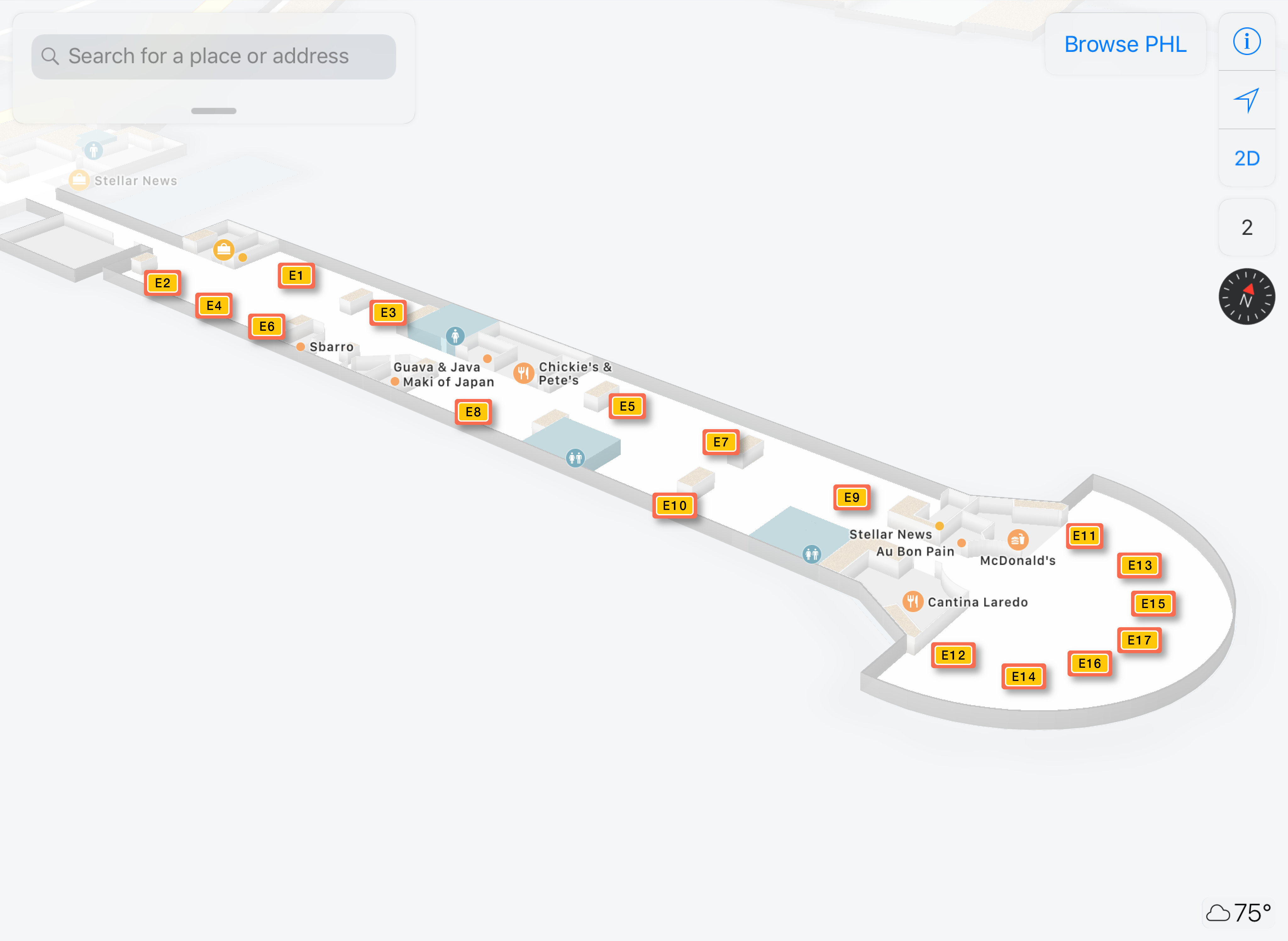
Boarding Gate - Bus (Amenity)
Amenity category. "boardinggate.bus" models the presence and approximate point location of a bus boarding gate operation.
Boarding Gate - Ferry (Amenity)
Amenity category. "boardinggate.ferry" models the presence and approximate point location of a ferry boarding gate operation.
Boarding Gate - Train (Amenity)
Amenity category. "boardinggate.train" models the presence and approximate point location of a train boarding gate operation.
Boarding Gate Desk (Fixture)
Fixture category. "boardinggate.desk" models the presence and physical extent of furniture that supports a boarding gate operation.
Brand Name
Building (Feature)
Feature reference.
Bus
Amenity category. "bus" models the presence and approximate point location of one or more bus stop.
Bus - Municipal
Amenity category. "bus" models the presence and approximate point location of one or more bus stop that is serviced by a local transit authority.
Bus - National
Amenity category. "bus" models the presence and approximate point location of one or more bus stop that is serviced by a national transit authority.
Business Campus
Venue category.
Business Center
Amenity category. "businesscenter" models the presence and approximate point location of a space that provides office facilities and services to the public.
C
Cabin
Amenity category. "cabin" models the presence and approximate point location of a cabin, chalet, cottage or other free-standing structure used for lodging purposes.
Capital Equipment
Equipment that provides operational support and is a "touch" point during a Venue/pedestrian interaction.
Caregiver
Amenity category. "caregiver" models the presence and approximate point location of a service that provides caregiving services, especially to persons that experience disabilities.
Car Rental (Amenity)
Amenity category. "carrental" models the presence and approximate point location of a space containing one or more car rental operation.
Car Rental (Section)
Section category. "carrental" models the presence and approximate thematic extent of an open or semi-enclosed environment containing one or more car rental operation.
Car Rental - Drop-off
Section category. "carrental.dropoff" models the presence and approximate thematic extent of an open or semi-enclosed environment containing a car rental drop-off operation.
Cashier
Amenity category. "cashier" models the presence and approximate point location of a cashier operation.
Casino
Venue category.
Change Machine
Amenity category. "changemachine" models the presence and approximate point location of a service that accepts large denominations of currency and returns an equal amount in smaller denominations.
Check-in
Section category. "checkin" models the presence and approximate thematic extent of an open or semi-enclosed environment containing a collection of check-in operations.
Illustration
An operational theme that is suitable for capture as a single contiguous "checkin" Section.
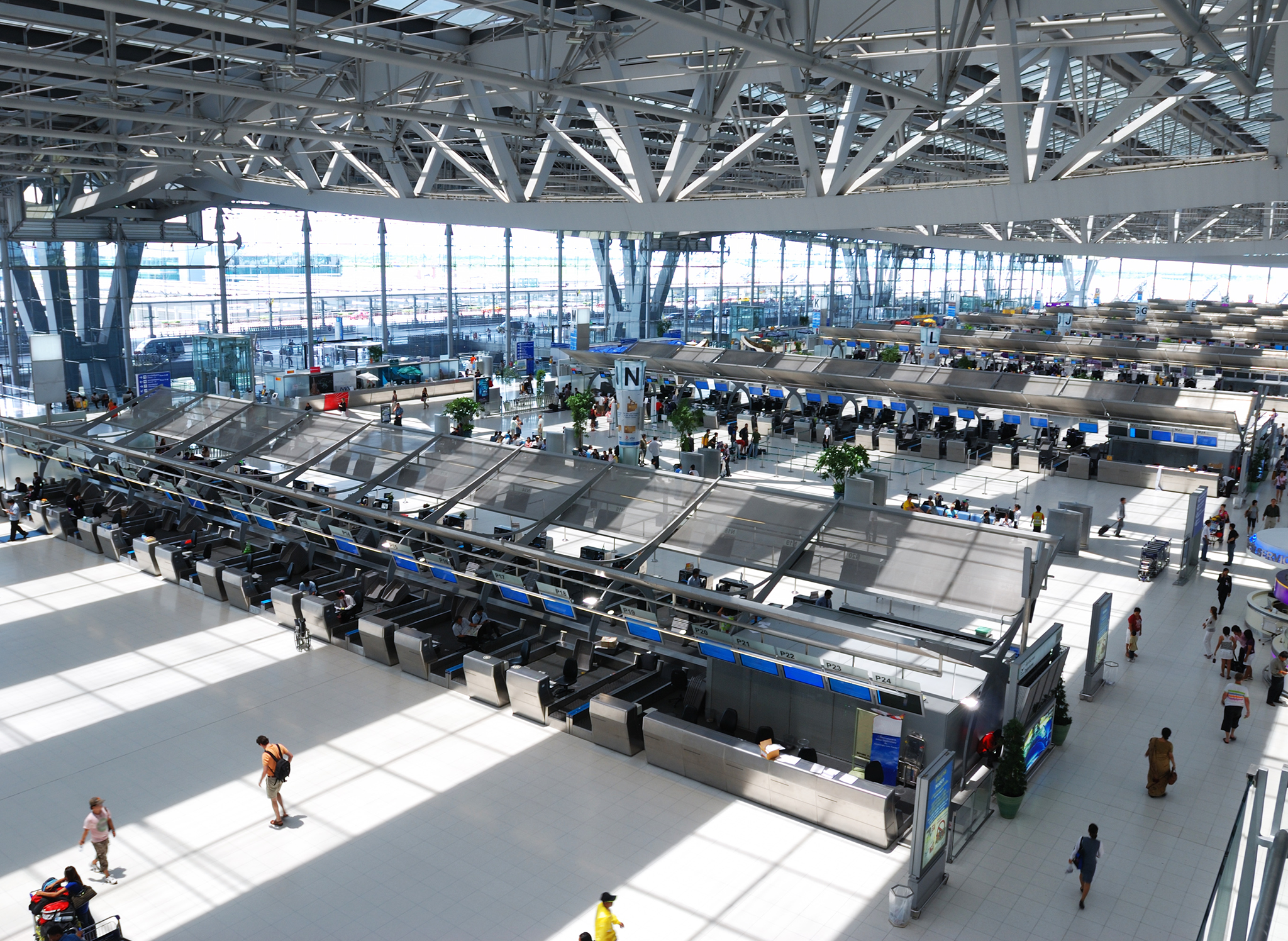
Two (2) "checkin" Sections within a Level that possess display-points which are the curated point-based representation of the Sections.
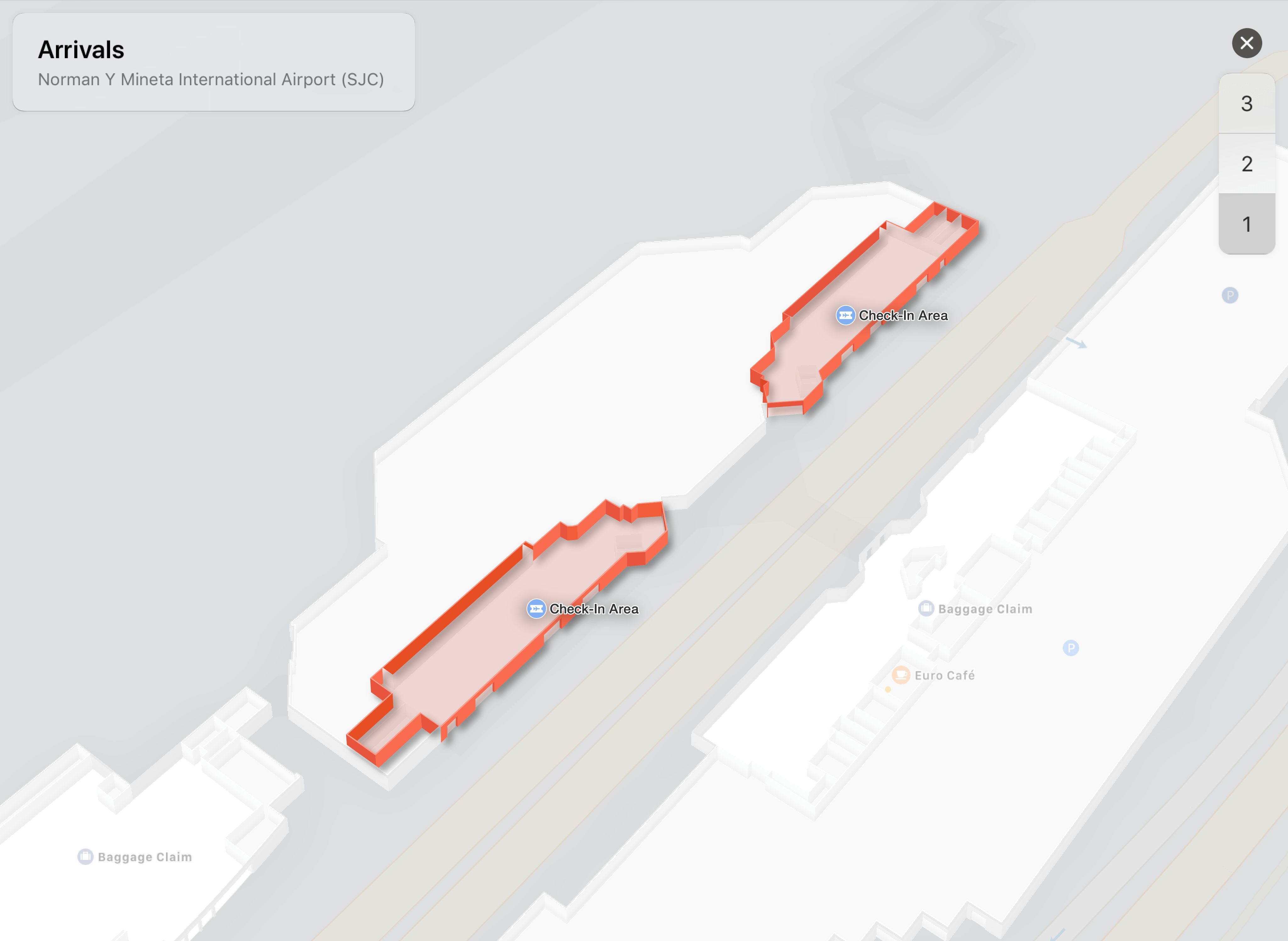
Check-in Desk (Amenity)
Amenity category. "checkin.desk" models the presence and approximate point location of a check-in desk operation.
Check-in Desk (Fixture)
Fixture category. "checkin.desk" models the presence and physical extent of furniture that supports one or more check-in operation.
Illustration
A single "checkin.desk" Fixture within a "walkway" Unit. To overcome the Fixture's display-point multiplicity constraint, the "checkin.desk" Fixture contains four (4) "checkin.desk" Amenities instead.
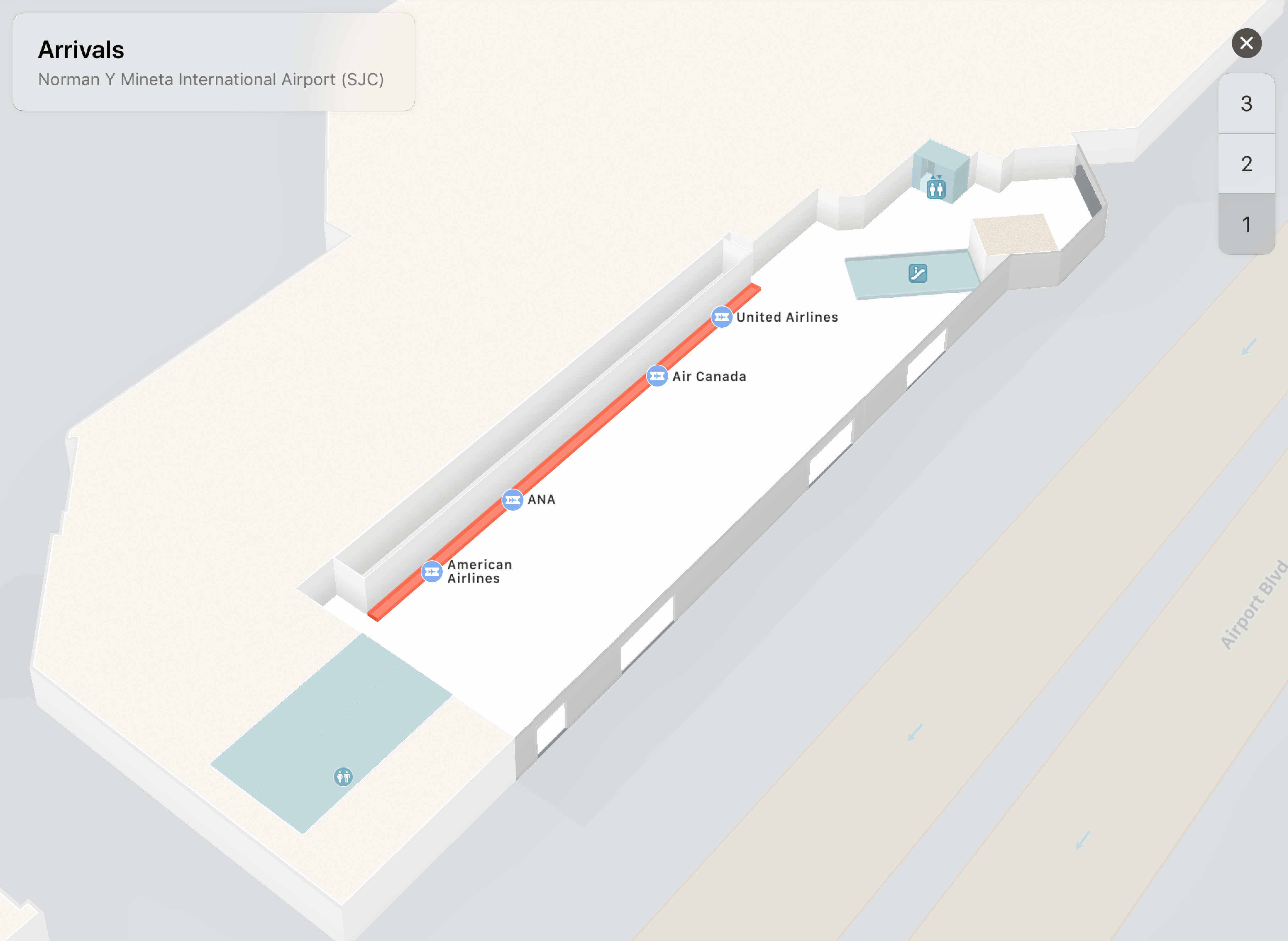
Check-in Desk - Oversize Baggage
Amenity category. "checkin.desk.oversizebaggage" models the presence and approximate point location of a check-in area, desk, or service where special or oversized baggage may be checked in. Examples of oversized items include: Golf clubs, skis, lacrosse/hockey sticks and other sporting equipment. Also, pets traveling in crates.
Check-in - Self Service
Amenity category. "checkin.selfservice" models the presence and approximate point location of furniture/equipment that supports full or semi-automated check-in operations.
Illustration
A physical environment where a single "checkin.selfservice" Amenity would be appropriate to model the existence of a collection of self-service check-in kiosks.

Check-in Desk - Transfer
Amenity category. "checkin.desk.transfer" models the presence and approximate point location of a manned transfer desk operation whose purpose is to facilitate a traveler's transfer to another outbound connection.
Child Play Area
Amenity category. "childplayarea" models the presence and approximate point location of a child's play area.
City Block
Classroom
Unit category. "classroom" models the presence and physical extent of a learning space. Reference.
Cognitive Recognition
Column
Unit category. "column" models the presence and physical extent of a floor-to-ceiling standalone column.
Illustration
A series of physical standalone columns that are not structurally integrated into a wall. These columns are candidates for capture as "column" Units. These features are particularly helpful during the survey process.
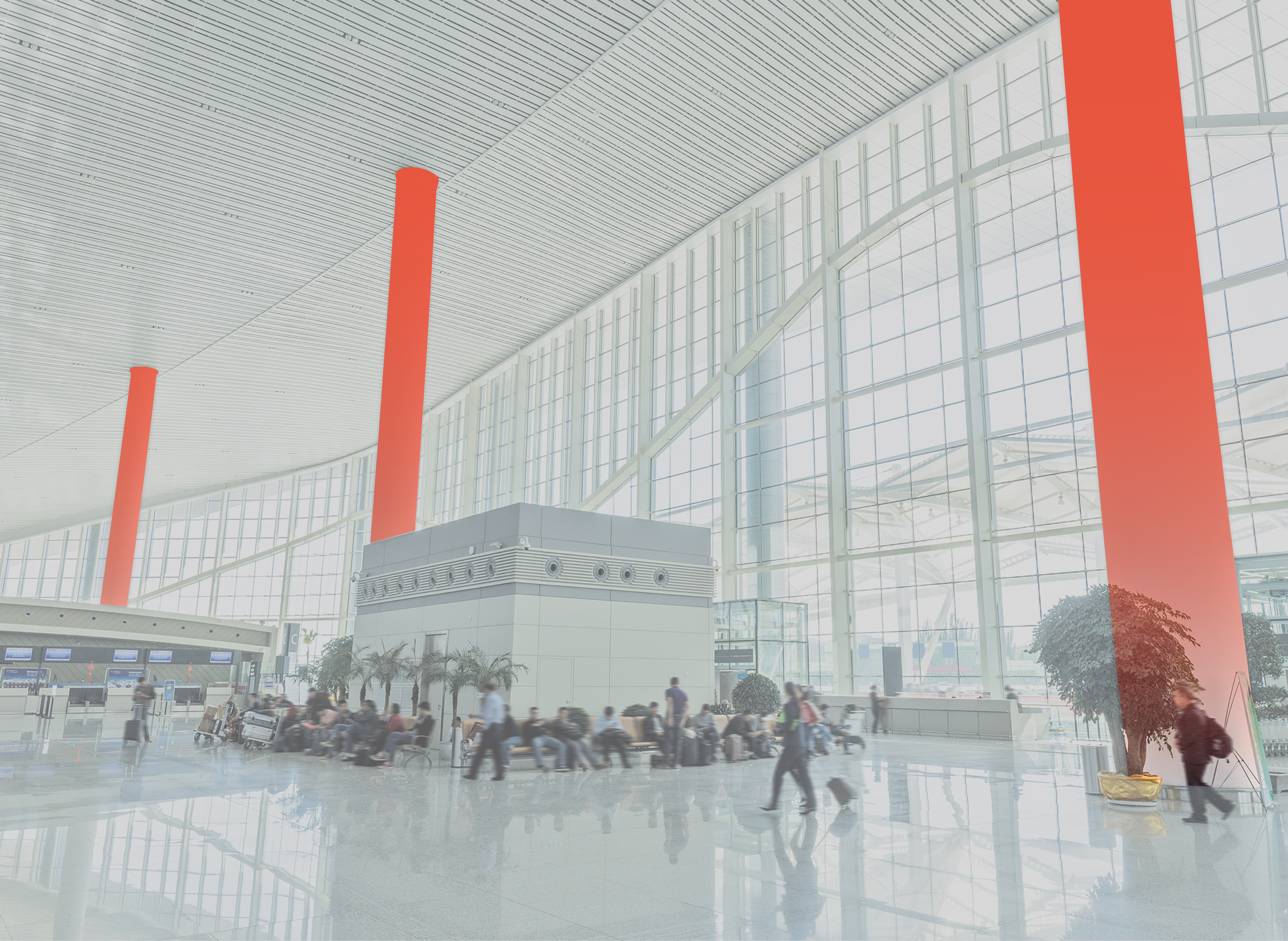
Community Center
Venue category.
Concessions
Section category. "concessions" models the presence and approximate thematic extent of an open or semi-enclosed environment containing concession operations.
Concourse (Geofence)
Geofence category. "concourse" models the extent of a Geofence whose area encompasses a physical environment that is describable by the Venue Organization as a concourse.
Illustration
Three (3) "concourse" Geofences at Chicago Midway International Airport (MDW) that overlap. The overlapping parts define the extent of a pedestrian area that is common among the concourses.
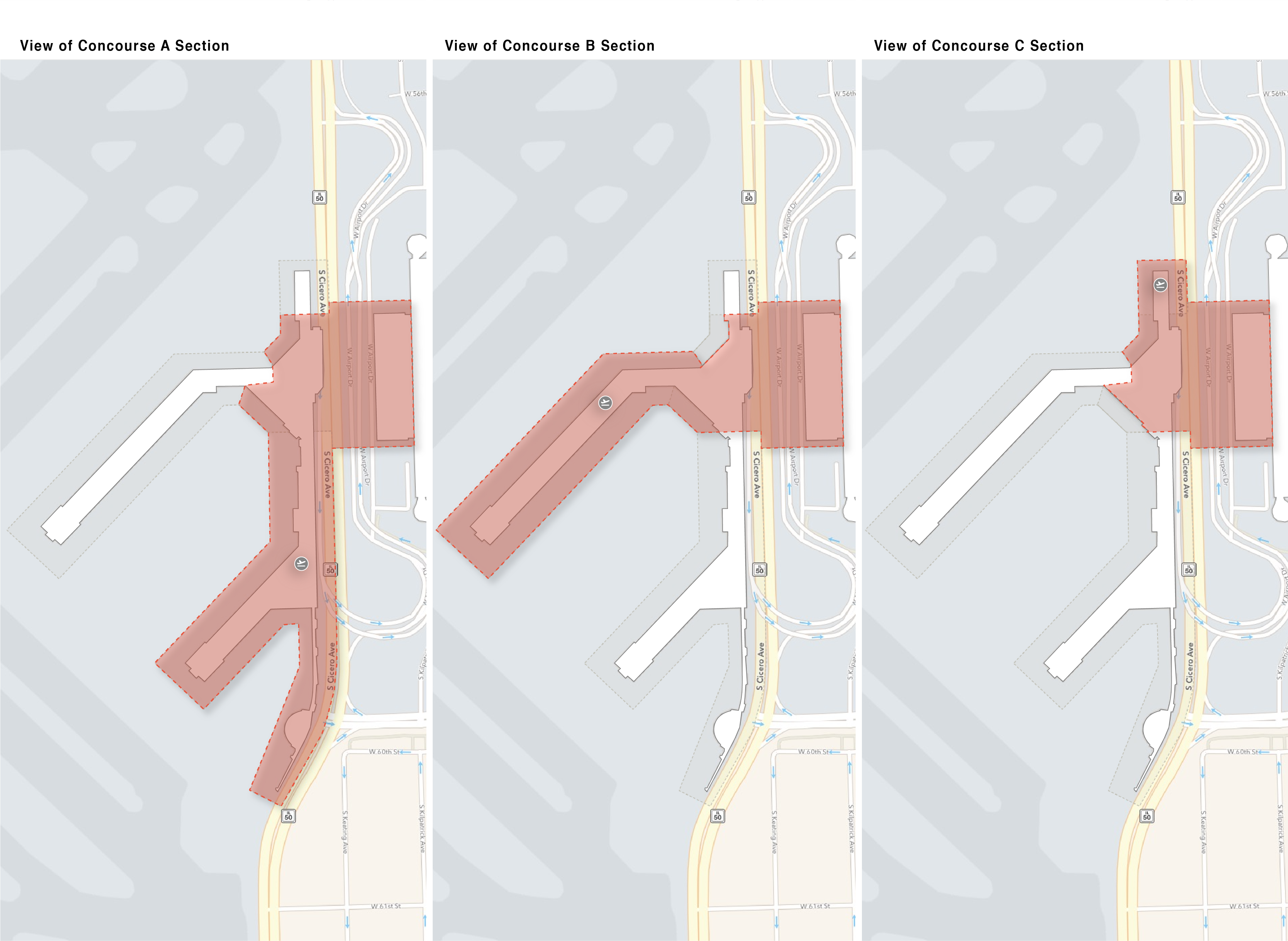
Conference Room
Unit category. "conferenceroom" models the presence and physical extent of an enclosed meeting space. "conferenceroom" models the following types of meeting space:
- Small meeting space: An enclosed meeting space for two to four persons, suitable for both formal and informal interaction
- Large meeting space: An enclosed meeting space for five or more people, suitable for formal interaction
Copier/Fax
Amenity category. "amenity.copier_fax" models the presence and approximate point location of a copy/fax machine service.
Community Center
Venue category.
Contain, Contains, Contained
A spatial condition in which "...the second geometry is completely within the first geometry. The contains predicate returns the exact opposite result of the within predicate." Reference.
Convention Center
Venue category.
Copy Machine
Amenity category. "copymachine" models the presence and approximate point location of a copy machine service.
Correlation ID
Amenity, Occupant
In the context of an Amenity and Occupant, a correlation_id is shared among similar features that occupy different floors of the physical Venue. It is used to indicate a common business or service among features that share the correlation_id. correlation_id is an input to a system function. The system function will, based upon the business rules implemented in the map application, render a single representation of the feature, instead of multiple representations. correlation_id is generally applicable when:
- The features are within Units that reference different Levels
- The Units overlap or equal one another
- Only one feature is expected to be visible in the map application before a user selects a particular Level
Comment: "...overlap or equal one another." is equivalent to the same business or service being either physically directly above or physically directly below the Pedestrian's standing position
Illustration 1
A pair of "parking" Amenities that would share a correlation_id.

Data View
{
"id": "11111111-1111-1111-1111-111111111111",
"type": "Feature",
"feature_type": "amenity",
"geometry": {
"type": "Point",
"coordinates": [1.0, 2.0]
},
"properties": {
"category": "parking",
"accessibility": null,
"name": null,
"alt_name": null,
"phone": null,
"website": null,
"hours": null,
"unit_ids": "22222222-2222-2222-2222-222222222222",
"address_id": null,
"correlation_id": "33333333-3333-3333-3333-3333333333333"
}
}
{
"id": "44444444-4444-4444-4444-444444444444",
"type": "Feature",
"feature_type": "amenity",
"geometry": {
"type": "Point",
"coordinates": [1.0, 2.0]
},
"properties": {
"category": "parking",
"accessibility": null,
"name": null,
"alt_name": null,
"phone": null,
"website": null,
"hours": null,
"unit_ids": "66666666-6666-6666-6666-666666666666",
"address_id": null,
"correlation_id": "33333333-3333-3333-3333-3333333333333"
}
}
Illustration 2
Since multiple floors of this physical Venue are leased to the same business entity, the Occupants that model the business entity are required to share a correlation_id.
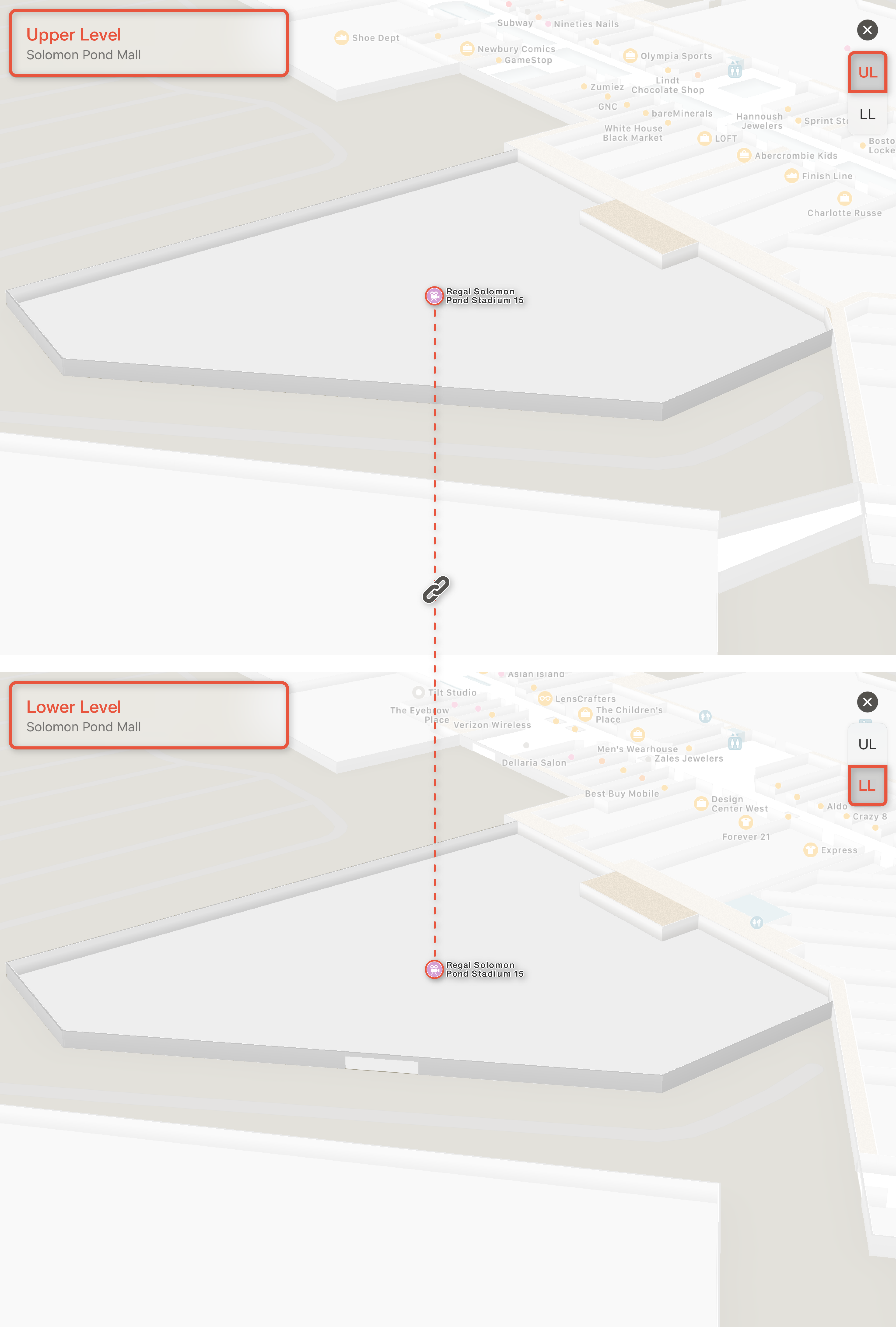
Data View
{
"id": "11111111-1111-1111-1111-111111111111",
"type": "Feature",
"feature_type": "occupant",
"geometry": null,
"properties": {
"category": "cinema",
"name": {
"en": "Regal Solomon Pond Stadium 15"
},
"phone": "+12225551212",
"website": "http://example.com",
"hours": "Mo-Fr 08:30-20:00",
"anchor_id": "22222222-2222-2222-2222-222222222222"
"correlation_id": "44444444-4444-4444-4444-444444444444"
}
}
{
"id": "55555555-5555-5555-5555-555555555555",
"type": "Feature",
"feature_type": "occupant",
"geometry": null,
"properties": {
"category": "cinema",
"name": {
"en": "Regal Solomon Pond Stadium 15"
},
"phone": "+12225551212",
"website": "http://example.com",
"hours": "Mo-Fr 08:30-20:00",
"validity" : {
"start": "2018-03-01",
"end": "2020-10-01",
"modified": "2018-01-01T12:34:56"
},
"anchor_id": "66666666-6666-6666-6666-666666666666"
"correlation_id": "44444444-4444-4444-4444-444444444444"
}
}
Counter
Country Code Top-level Domain
Covers, Covered By
A spatial condition in which "a covers b: geometry b lies in a." Reference.
Cross
Cubicle
Section category. "cubicle" models the presence and approximate thematic extent of a "...partially enclosed office workspace..." Reference.
D
Default Language
The spoken language in use in the location where a Venue is physically located.
Defibrillator
Amenity category. "defibrillator" models the presence and approximate point location of an Automated External Defibrillator (AED). See also: "firstaid".
Destination
A destination is a single identified Opening or Unit that participates in a Relationship with an origin. A Relationship between an origin and a destination can be described using a Relationship.
Detail (Feature)
Feature reference.
Illustration
Details that communicate the presence of risers. The recognition of the features, in terms of their "real-world" representation, is heavily dependent upon the spatial context and cognitive recognition.
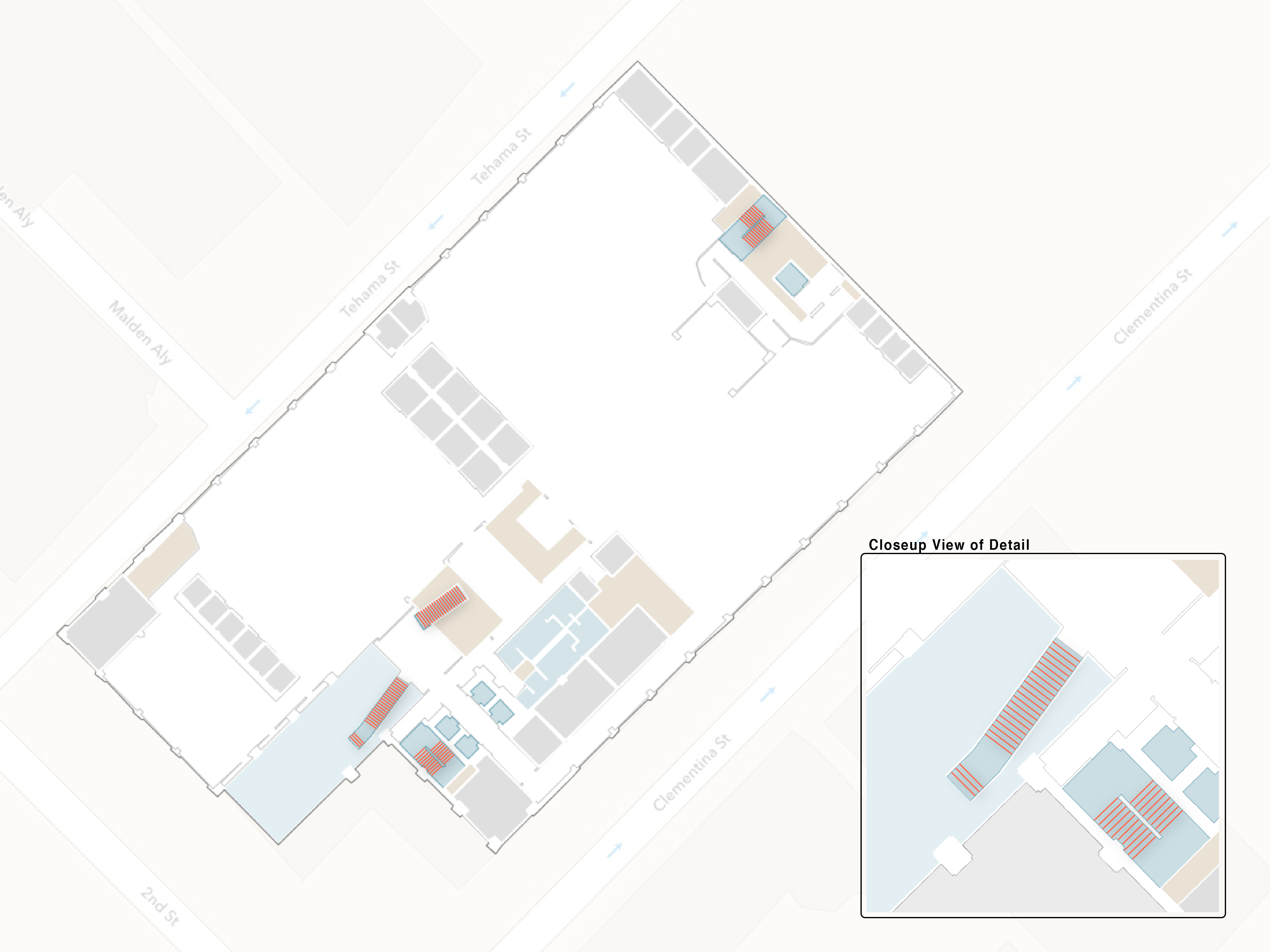
DE-9IM
Direction
direction is a property of the following feature type:
Illustration
To model the physical (direction) constraint that applies to thresholds in this scenario, four (4) Relationship feature objects would each describe:
- A single origin - the identity of the
"room"Unit in which the security operation exists - A single destination - the identity of the
"walkway"Unit - The identity of a single Opening feature
directionwould be described as"directed"
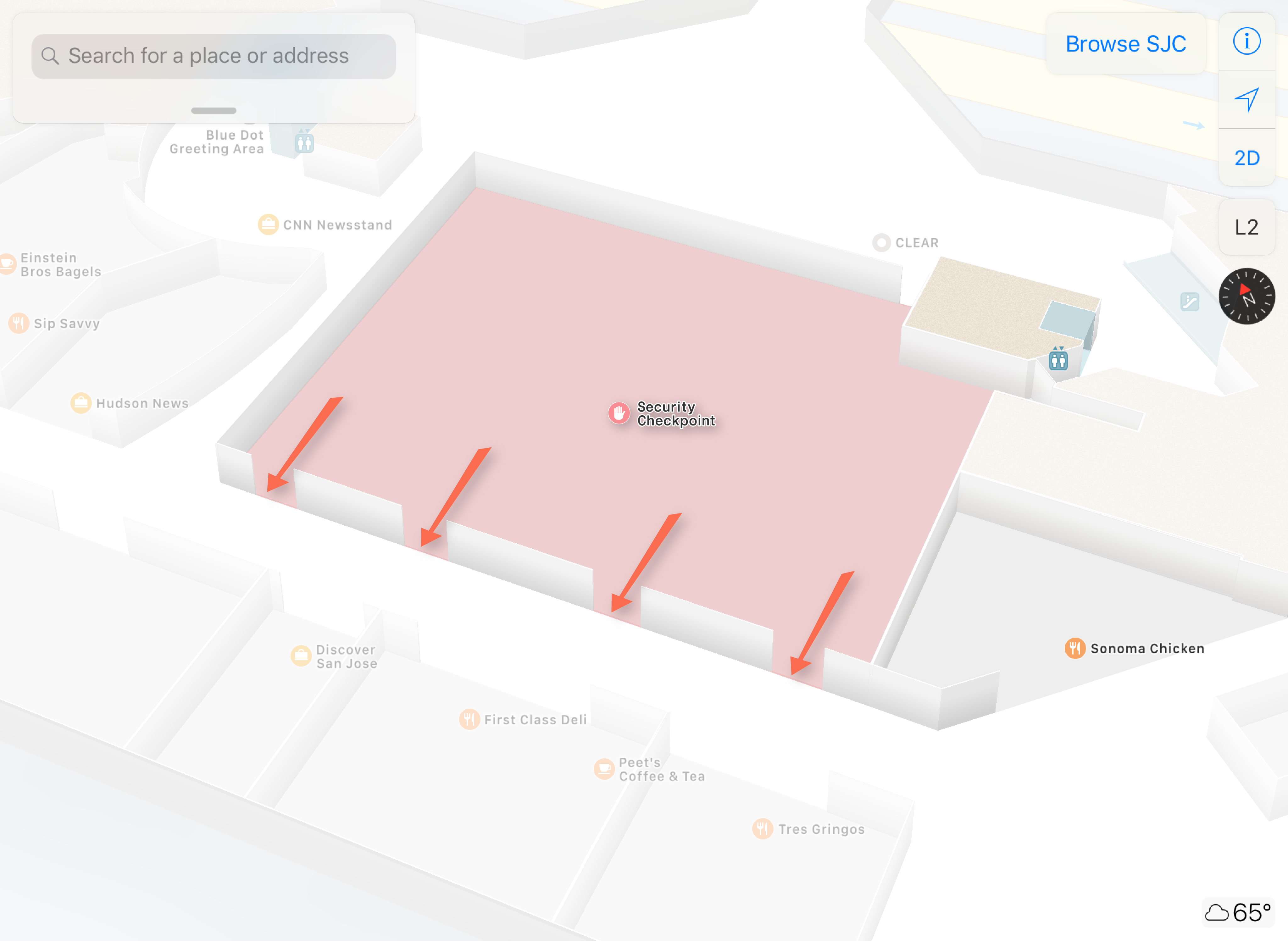
Disjoint, Disjointed, Disjointedness
A spatial condition in which features do not touch.
Illustration
Fixtures within a "walkway" Unit that exhibit disjointedness, and do not touch one another.
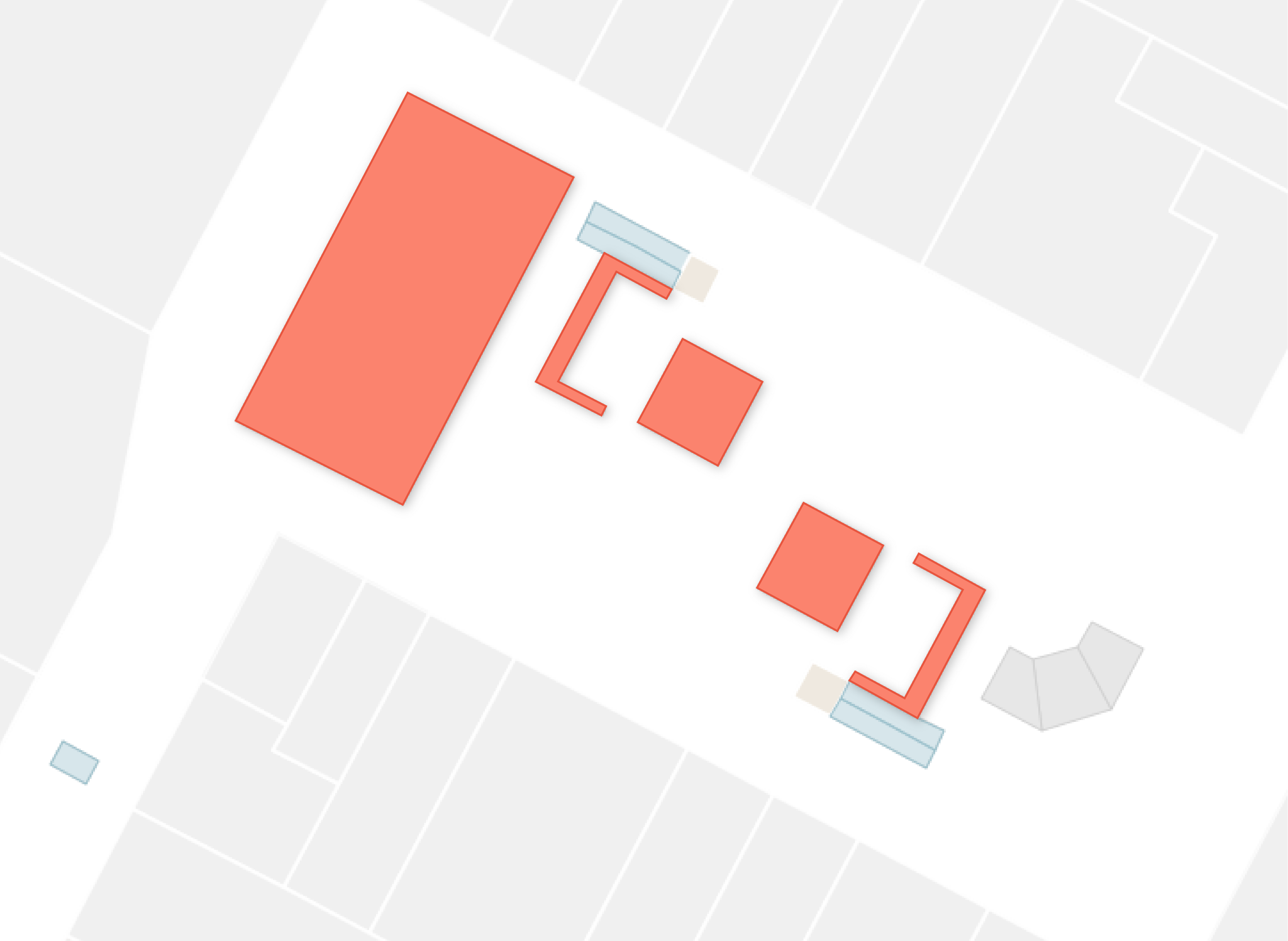
Display-Point
The curated location to use as the point-based representation of a particular feature. Display-point is a property of the following feature types:
- Building
- Fixture
- Geofence
- Kiosk
- Opening
- Level
- Section
- Unit
- Venue
Illustration
The curated location used as the point-based representation of this Venue.
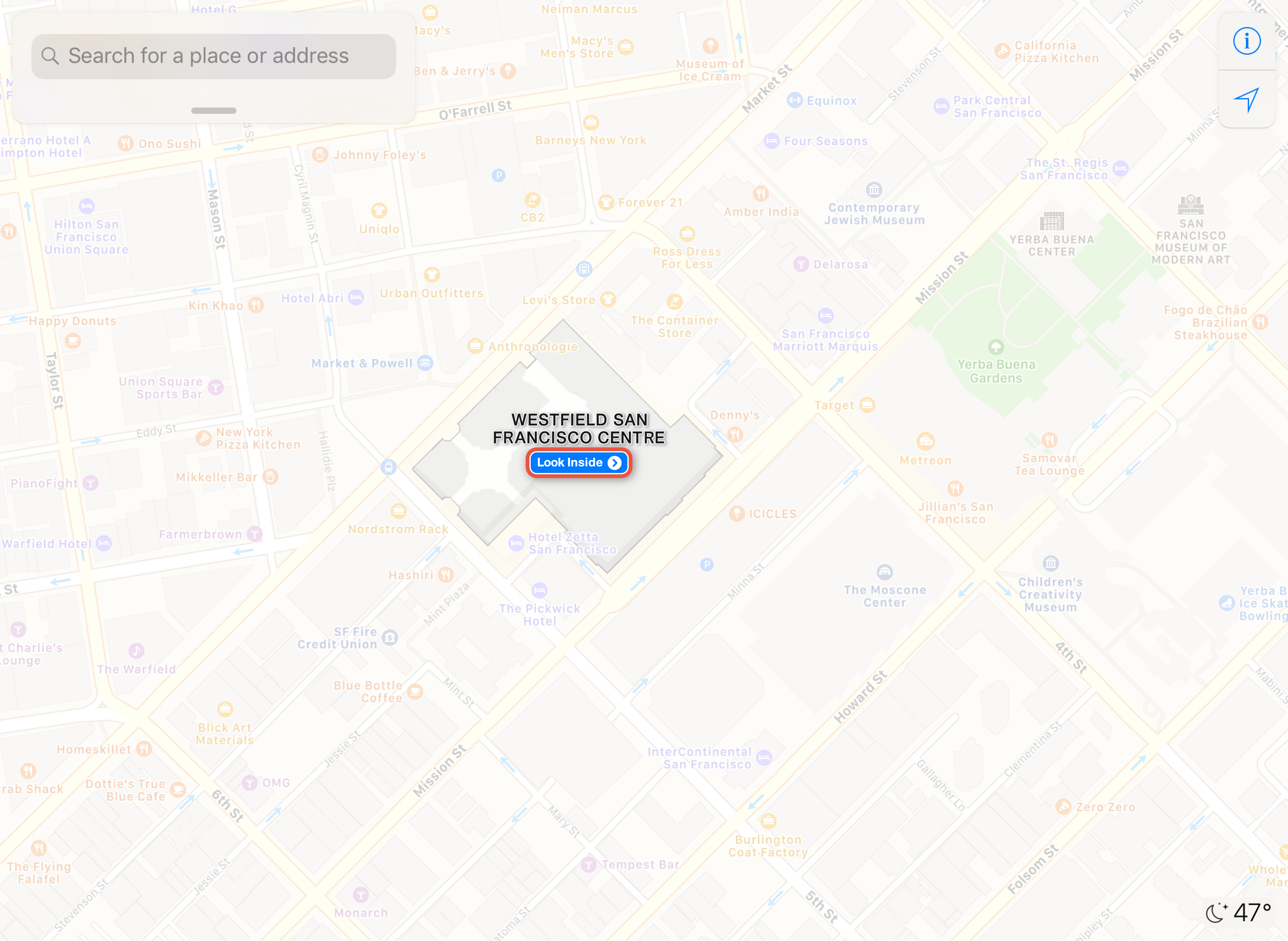
Illustration
Curated locations used as point-based representation of two "terminal" Geofences covering two airport terminals.
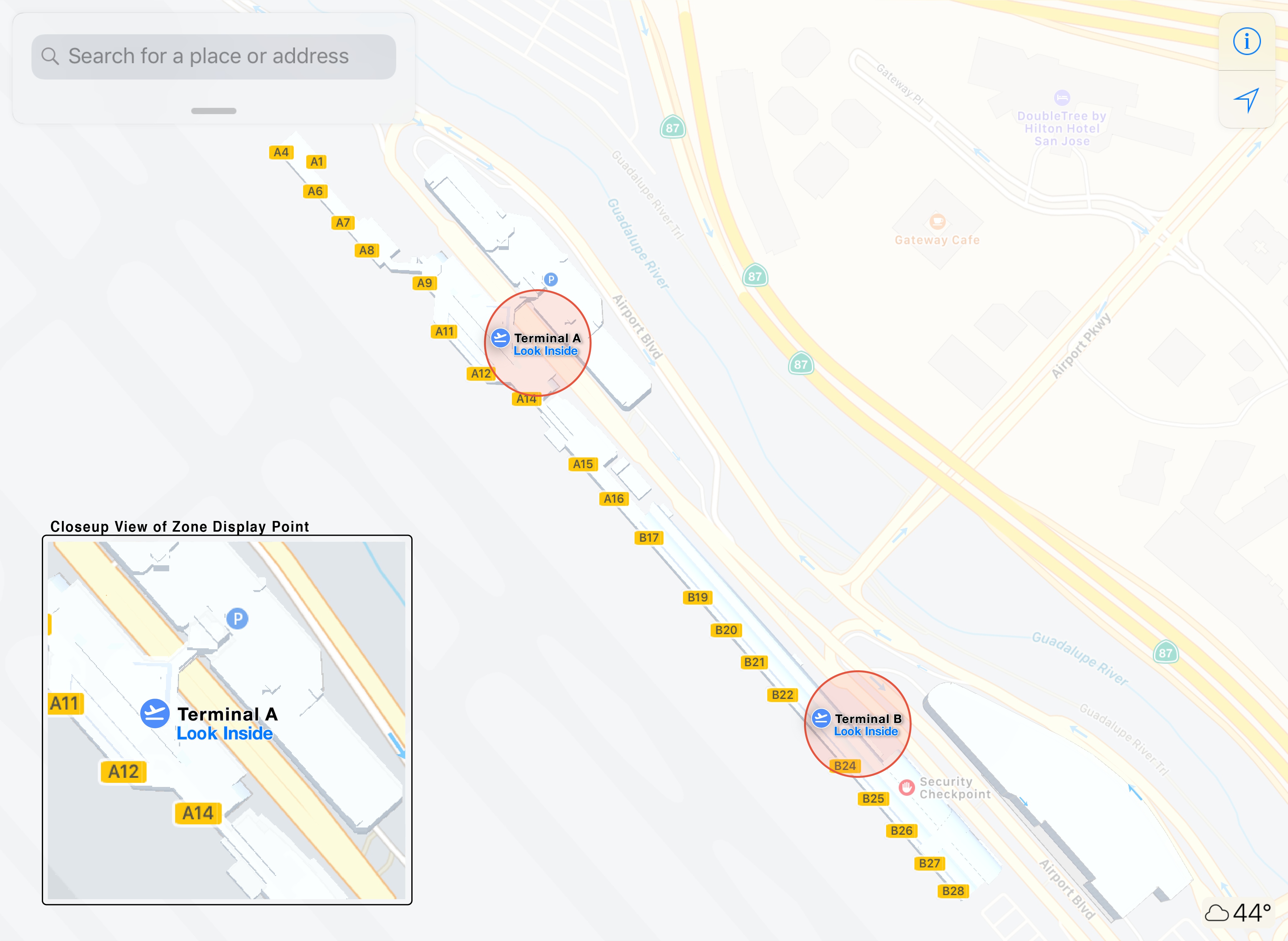
Door - Movable Partition
An Opening Door type. "movablepartition" models a temporary physical wall that opens to join two or more rooms into one large floor area on an ad hoc basis, on the basis of time, or in accordance with a specific operational event.
Door - Open
An Opening Door type. "open" models a doorway that is without a physical barrier. (It has no physical door.)
Door - Revolving
An Opening Door type. "revolving" models a physical door that rotates.
Illustration
Several Opening enrichment opportunities exist in this physical scenario. The following items can be described:
- The door type and material nature of the entrance
- The presence of an automated door operation
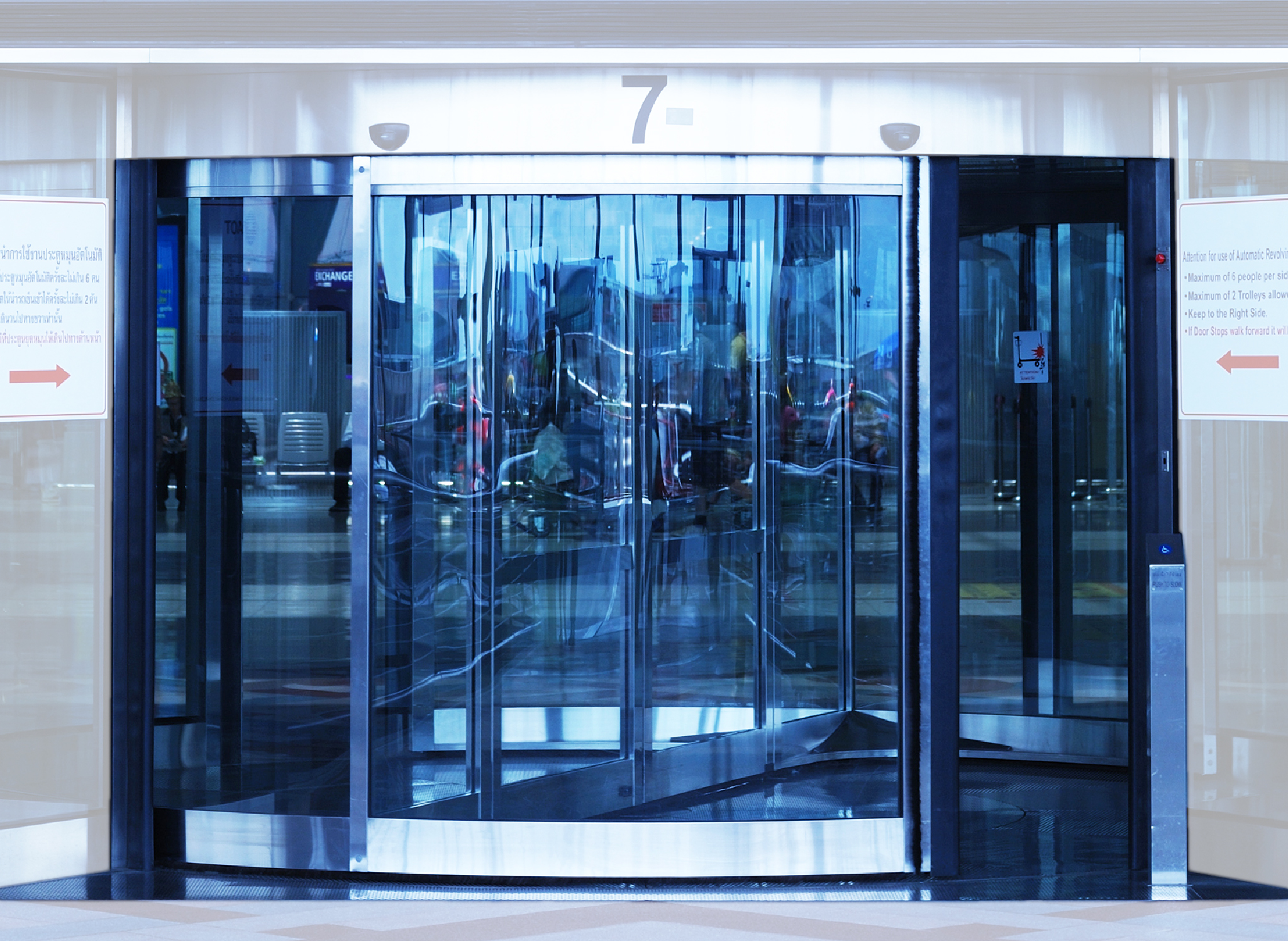
Data View
{
"id": "11111111-1111-1111-1111-111111111111",
"type": "Feature",
"feature_type": "opening",
"geometry": {
"type": "LineString",
"coordinates": [
[100.0, 0.0],
[101.0, 1.0]
]
},
"properties": {
"category": "pedestrian.principal",
"accessibility": null,
"door": {
"automatic": true,
"material": "glass",
"type": "revolving",
},
"name": {
"en": "7"
},
"alt_name": null,
"display_point": null,
"level_id": "22222222-2222-2222-2222-222222222222"
}
}
Door - Shutter
An Opening Door type. "shutter" models a physical door that rolls open and closed.
Door - Sliding
An Opening Door type. "sliding" models a physical door that slides or glides open and closed.
Illustration
Several Opening enrichment opportunities exist in this physical scenario. The following items can be described:
- The door type and material nature of the entrance
- The presence of an automated door operation
- An Opening that is designed for pedestrian with a mobility disability
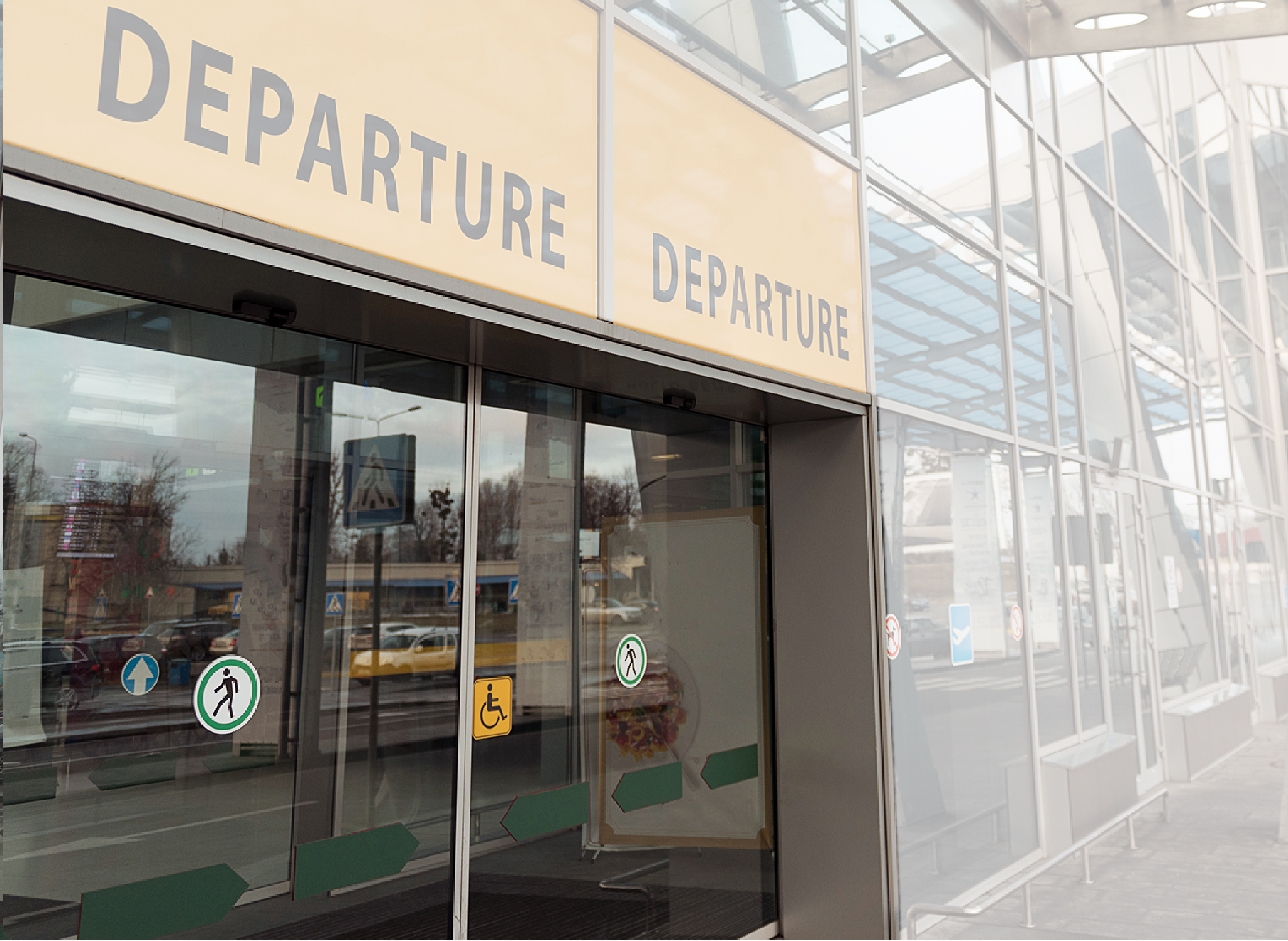
Data View
{
"id": "11111111-1111-1111-1111-111111111111",
"type": "Feature",
"feature_type": "opening",
"geometry": {
"type": "LineString",
"coordinates": [
[100.0, 0.0],
[101.0, 1.0]
]
},
"properties": {
"category": "pedestrian.principal",
"accessibility": [ "wheelchair"],
"door": {
"automatic": true,
"material": "glass",
"type": "revolving",
},
"name": {
"en": null,
"alt_name": null,
"display_point": null,
"level_id": "22222222-2222-2222-2222-222222222222"
}
}
Door - Swing
An Opening Door type. "swinging" models a physical door that swings open and closed.
Door - Turnstile
Opening Door types:
"turnstile""turnstile.fullheight""turnstile.waistheight"
Drinking Fountain
Amenity category. "drinkingfountain" models the presence and approximate point location of drinking water.
Duty Free
Section category. "dutyfree" models the presence and approximate thematic extent of an open or semi-enclosed environment where a pedestrian may purchase duty free goods and services.
E
Eating/Drinking (Amenity)
Amenity category. "eatingdrinking" models the presence and approximate point location of an open or semi-enclosed environment that is used as a "common" area for dining.
Eating/Drinking (Section)
Section category. "eatingdrinking" models the presence and approximate thematic extent of an open or semi-enclosed environment that is used as a "common" area for dining.
Illustration
An "eatingdrinking" Section. The display-point, whose display label (name) is "Food Court", is centrally positioned inside the Section. In this scenario, this Section:
- Touches several
"room"Units - Is within a
"walkway"Unit and Level - Models a physical environment that is partially enclosed by physical, vertical barriers
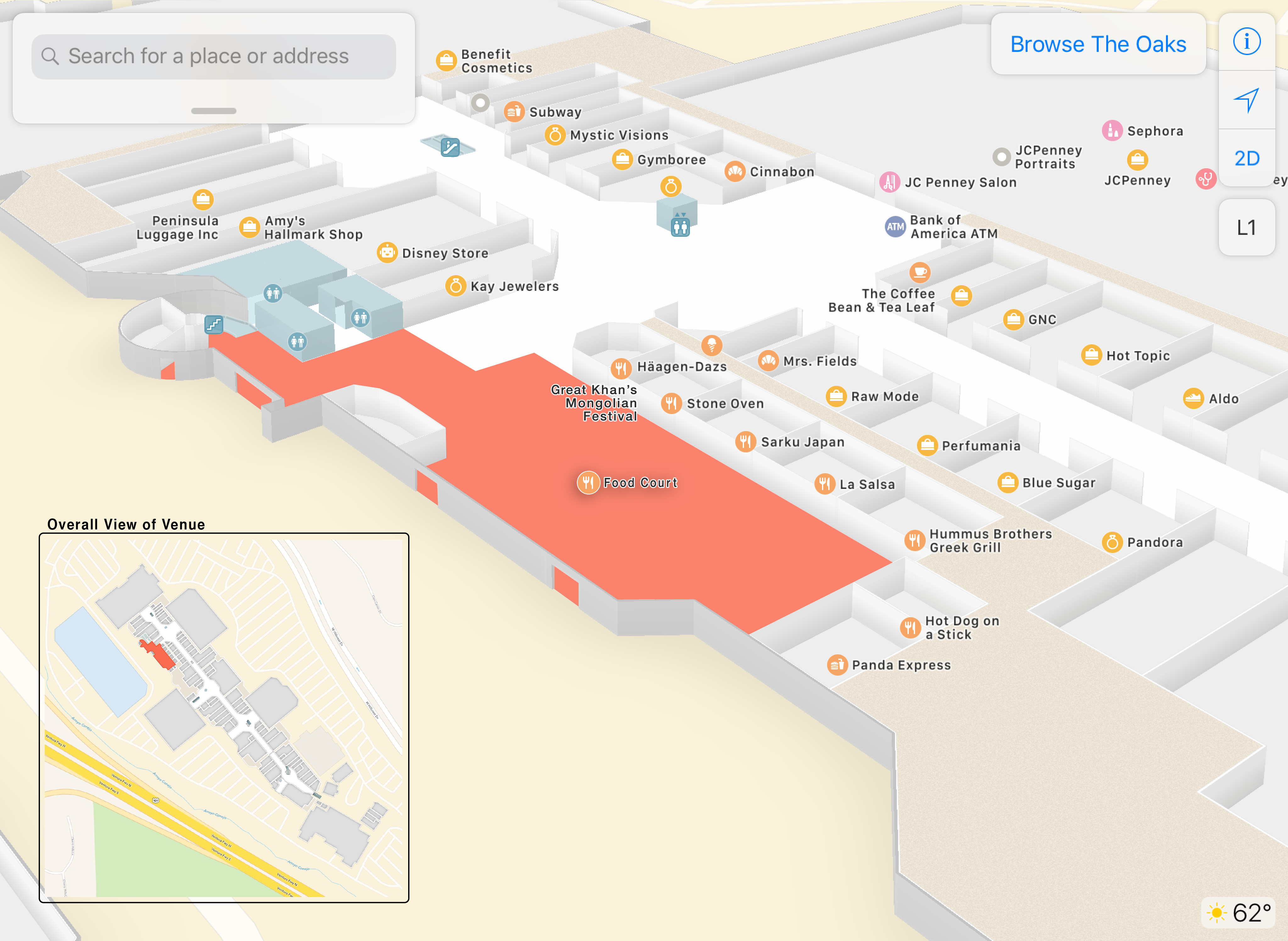
Elevator (Amenity)
Amenity category. "elevator" models the presence and approximate point location of one or more elevator that offers vertical traversal capabilities.
Elevator (Unit)
Unit category. "elevator" models the presence and physical extent of a single elevator that offers vertical traversal capabilities.
Illustration
A single isolated "elevator" Unit with a display-point that is used as the curated point-based representation of the Unit.

Illustration
Several "elevator" Units. Only a single "elevator" Unit possesses a display-point which is centrally positioned among the "elevator" Units.

Emergency Shelter
Amenity category. "emergencyshelter" models the presence and approximate point location of a room designed to provide shelter. E.g., protection from severe weather conditions.
Entertainment Area
Section category. "entertainmentarea" models the presence and approximate thematic extent of an open or semi-enclosed environment whose intended purpose is the offering of entertainment. "entertainmentarea" should be used when an area cannot be classified using any other category in the hierarchy. "entertainmentarea" is not further defined in IMDF.
Section categories
Entertainment Area - Game
Section category. "entertainmentarea.game" models the presence and approximate thematic extent of an open or semi-enclosed environment whose intended purpose is the offering of games or some other playful/competitive pursuit.
Entertainment Area - Music
Section category. "entertainmentarea.music" models the presence and approximate thematic extent of an open or semi-enclosed environment whose intended purpose is the offering of musical entertainment.
Entertainment Area - Performance
Section category. "entertainmentarea.performance" models the presence and approximate thematic extent of an open or semi-enclosed environment whose intended purpose is the offering of movie, theater or live performances.
Entertainment Area - Sport
Section category. "entertainmentarea.sport" models the presence and approximate thematic extent of an open or semi-enclosed environment whose intended purpose is the offering of a competitive physical activity.
Entry
Amenity category. "entry" models the presence and approximate point location of an entrance to a physical building.
Equal
A spatial condition in which "...two geometries of the same type have identical X,Y coordinate values." Reference.
Illustration
"room" Units referencing different Levels that equal one another.
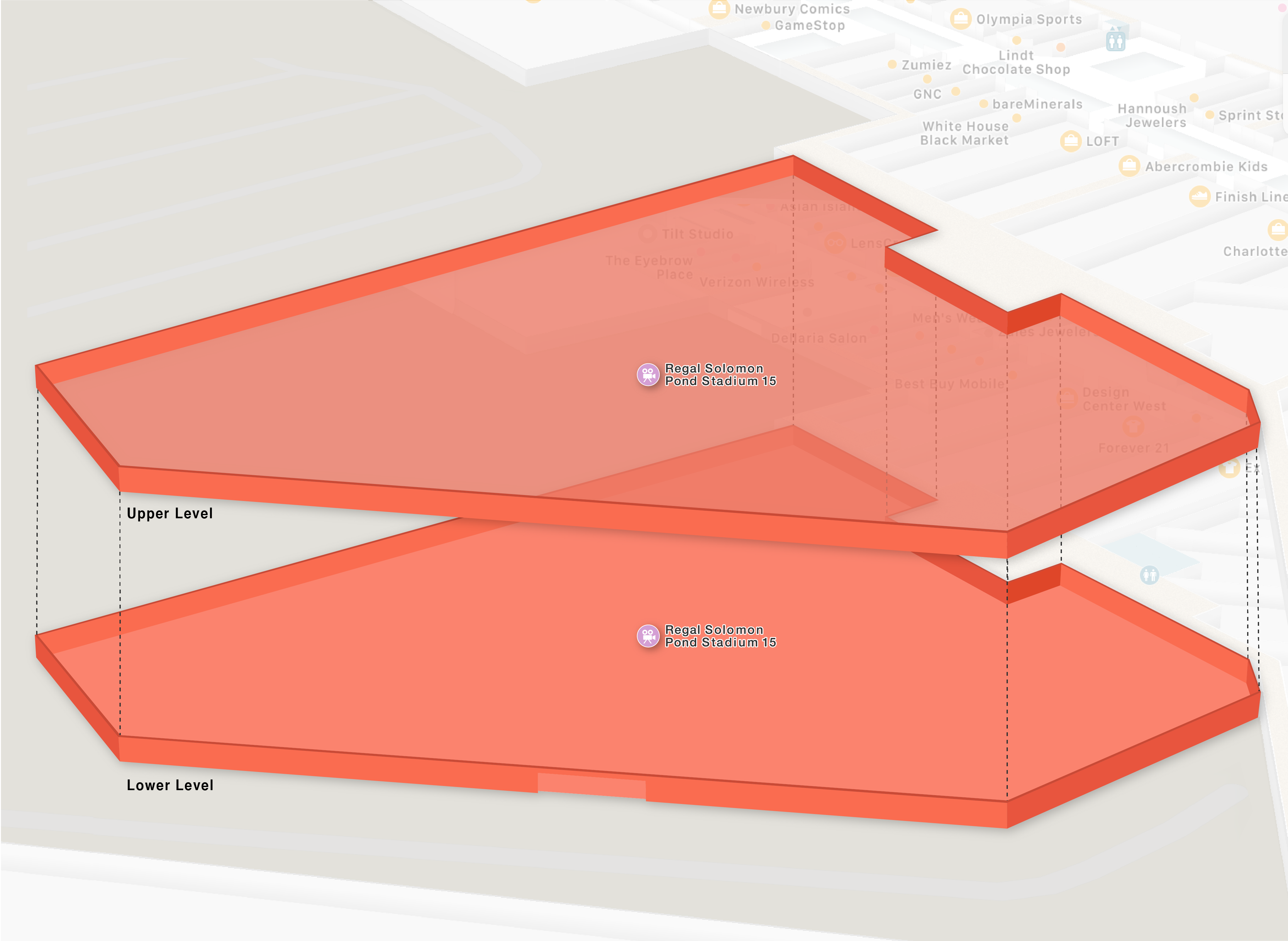
Different Levels that equal one another.
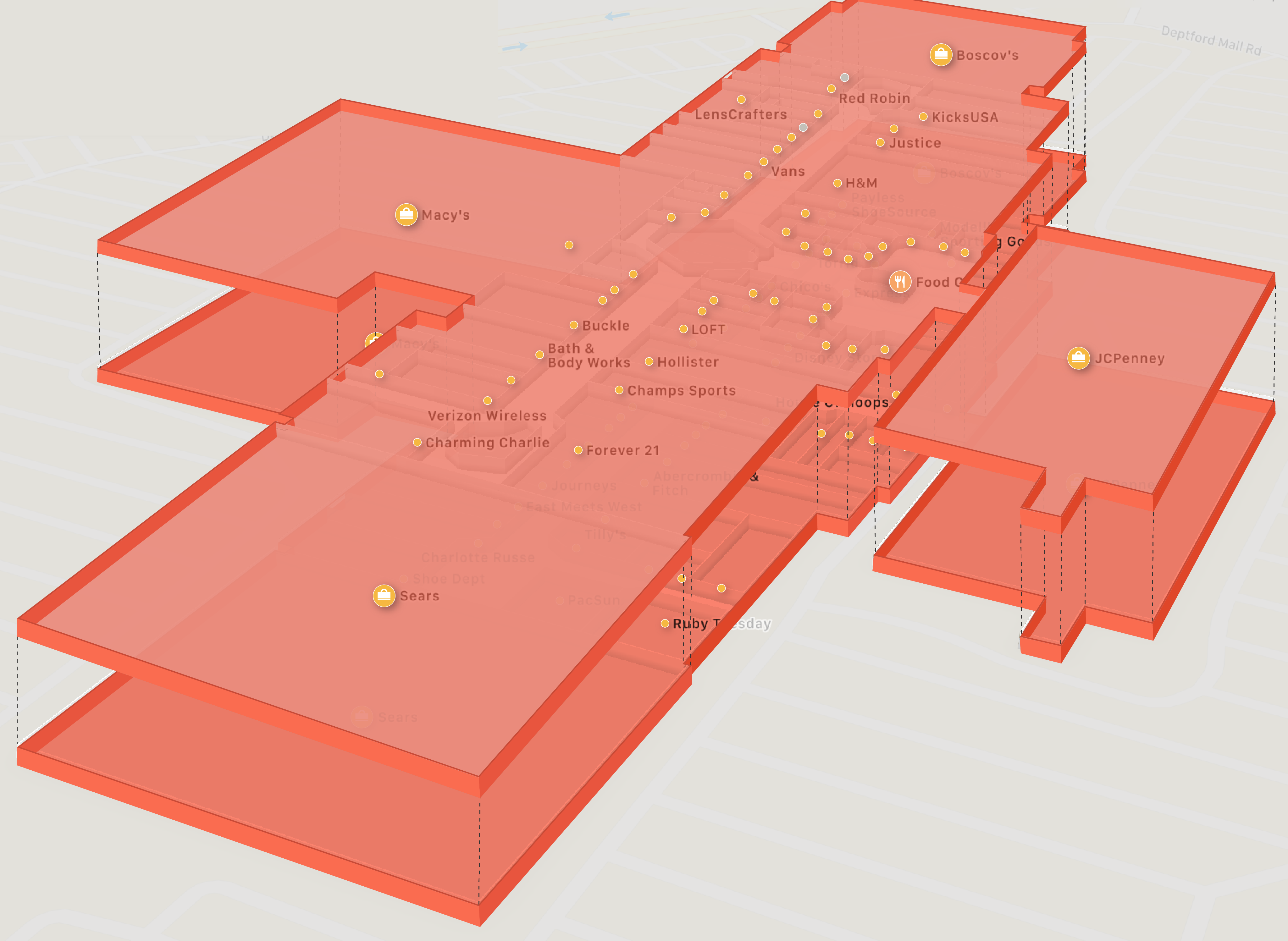
Equipment
Fixture category. "equipment" models the presence and physical extent of capital equipment that supports an operation.
Escalator (Amenity)
Amenity category. "escalator" models the presence and approximate point location of one or more neighboring escalator that offers vertical traversal capabilities.
Escalator (Unit)
Unit category. "escalator" models the presence and physical extent of a single escalator that offers vertical traversal capabilities.
Illustration
Four (4) isolated "escalator" Units each with a display-point that is used as the curated point-based representation of the Unit.
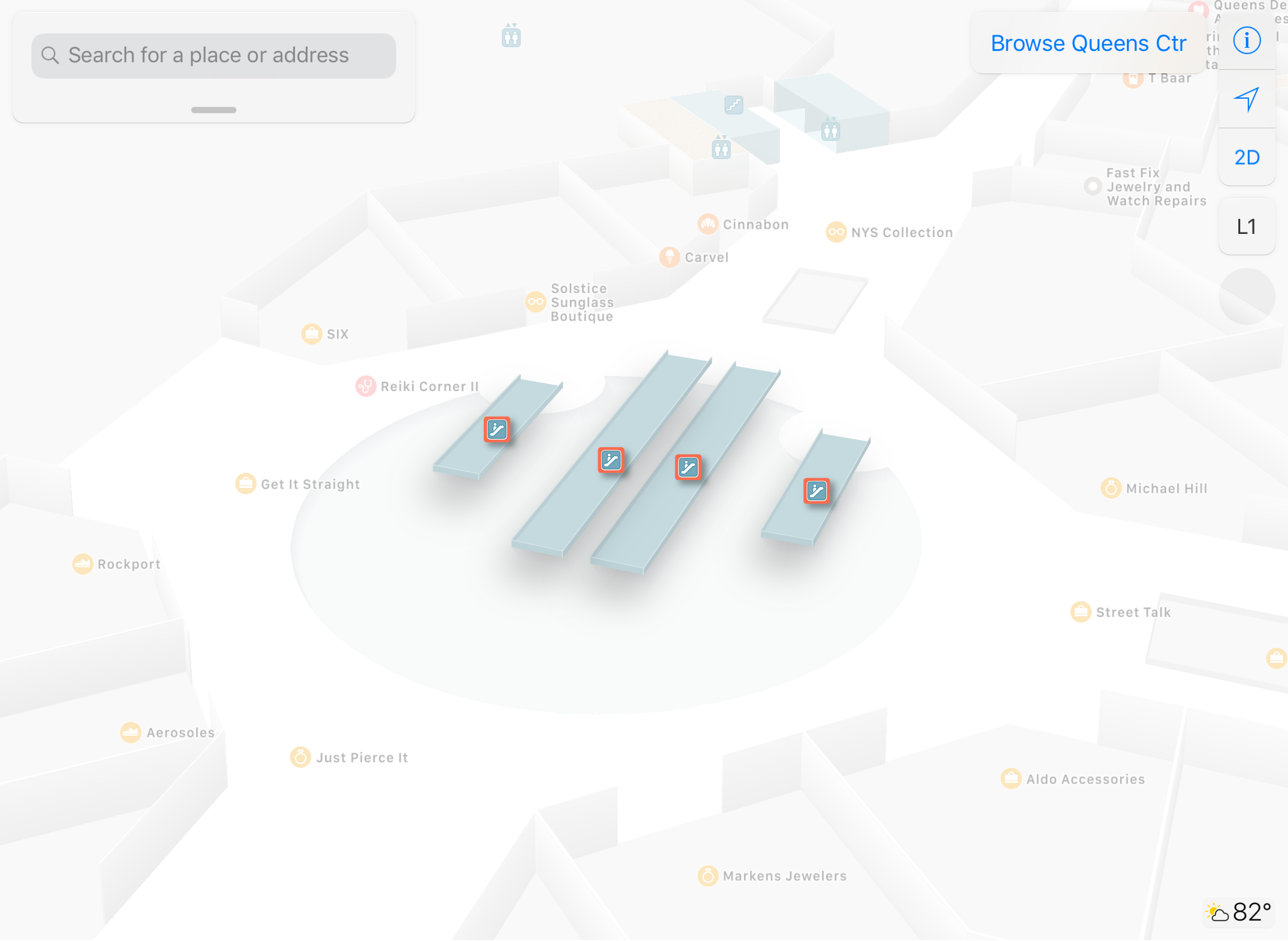
Illustration
"escalator" Units that touch. Only a single "escalator" Unit possesses a display-point which is centrally positioned among the "escalator" Units.
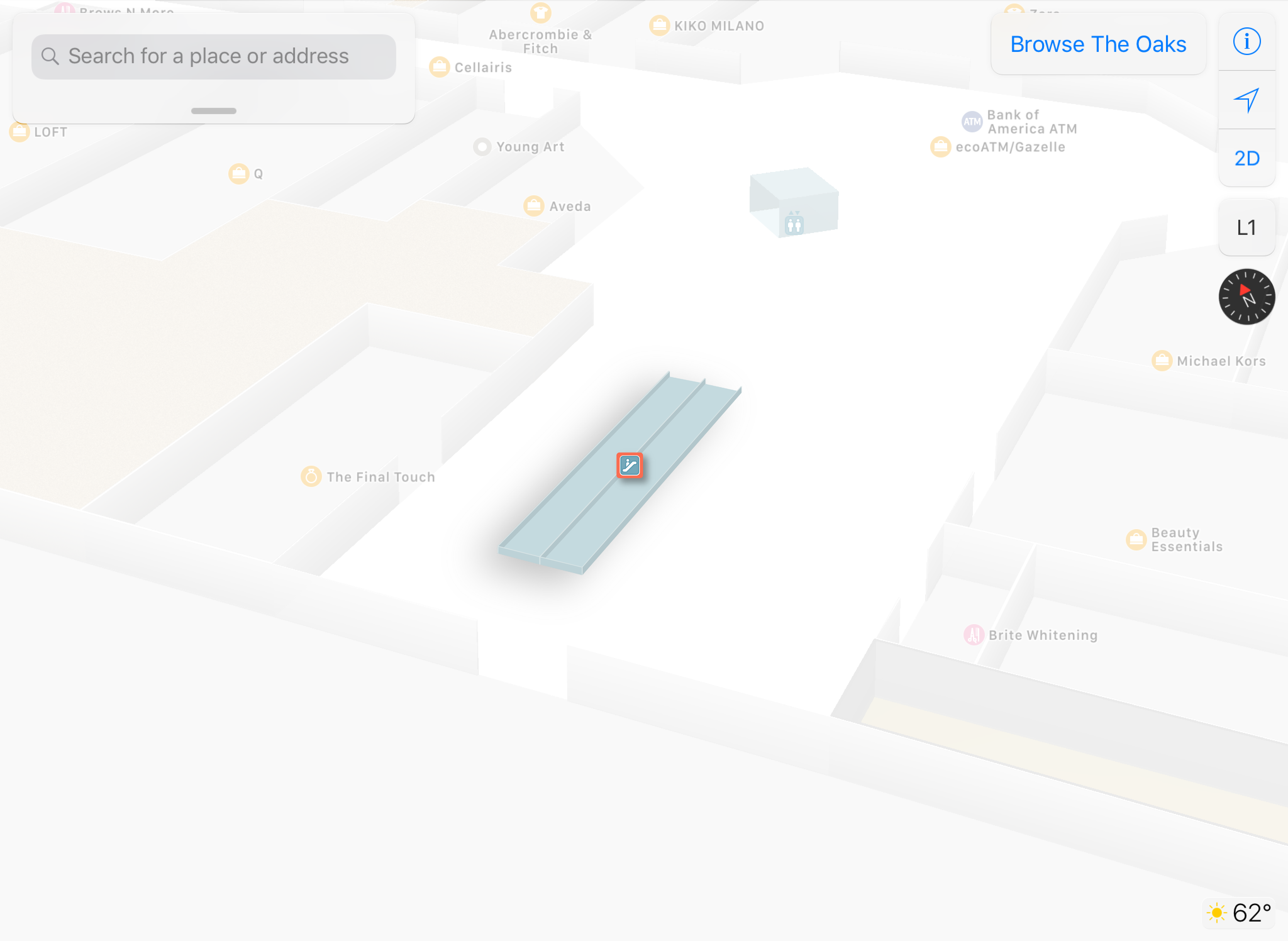
Exhibit (Amenity)
Amenity category. "exhibit" models the presence and approximate point location of "...an object, work of art, activity, artifact or poster designed to demonstrate a concept or show an example." Reference.
Exhibit (Section)
Section category. "exhibit" models the presence and approximate thematic extent of an open or semi-enclosed environment containing an exhibit.
Exhibition
Section category. "exhibition" models the presence and approximate thematic extent of an open or semi-enclosed environment whose intended purpose is the "...organized presentation and display of a selection of items."
Extrude, Extruded, Extrusion
The stretching of a flat, two-dimensional feature in a vertical direction to a pre-determined height to create a three-dimensional view of the feature.
Illustration
Several feature types extruded to a pre-configured height.
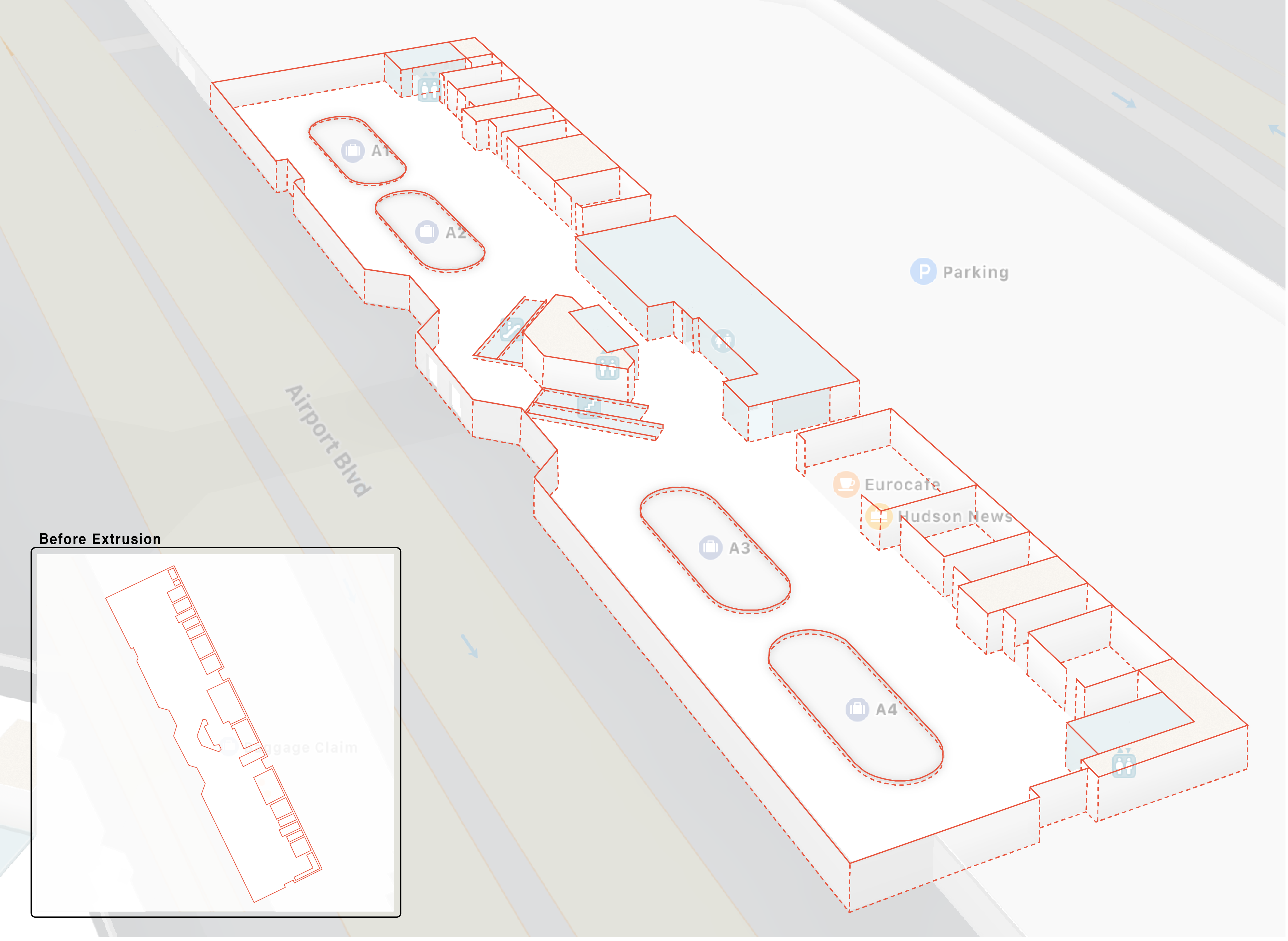
F
Facade
Fare Gate
Amenity category. "faregate" models the presence and approximate point location of equipment that supports a fully automated or manned fare gate operation.
Illustration
Options exist when considering how to map the presence of fare gates in this physical environment.
- Capture a
"faregate"and"faregate.oversized"Amenity. Note: Not advisable due to possible map label collision - Capture a single
"faregate"Amenity
The existence of services to persons that experience disabilities is evident in this physical environment. To model these services:
- Capture a
"faregate"Amenity - Capture individual Opening features for each faregate
- On one (1) Opening, set accessibility category to
"wheelchair"and"tactilepaving" - On each Opening, set Door type
"turnstile.waistheight". This is the preferred approach
In a transit station context, spaces beyond the fare gates are candidates for capture within a "paidarea" Section and/or Geofence.
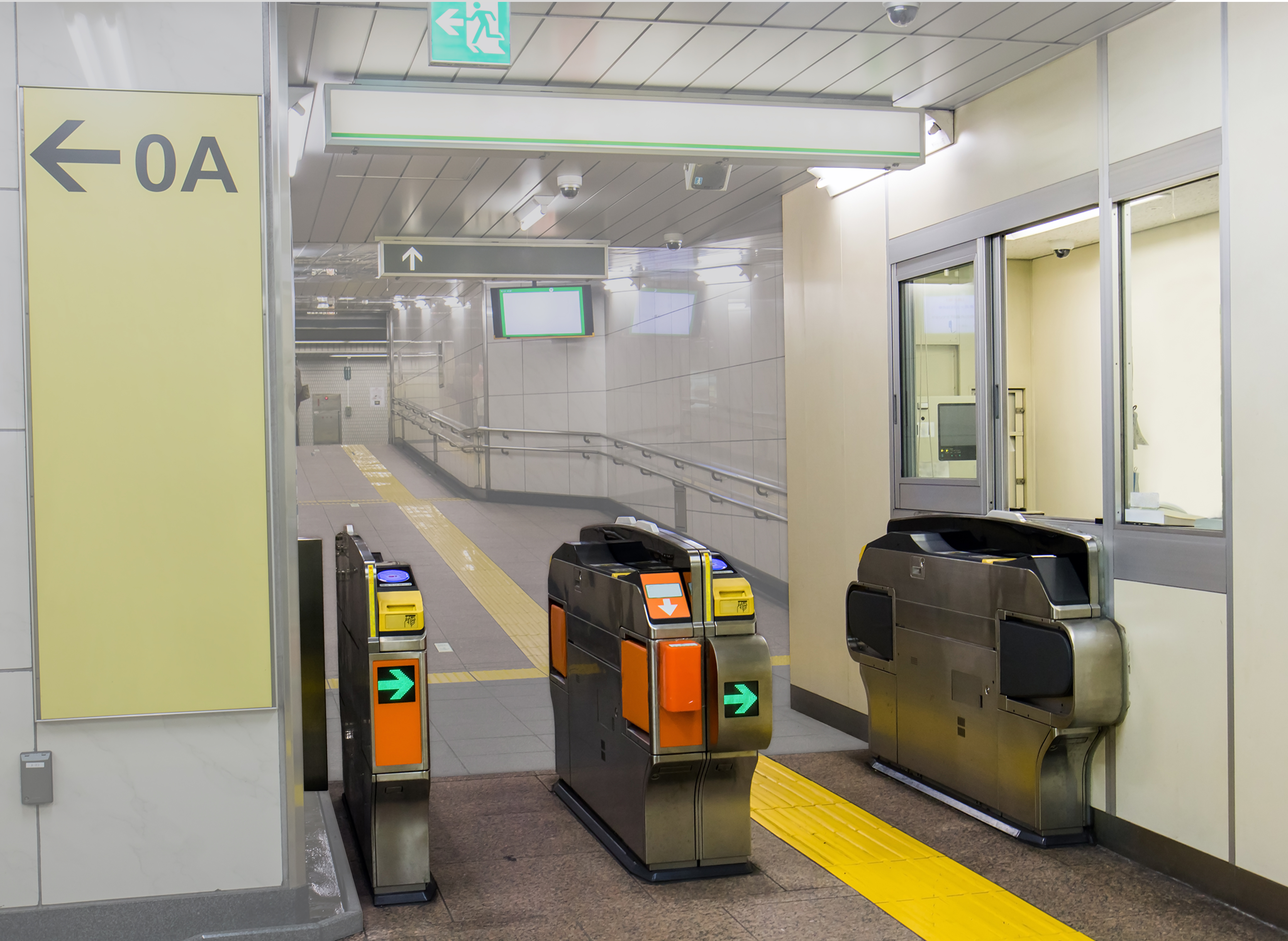
Fare Gate - Oversized
Amenity category. "faregate.oversized" models the presence and approximate point location of a fare gate operation that is specifically designed for a pedestrian that requires an entrance whose width is greater than the "standard" fare gate.
Field of Play (Amenity)
Amenity category. "fieldofplay" models the presence and approximate point location of a sports field. The "fieldofplay" concept is further "decomposed" into specific concepts:
"fieldofplay.americanfootball""fieldofplay.baseball""fieldofplay.basketball""fieldofplay.fieldhockey""fieldofplay.icehockey""fieldofplay.rugby""fieldofplay.soccer""fieldofplay.softball""fieldofplay.tennis""fieldofplay.trackfield""fieldofplay.volleyball"
Field of Play (Unit)
Unit category. "fieldofplay" models the presence and physical extent of a sports field. "fieldofplay" is not further defined in IMDF.
Fire Alarm Pull Station
Amenity category. "firealarmpullstation" models the presence and approximate point location of a fire protection device which, when activated, initiates an alarm on a fire alarm system.
First Aid (Amenity)
Amenity category. "firstaid" models the presence and approximate point location of:
- A medical support operation. Or,
- First Aid Kit
First Aid (Unit)
Unit category. "firstaid" models the presence and physical extent of a space containing a medical support operation.
Fitness Room
Unit category. "fitnessroom" models the presence and physical extent of an exercise/training room.
First Extinguisher
Amenity category. "fireextinguisher" models the presence and approximate point location of a fire protection device.
Fitting Room
Amenity category. "fittingroom" models the presence and approximate point location of one or more fitting room where a person may try on clothes or change clothes.
Fixture (Feature)
Feature reference.
Floor Naming Convention (USA/Canada)
-
Pedestrian environments:
Height Relative to Ground Name Short Name 4 floors above ground "Level 5""L5"3 floors above ground "Level 4""L4"2 floors above ground "Level 3""L3"1 floor above ground "Level 2""L2"Ground floor "Level 1""L1"1 floor below ground "Lower Level 1""LL1"2 floors below ground "Lower Level 2""LL2"3 floors below ground "Lower Level 3""LL3"4 floors below ground "Lower Level 4""LL4" -
Automobile parking environments:
Height Relative to Ground Name Short Name 4 floors above ground "Parking Level 5""P5"3 floors above ground "Parking Level 4""P4"2 floors above ground "Parking Level 3""P3"1 floor above ground "Parking Level 2""P2"Ground floor "Parking Level 1""P1"1 floor below ground "Lower Parking 1""LP1"2 floors below ground "Lower Parking 2""LP2"3 floors below ground "Lower Parking 3""LP3"4 floors below ground "Lower Parking 4""LP4"
Floor Naming Convention (Europe/Australasia)
-
Pedestrian environments:
Height Relative to Ground Name Short Name 4 floors above ground "Floor 4""4"3 floors above ground "Floor 3""3"2 floors above ground "Floor 2""2"1 floor above ground "Floor 1""1"Ground floor "Ground Floor""0"1 floor below ground "Lower Ground""LG"2 floors below ground "Basement 1""B1"3 floors below ground "Basement 2""B2"4 floors below ground "Basement 3""B3" -
Automobile parking environments:
Height Relative to Ground Name Short Name 4 floors above ground "Parking Floor 4""P4"3 floors above ground "Parking Floor 3""P3"2 floors above ground "Parking Floor 2""P2"1 floor above ground "Parking Floor 1""P1"Ground floor "Parking Ground Floor""P0"1 floor below ground "Parking Lower Ground""P-LG"2 floors below ground "Parking Basement 1""P-B1"3 floors below ground "Parking Basement 2""P-B2"4 floors below ground "Parking Basement 3""P-B3"
Foodservice (Amenity)
Amenity category. "foodservice" models the presence and approximate point location of a foodservice operation where a pedestrian can enjoy food and drink. The foodservice is offered by a foodservice company.
Foodservice (Unit)
Unit category. "foodservice" models the presence and physical extent of a foodservice operation where a pedestrian can enjoy food and drink. The foodservice is offered by a foodservice company.
Footbridge
Unit category. "footbridge" models the presence and physical extent of an open, semi- or enclosed footbridge that connects physical environments. Reference
Footprint (Feature)
Feature reference.
Footprint - Aerial
Footprint category. "aerial" models the referenced Building as "...represented as the shadow projected downward from an overhead light at infinity."
Illustration
A conceptual scenario where the described Building possesses two (2) Footprint features: "aerial" and "ground". The "aerial" Footprint is "...represented as the shadow projected downward from an overhead light at infinity."
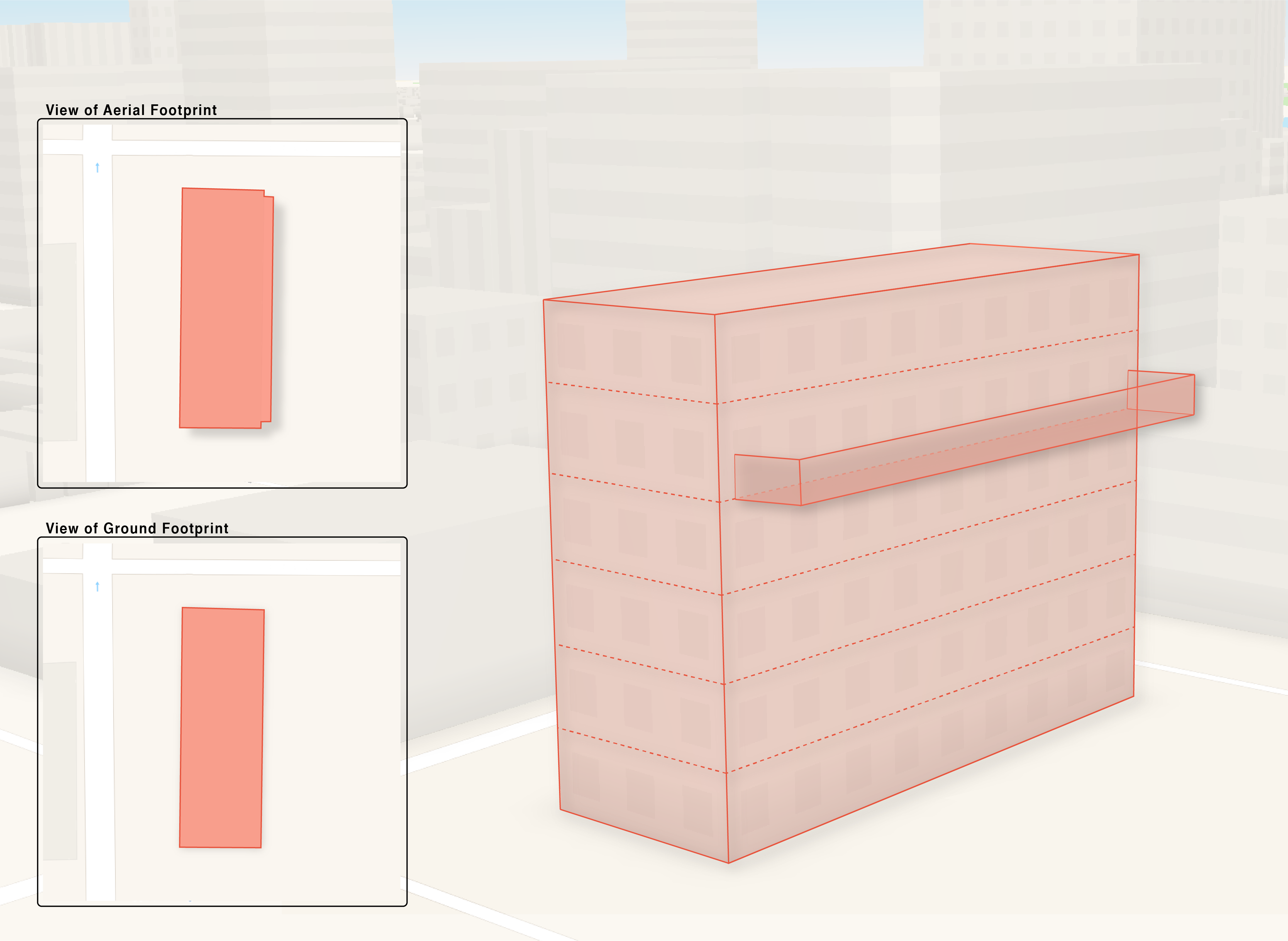
Footprint - Ground
Footprint category. "ground" models the referenced Building using the actual physical extent at ground-level.
Illustration
A conceptual scenario where the described Building possesses two (2) Footprint features: "ground" and "subterranean". (The third, "aerial", may be derived from "ground".)
The "subterranean" Footprint is derived "...from the maximum extent of all floors, modeled as one or more Level, that exist below ground." In this conceptual scenario, the Footprint is derived from a single Level.
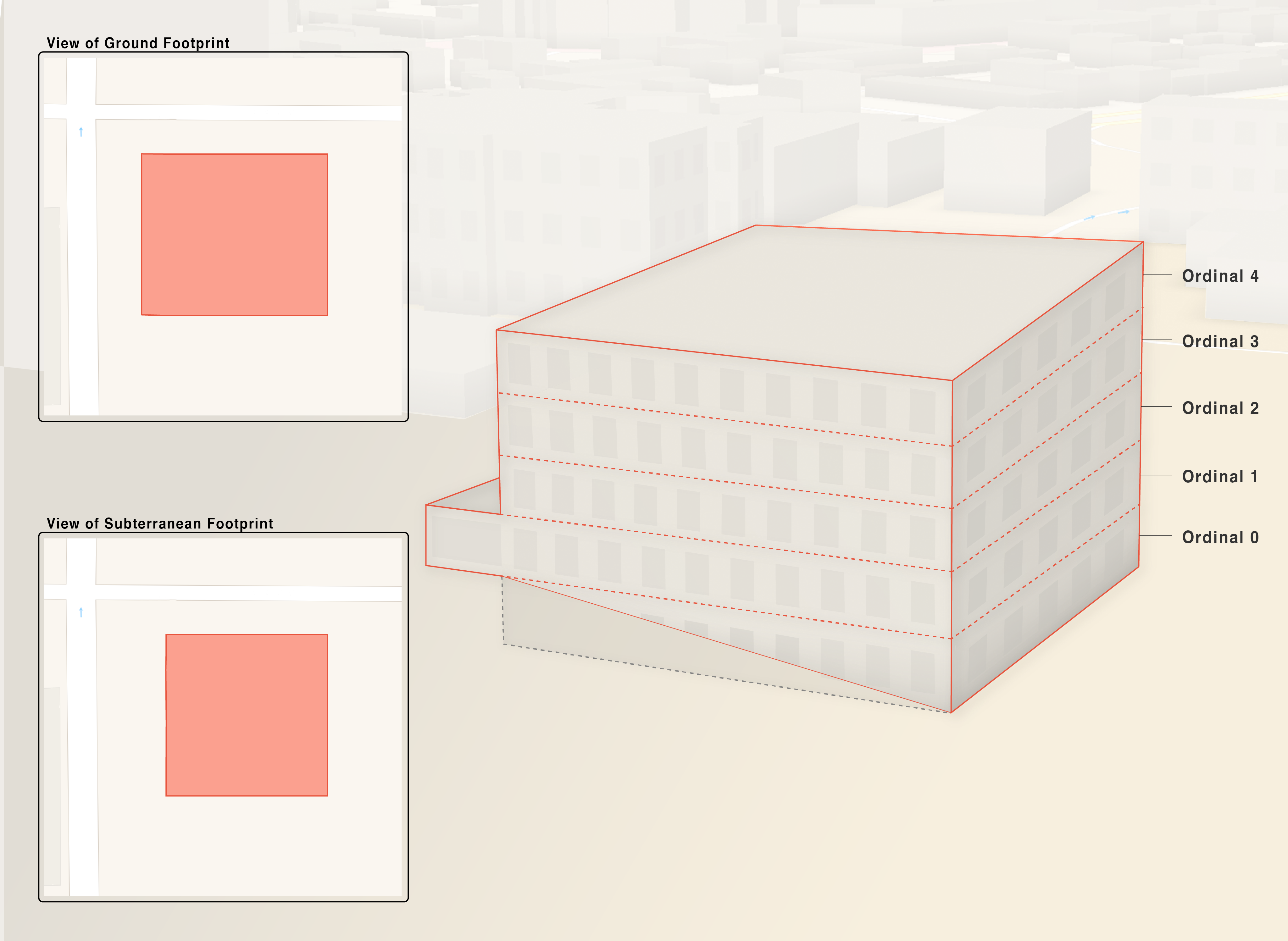
Footprint - Subterranean
Footprint category. Derived from the maximum extent of all floors, modeled as one or more Level, that exist below ground-level.
Furniture
Fixture category. "furniture" models the presence and physical extent of moveable or built-in furniture and appliances. Built-in furniture/appliances includes, but is not limited to:
- Cabinets, office and restaurant countertops, restaurant bars, shelving, bookcases, display cases, lockers, and large kitchen appliances
Moveable furniture/appliances includes, but is not limited to: * Unassigned desks/work surfaces, tables, filing cabinets, and large kitchen appliances
Furniture - Desk
Fixture category. "desk" models the presence and physical extent of an individual or shared work surface or desk.
Illustration
Several "desk" Fixtures within a "walkway" Unit.
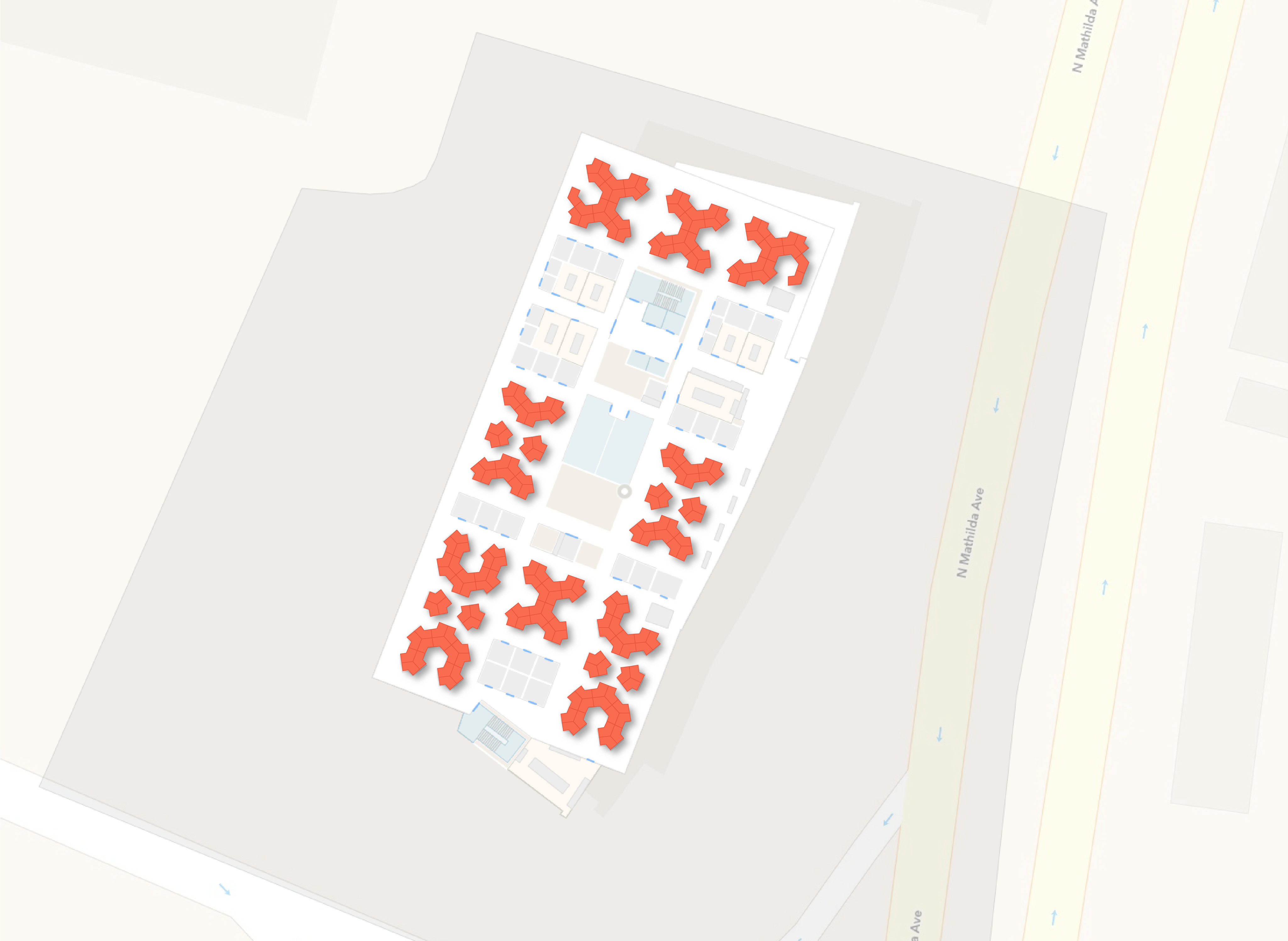
G
Gate Area (Amenity)
Amenity category. "gatearea" models the presence and point location of an open or semi-enclosed environment containing a collection of operationally related gate holding areas.
Gate Area (Section)
Section category. "gatearea" models the presence and approximate extent of an open or semi-enclosed environment containing a collection of operationally related gate holding areas.
Illustration
A "gatearea" Section within a "departures" Level. The Section models an operational theme wherein boarding gates share a common identity which is the terminal name.
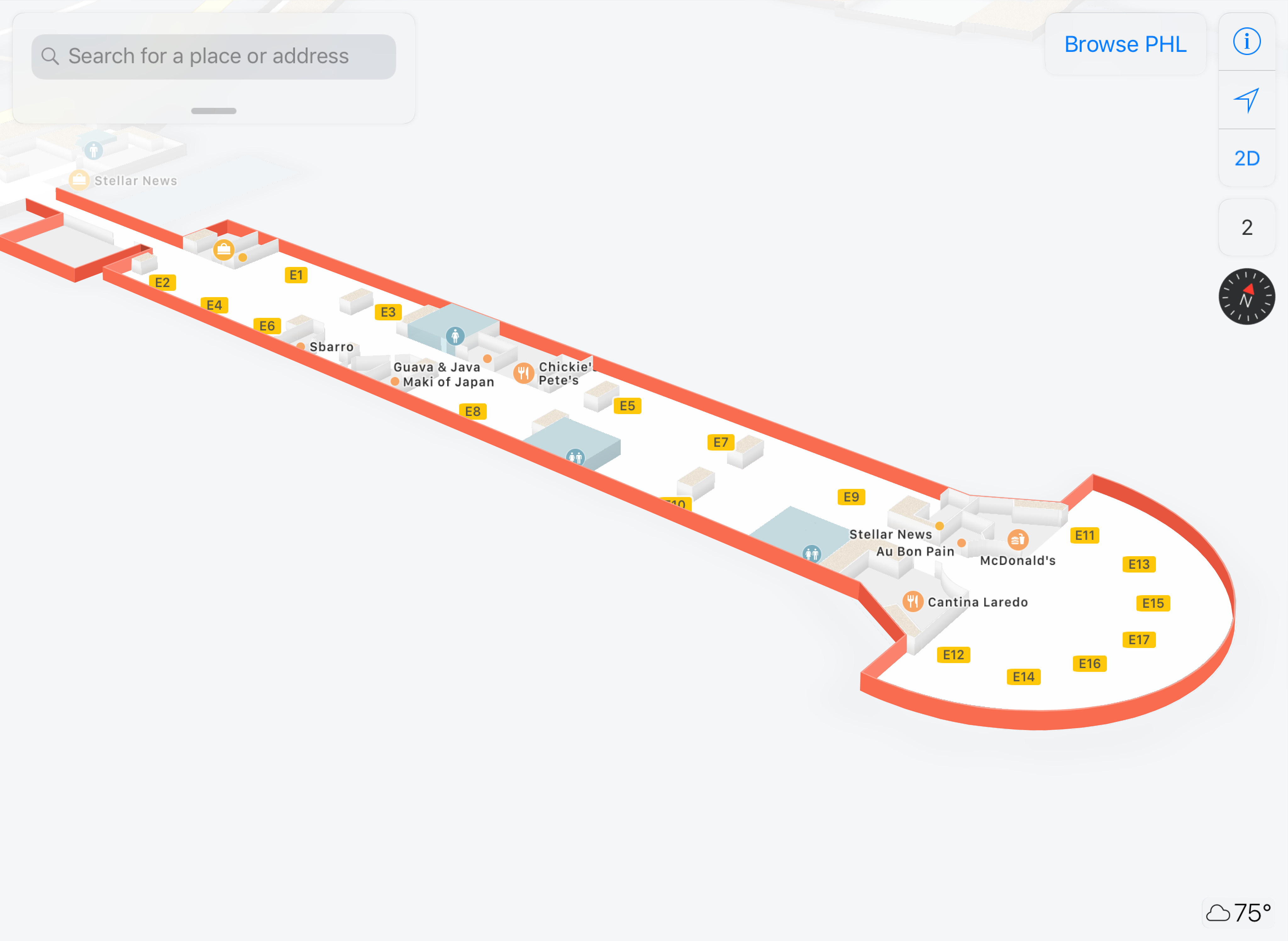
Gate Holding Area
Section category. "gatearea.holding" models the presence and approximate thematic extent of an open or semi-enclosed environment containing a single gate holding area. The function of the gate holding area is to "hold" persons that are expected to pass through a single boarding gate.
Geofence (Feature)
A Geofence is a virtual boundary. The purpose of the Geofence is to attribute applicable features, that fall within its boundary, with characteristics held by the Geofence itself. A Geofence can support:
- Location "awareness" among features
- Location-based services
- Query and find by location functionality
Geofence (Geofence)
Geofence category. "geofence" models the extent of a geofence. "geofence" should be used when the environment cannot be classified using any other category in the hierarchy. "geofence" is not further defined in IMDF.
Government Facility
Venue category.
Grade
Ground Truth
Ground Transportation
Amenity category. "groundtransportation" models the presence and approximate point location of an area where a general set of ground transportation services exist.
Guest Services
Amenity category. "guestservices" models the presence and approximate point location of a guest service operation.
H
Hand Sanitizer Station
Amenity category. "handsanitizerstation" models the presence and approximate point location of a hand sanitizer dispensing station.
Healthcare Facility
Venue category.
Health Screening
Amenity category. "healthscreening" models the presence and approximate point location of personnel/equipment that supports a health screening operation.
Hearing
Accessibility category. "hearing" describes the presence of a service provided to a pedestrian with a hearing disability. "hearing" should be used when the service cannot be classified using any other accessibility category. "hearing" is not further defined in IMDF.
Hearing - Assisted
Accessibility category. "assisted.listening" describes the presence of an assisted listening service. "assisted.listening" should be used when the type of assisted listening service is unknown.
Hearing - Hearing Loop
Accessibility category. "hearingloop" describes the presence of a telephone that offers a Hearing Loop.
Hearing - Sign Language Interpreter
Accessibility category. "signlanginterpreter" describes the presence of a sign language interpreter service.
Hearing - TDD
Accessibility category. "tdd" describes the presence of a telephone device for the deaf which is a device used for text communications along a telephone line.
Hearing - TRS
Accessibility category. "trs" describes the presence of a Telecommunications Relay Service which is a telephone service that allows persons with hearing or speech disabilities to place and receive telephone calls.
Hearing - Volume
Accessibility category. "volume" describes the presence of a specialized telephone for persons with impaired hearing.
Hotel
Venue category.
Hoteling
Amenity category. "hoteling" models the presence and approximate point location of:
- A reservation-based unassigned work surface.
Hours
hours is a property of the following feature types:
- Venue
- Occupant
- Amenity
- Relationship
Huddle Room
Unit category. "huddleroom" models the presence and physical extent of an enclosed meeting space. "huddleroom" models the following types of meeting space:
- An enclosed Meeting Space suitable for ad hoc, informal meetings
I
Immigration (Amenity)
Amenity category. "immigration" models the presence and approximate point location of an immigration operation. (Also known as "Passport Control.")
Illustration
In this physical environment an "immigration" Amenity point would be appropriate to model the existence of a collection of automated systems that support the immigration operation.
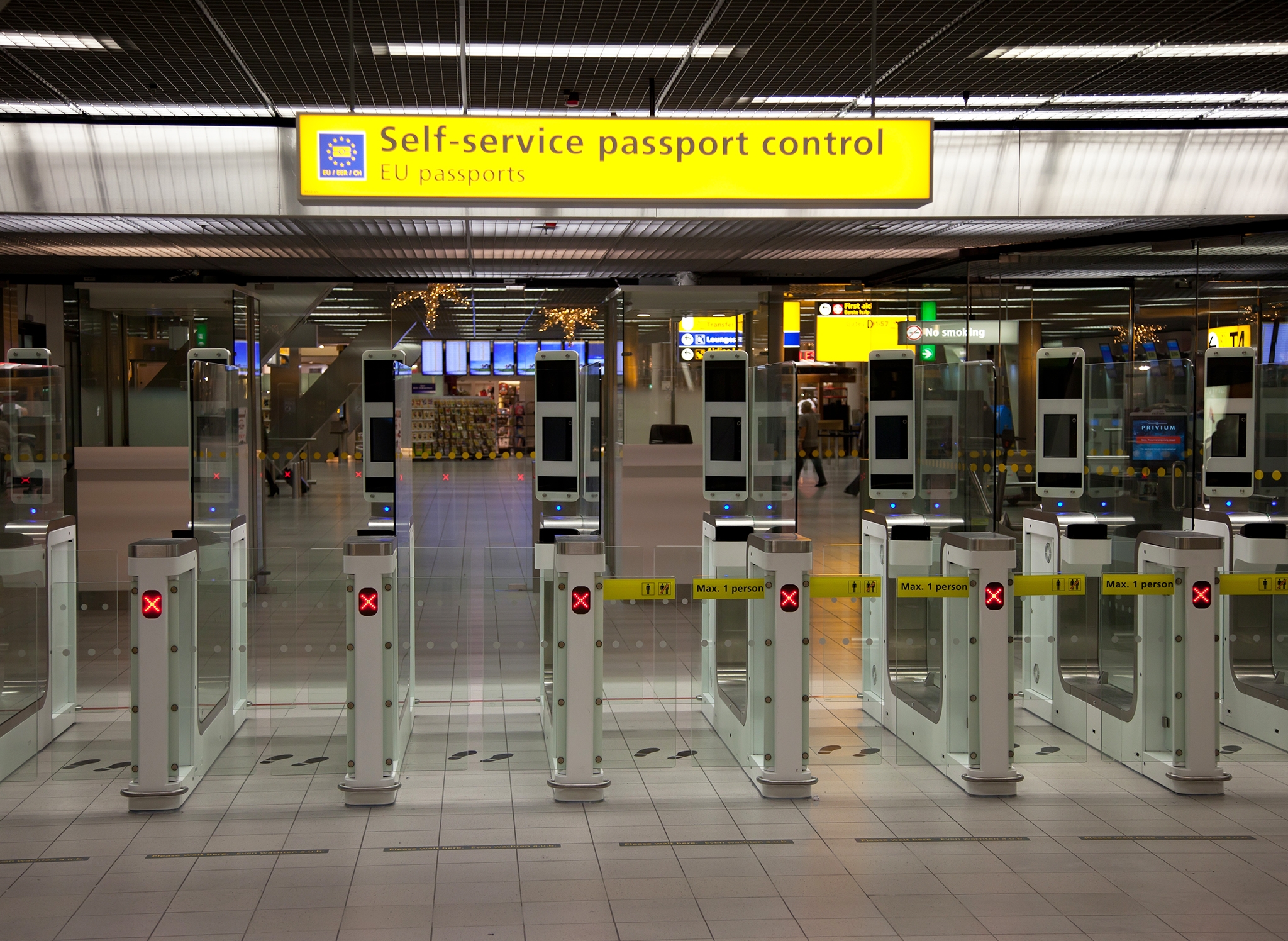
Immigration (Section)
Section category. "immigration" models the presence and approximate thematic extent of an open or semi-enclosed environment containing an immigration operation.
Illustration
An operational theme that is suitable for capture as a single contiguous "immigration" Section. In this physical environment, the size of each inspection desk makes them a candidate for capture as individual "immigration.desk" Fixtures.
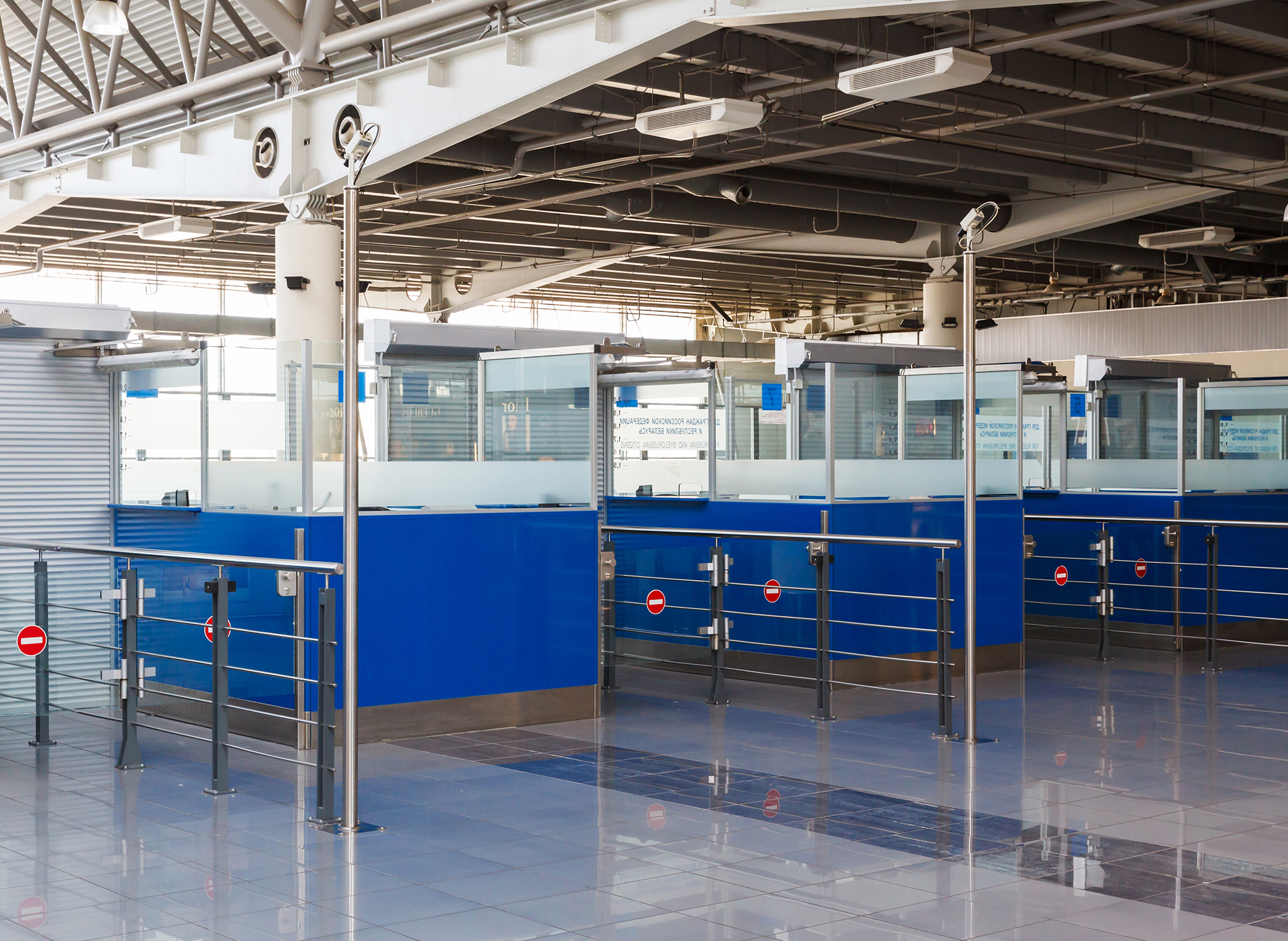
An "immigration" Section that defines the extent of this operational theme.
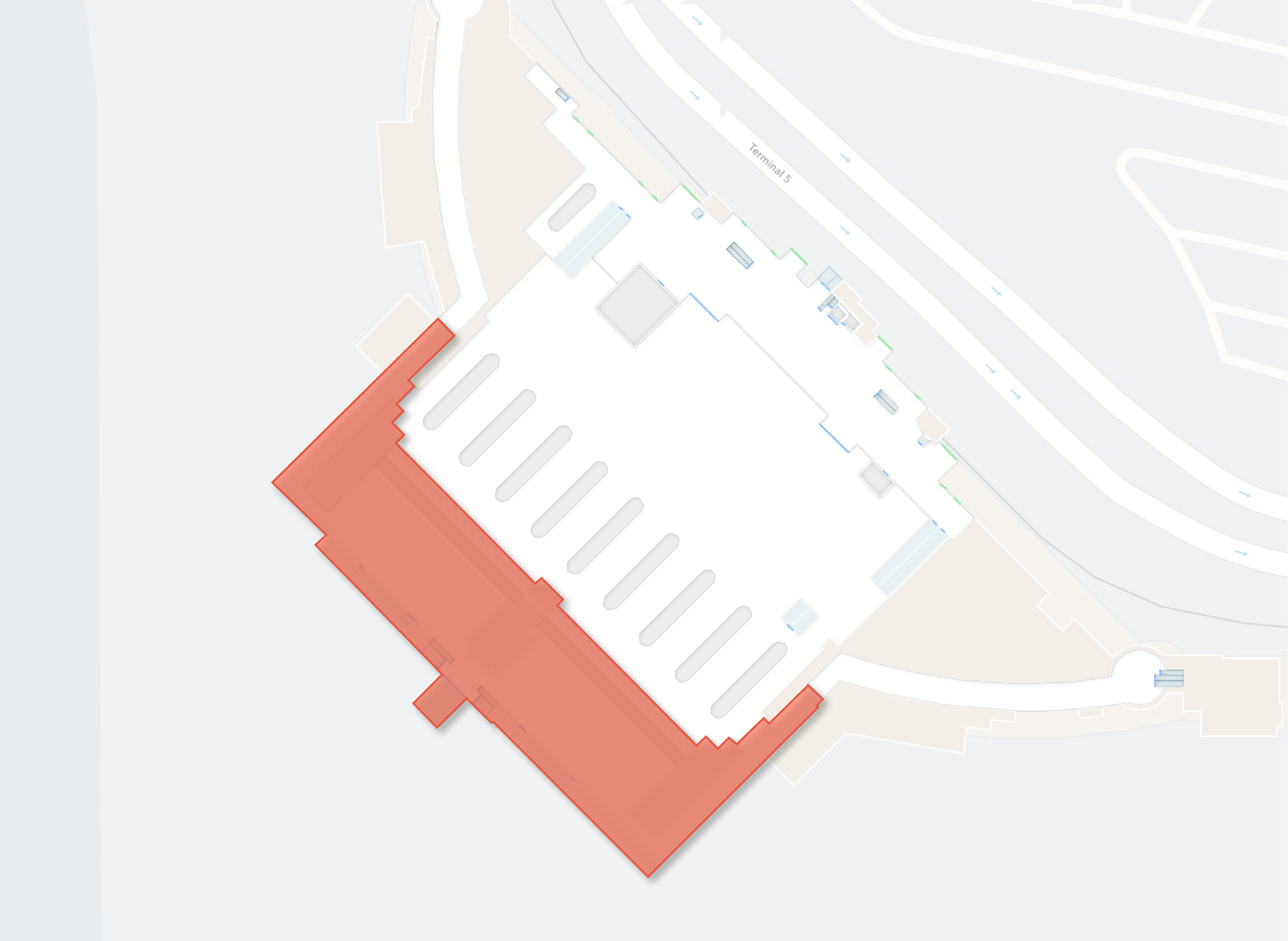
Immigration - Schengen
Section category. "immigration.schengen" models the presence and approximate thematic extent of an open or semi-enclosed environment containing an immigration operation that "processes" pedestrians from multiple different countries in accordance with a legal framework that allows for a common visa policy.
Comment: Although "Schengen" describes a border control arrangement that exists in Europe, the same category can be used to describe a similar legal arrangement that exists amongst other countries around the world.
Immigration Desk
Fixture category. "immigration.desk" models the presence and physical extent of furniture that supports immigration (passport control) operations.
Illustration
"immigration.desk" Fixtures along with their respective display-points.
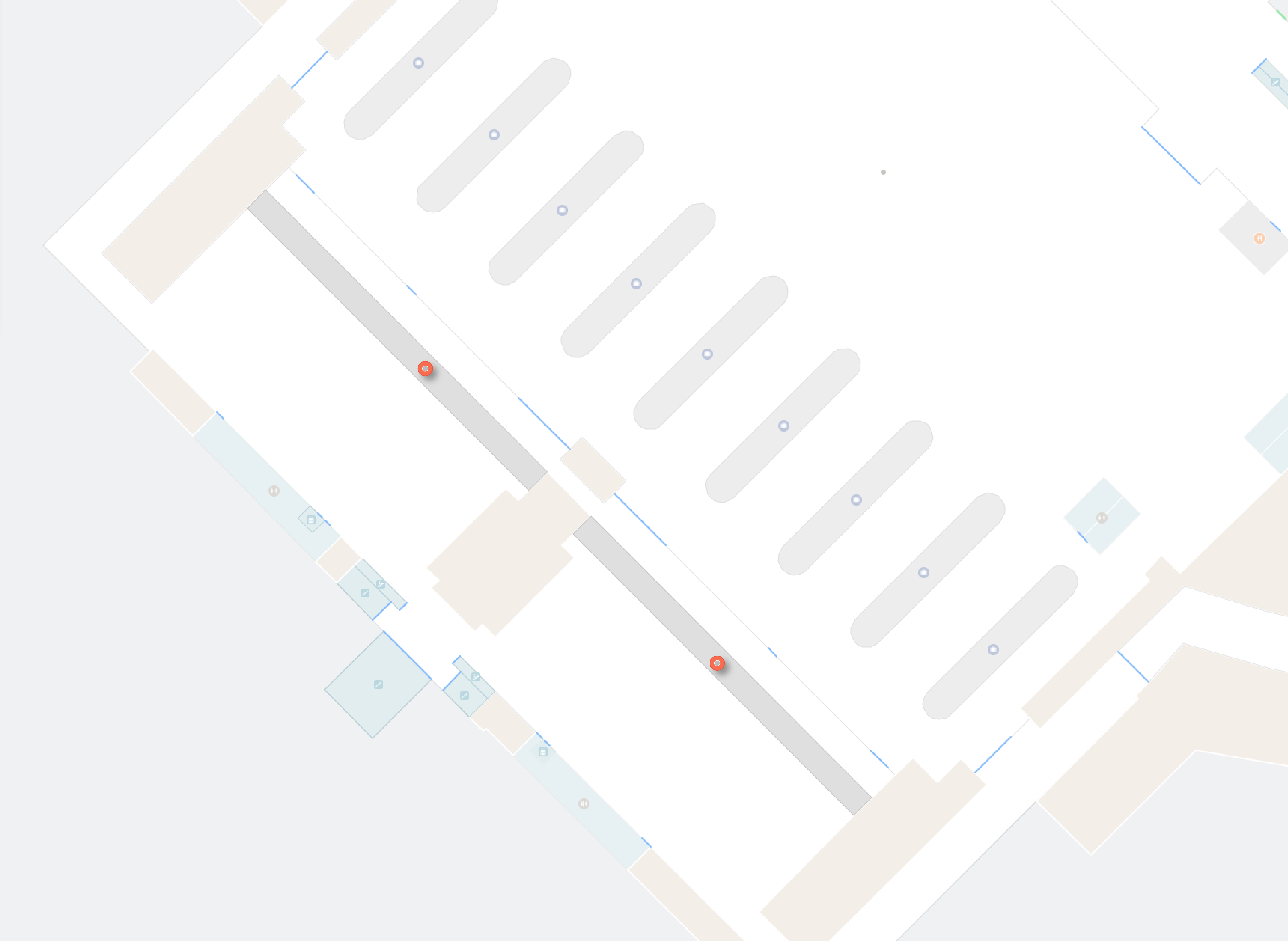
Incline Elevator
Indoor (Level)
An indoor Level (outdoor = false) models the presence and physical extent of a floor within a physical building.
Illustration
Indoor Level physically located inside a building that would reference a described Building.
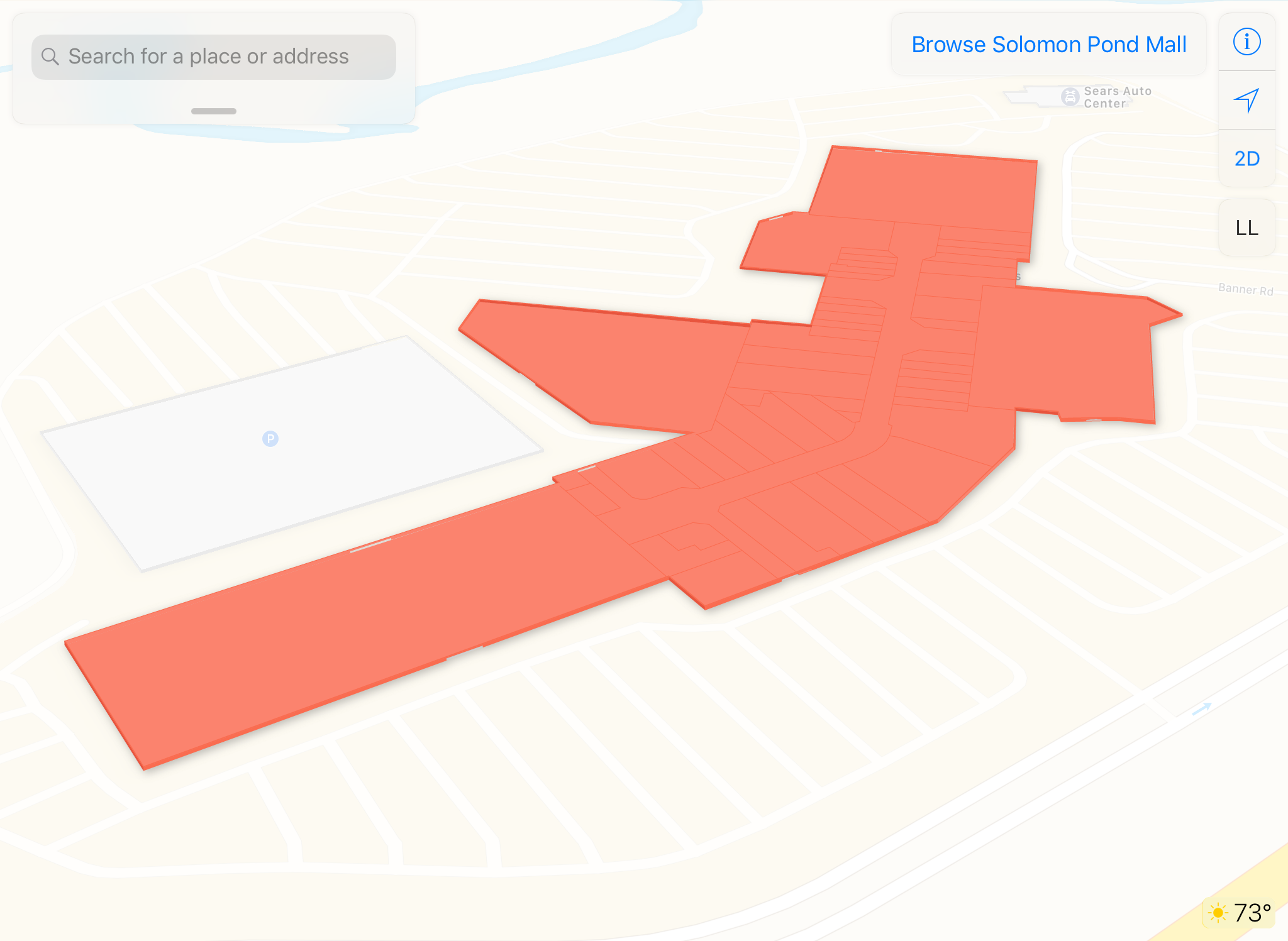
Indoor Mapping Data Format ("IMDF")
IMDF is comprised of the following GeoJSON and JSON feature types:
- JSON:
- Manifest
- GeoJSON - Polygonal:
- Fixture
- Footprint
- Geofence
- Kiosk
- Level
- Section
- Unit
- Venue
- GeoJSON - Point:
- Amenity
- Anchor
- GeoJSON - Lineal:
- Detail
- GeoJSON - Line-string:
- Opening
- GeoJSON - Unlocated Feature objects:
- Address
- Building
- Occupant
- Relationship
Information (Amenity)
Amenity category. "information" models the presence and approximate point location of a:
- Manned information desk
- Automated visitor and/or general information kiosk
Information (Section)
Section category. "information" models the presence and approximate thematic extent of an open or semi-enclosed environment whose intended purpose is the offering of information. "information" should be used when an area cannot be classified using any other category in the hierarchy. "information" is not further defined in IMDF.
Information - Baggage Information Display
Amenity category. "information.bid" models the presence and approximate point location of a Baggage Information Display (BID) system that displays baggage claim information.
Information - Car Rental
Amenity category. "information.carrental" models the presence and approximate point location of a manned desk or an automated information kiosk that:
- May exist in support of a particular brand name or is brand agnostic
- Is not concerned with delivering other information types (e.g., tourism, hotel or airline information)
Information - Multiple User Flight Information Display
Amenity category. "information.mufid" models the presence and approximate point location of a Multiple User Flight Information Display system that displays flight information to passengers and patrons by destination city, airline, arrival and departure times, gate, and status of the flight (on-time, delayed, cancelled, boarding, or landed).
Information - Multiple User Flight Information Display/Arrivals
Amenity category. "information.mufid.arrivals" models the presence and approximate point location of a Multiple User Flight Information Display system that displays flight information to passengers and patrons by arrival city, airline, arrival times, gate, and status of the flight (on-time, delayed, cancelled, boarding, or landed).
Information - Multiple User Flight Information Display/Departures
Amenity category. "information.mufid.departures" that models the presence and approximate point location of a Multiple User Flight Information Display system that displays flight information to passengers and patrons by departure city, airline, arrival times, gate, and status of the flight (on-time, delayed, cancelled, or boarding).
Information - Transportation
Amenity category. "information.transit" models the presence and approximate point location of a manned desk or an automated information kiosk that:
- May exist in support of a particular brand name or is brand agnostic
- Is not concerned with delivering other information types (e.g., tourism information, hotel.)
Inspection Desk
Fixture category. "inspection.desk" models the presence and physical extent of furniture that supports an inspection or security operation.
Inspection Station
Amenity category. "security.inspection" models the presence and approximate point location of an inspection operation.
- Customs Inspection (International Travel)
- National/Federal Inspection (Domestic Travel)
Intermediary
An intermediary is a single identified Opening, or one or more identified Unit, that participates in a Relationship with an origin and destination. A Relationship between an origin and a destination, via an intermediary, can be described using a Relationship.
Interior Ring
Inter-Venue Transit
A transportation system whose purpose is to facilitate the movement of pedestrians between parts of the same Venue.
Isolated
A feature that does not touch the same feature type. The concept may have a more specific meaning depending upon the IMDF rule.
J
Jet Bridge
K
Kiosk (Feature)
Feature reference.
Kiosk - Check-in
Fixture category. "checkin.kiosk" models the presence and physical extent of an automated or semi-automated check-in and/or ticketing kiosk operation.
Kitchen
Unit category. "kitchen" models the presence and physical extent of an enclosed space used to cook and prepare food.
L
Laboratory
Unit category. "laboratory" models the presence and physical extent of an enclosed space that provides controlled conditions in which scientific or technological research, experiments, and measurement may be performed.
Landmark
Amenity category. "landmark" models the presence and approximate point location of a recognizable or substantial natural or artificial feature that is useful for pedestrian navigation or orientation.
Leaseholder
Level (Feature)
Feature reference.
Level - Arrivals
Level category. "arrivals" models the presence and physical extent of a floor of a physical building whose intended purpose is to support the movement of pedestrians that are arriving from a location.
Level - Arrivals/Domestic
Level category. "arrivals.domestic" models the presence and physical extent of a floor of a physical building whose intended purpose is to support the movement of pedestrians that are arriving from a domestic location.
Level - Arrivals/International
Level category. "arrivals.intl" models the presence and physical extent of a floor of a physical building whose intended purpose is to support the movement of pedestrians that are arriving from an international location.
Level - Departures
Level category. "departures" models the presence and physical extent of a floor of a physical building whose intended purpose is to support the movement of pedestrians that are departing to a destination.
Illustration
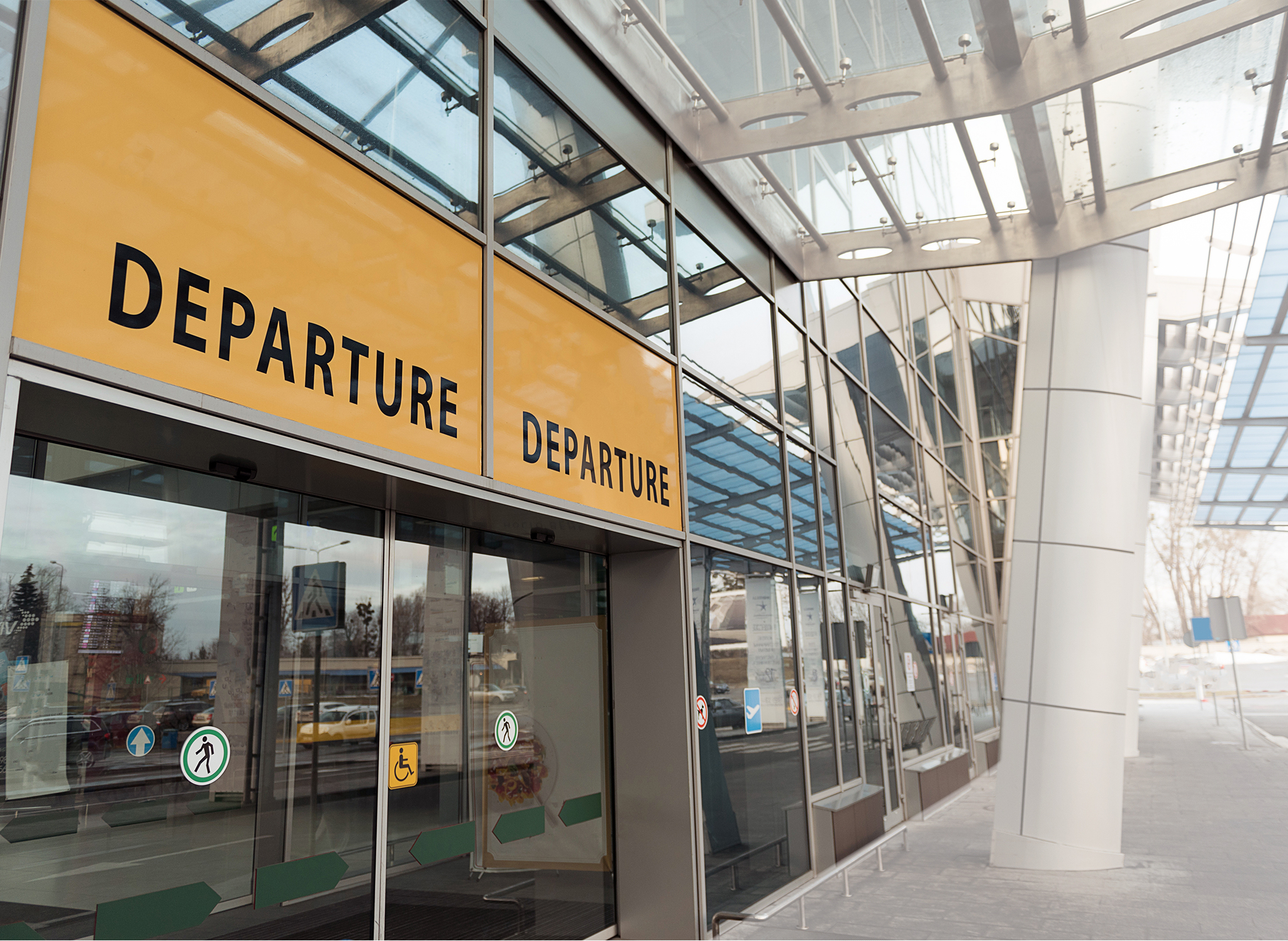
Level - Departures/Domestic
Level category. "departures.domestic" models the presence and physical extent of a floor of a physical building whose intended purpose is to support the movement of pedestrians that are departing to a domestic destination.
Level - Departures/International
Level category. "departures.intl" models the presence and physical extent of a floor of a physical building whose intended purpose is to support the movement of pedestrians that are departing to an international destination.
Level - Parking
Level category. "parking" models the presence and physical extent of a floor whose intended purpose is the storage of vehicles.
Illustration
In this scenario:
- Level
outdoor=false - The
"parking"Unit equals the Level - The
"parking"Unit possesses a display-point to be used as the curated point-based representation of the Unit

Illustration
A single, contiguous "parking" Level that models an outdoor vehicular parking environment at The Village At Corte Madera.
In this scenario:
- Level
outdoor=true - The
"parking"Unit equals the Level - The
"parking"Unit possesses a display-point to be used as the curated point-based representation of the Unit
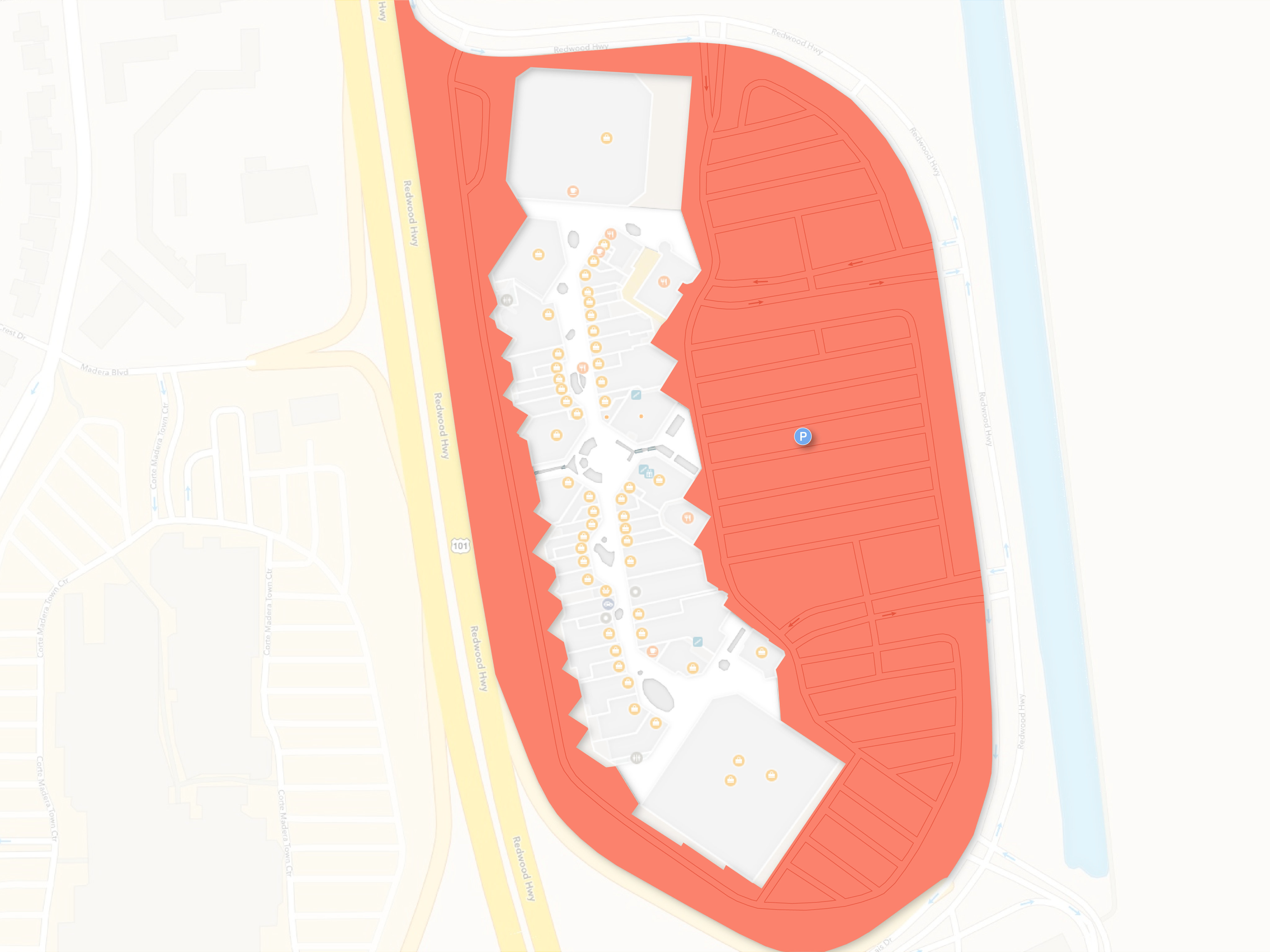
Level - Transit
Level category. "transit" models the presence and physical extent of a floor of a physical building whose intended purpose is to support the movement of pedestrians:
- Within or among different parts of the same Venue (inter-venue transit)
- Within, among and beyond the Venue
Illustration
A physical environment that may be captured as a "transit" Level. This Level would model the presence of an APM service that provides inter-venue transit between each described Building.

Library
Unit category. "library" models the presence and physical extent of an enclosed area containing sources of information.
Lobby
Unit category. "lobby" models the presence and physical extent of an enclosed foyer or entrance hall.
Localization
Lost & Found
Amenity category. "lostandfound" models the presence and approximate point location of a service where a pedestrian may retrieve personal belongings.
Lounge
Unit category. "lounge" models the presence and physical extent of a space where people can sit and relax. (See also Private Lounge)
M
Mailroom
Unit category. "mailroom" models the presence and physical extent of an enclosed space where:
- Incoming and outgoing mail is processed and sorted
- Incoming/outgoing mail is dropped-off/picked up
Meeting Point
Amenity category. "meetingpoint" models the presence and approximate point location of a defined place where people can meet.
Metadata
"Data describing data." The Venue Organization is responsible for defining the intended use, purpose and type(s) of content in a property that allows its capture. They are not defined by IMDF.
Mobility Rescue
Amenity category. "mobilityrescue" models the presence and approximate point location of an assembly area where persons that experience disabilities may be assisted during an emergency event.
Mother's Room (Amenity)
Amenity category. "mothersroom" models the presence and approximate point location of an enclosed space where a woman may breastfeed or use a breast pump in private.
Mother's Room (Unit)
Unit category. "mothersroom" models the presence and physical extent of an enclosed space where a woman may breastfeed or use a breast pump in private.
Movie Theater
Unit category. "movietheater" models the presence and physical extent of a room used to view films.
Moving Walkway (Amenity)
Amenity category. "movingwalkway" models the presence and approximate point location of one or more neighboring moving conveyor mechanism that transports pedestrians across a horizontal or inclined plane over a short to medium distance.
Moving Walkway (Unit)
Unit category. "movingwalkway" models the presence and physical extent of a single moving conveyor mechanism that transports people across a horizontal or inclined plane over a short to medium distance.
Illustration
Two (2) "movingwalkway" Units. Only a single "movingwalkway" Unit possesses a display-point which is centrally positioned among the "movingwalkway" Units.

Museum
Venue category.
N
Name
name contains the label that is associated with a physical object or service that is modeled. name stores ground truth and is expected to reflect what is physically present in reality and what should be displayed to a pedestrian via a mapping application. A name that is not consistent with ground truth disrupts cognitive recognition. name is a property of the following feature types:
- Amenity
- Building
- Fixture
- Footprint
- Geofence
- Kiosk
- Level
- Occupant
- Opening
- Section
- Unit
- Venue
Neighboring
In physical terms, "neighboring" is analogous to spaces separated by a wall or barrier.
Non-Public
An area/space that contains operational, administrative, and/or management functions whose environments, if mapped, would have little or no relevance from a pedestrian standpoint.
Illustration
Several Units ("nonpublic" category) that define the extent of non-public spaces. For aesthetic reasons, all neighboring non-public spaces are modeled as a single feature regardless of ownership and actual physical separation.
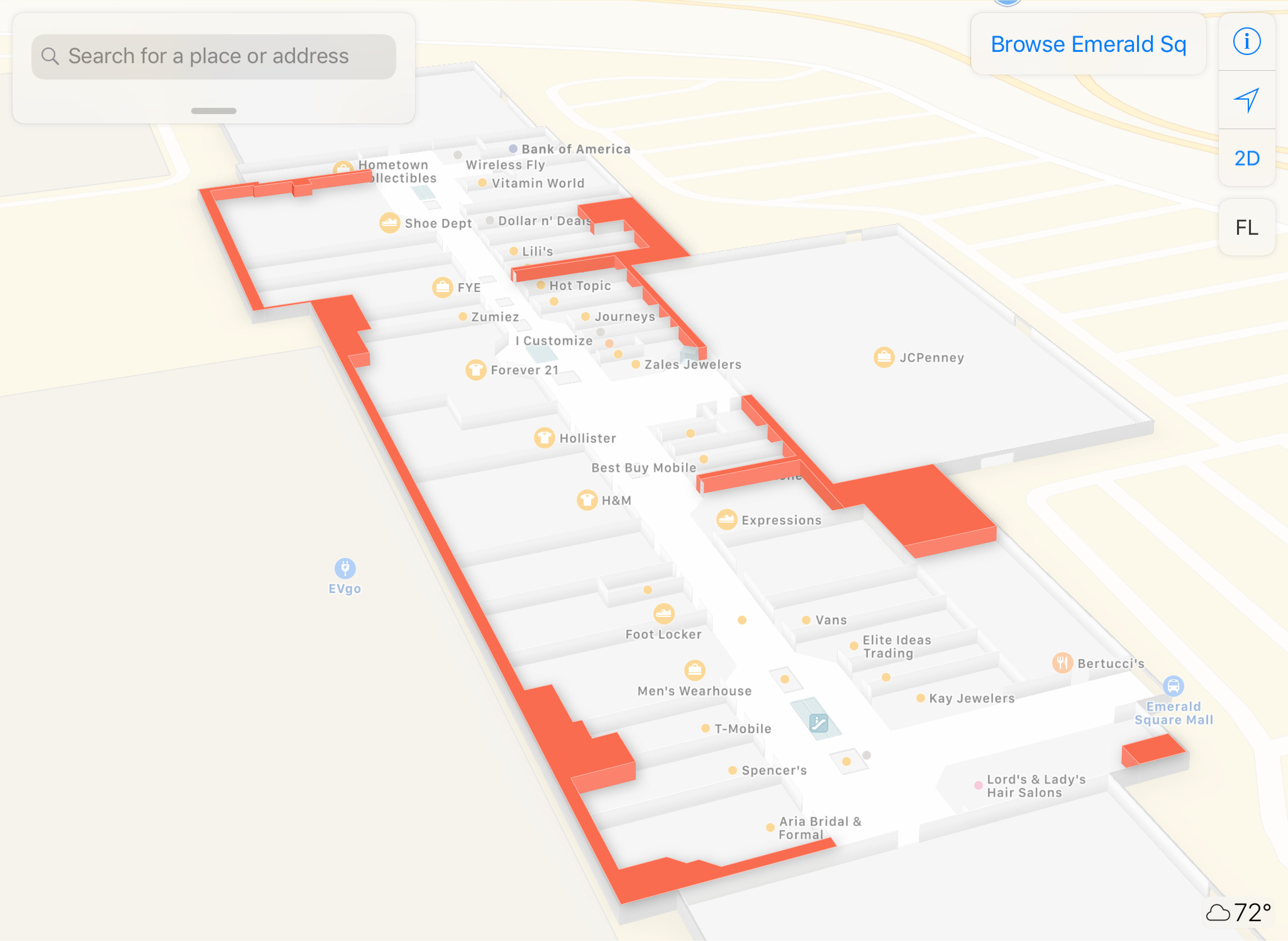
O
Obstruction
Fixture category. "obstruction" models the presence and physical extent of a physical, non-traversable object. "obstruction" should be used when an object cannot be classified using any other category in the hierarchy. "obstruction" is not further defined in IMDF.
Occupant (Feature)
Feature reference.
Illustration
Occupants whose position (via Anchor) within "room" Units on the Level is orderly/patterned to produce a desirable map aesthetic quality.
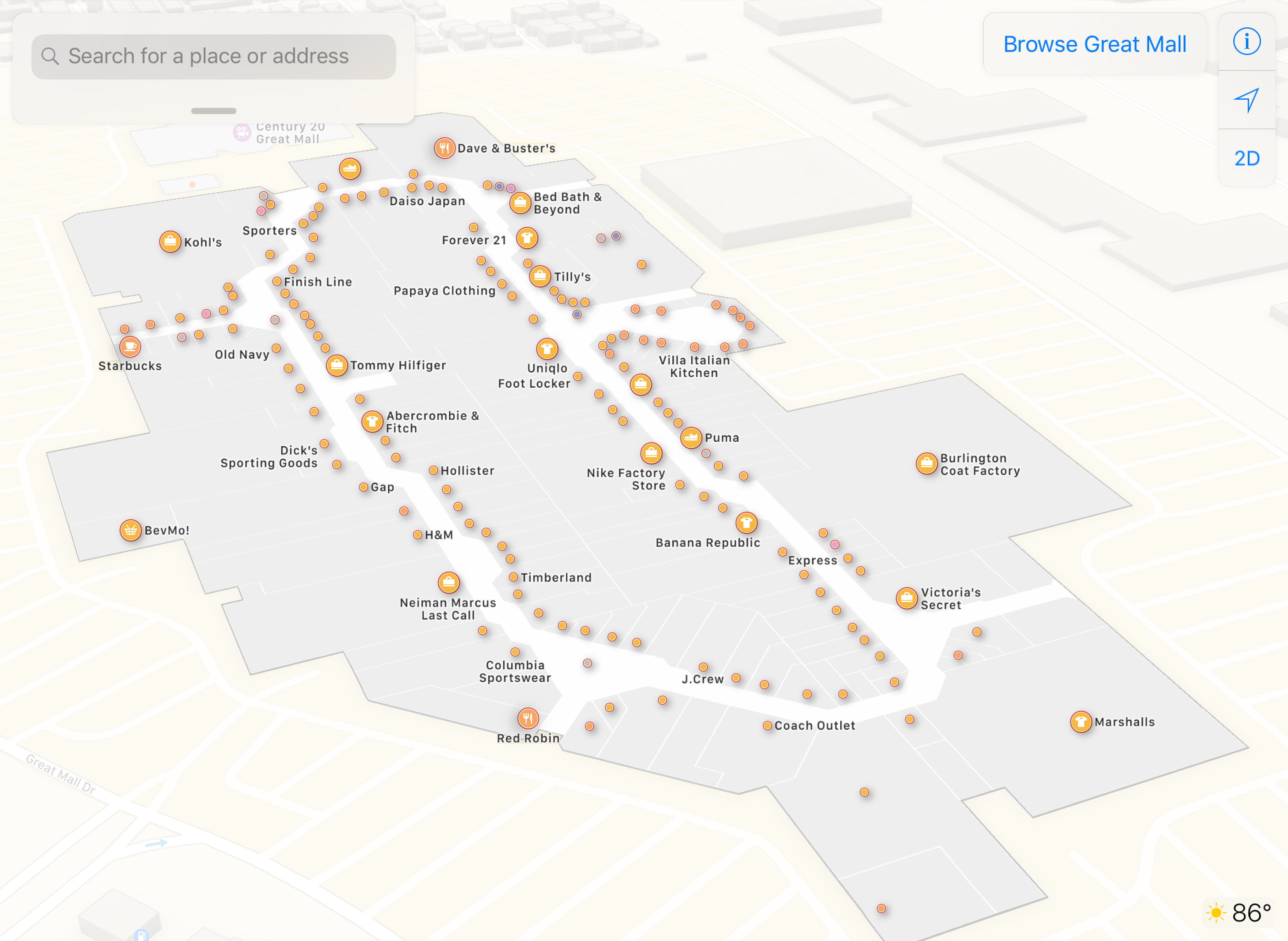
Office
Unit category. "office" models the presence and physical extent of an enclosed work space. "office" models:
- A private office: An enclosed work space for one person, suitable for activities which are confidential, demand a lot of concentration or include many small meetings
- A shared office: An enclosed work space for two or three people, suitable for semi-concentrated work and collaborative work in small groups
- A team room: An enclosed work space for four to ten people; suitable for teamwork which may be confidential and demands frequent internal communication
Opening (Feature)
Feature reference.
Opening - Automobile
Opening category. "automobile" models the presence and physical width of an entrance/exit that is intended for use by vehicles.
Illustration
An "automobile" Opening feature that models a physical entrance to a parking garage.
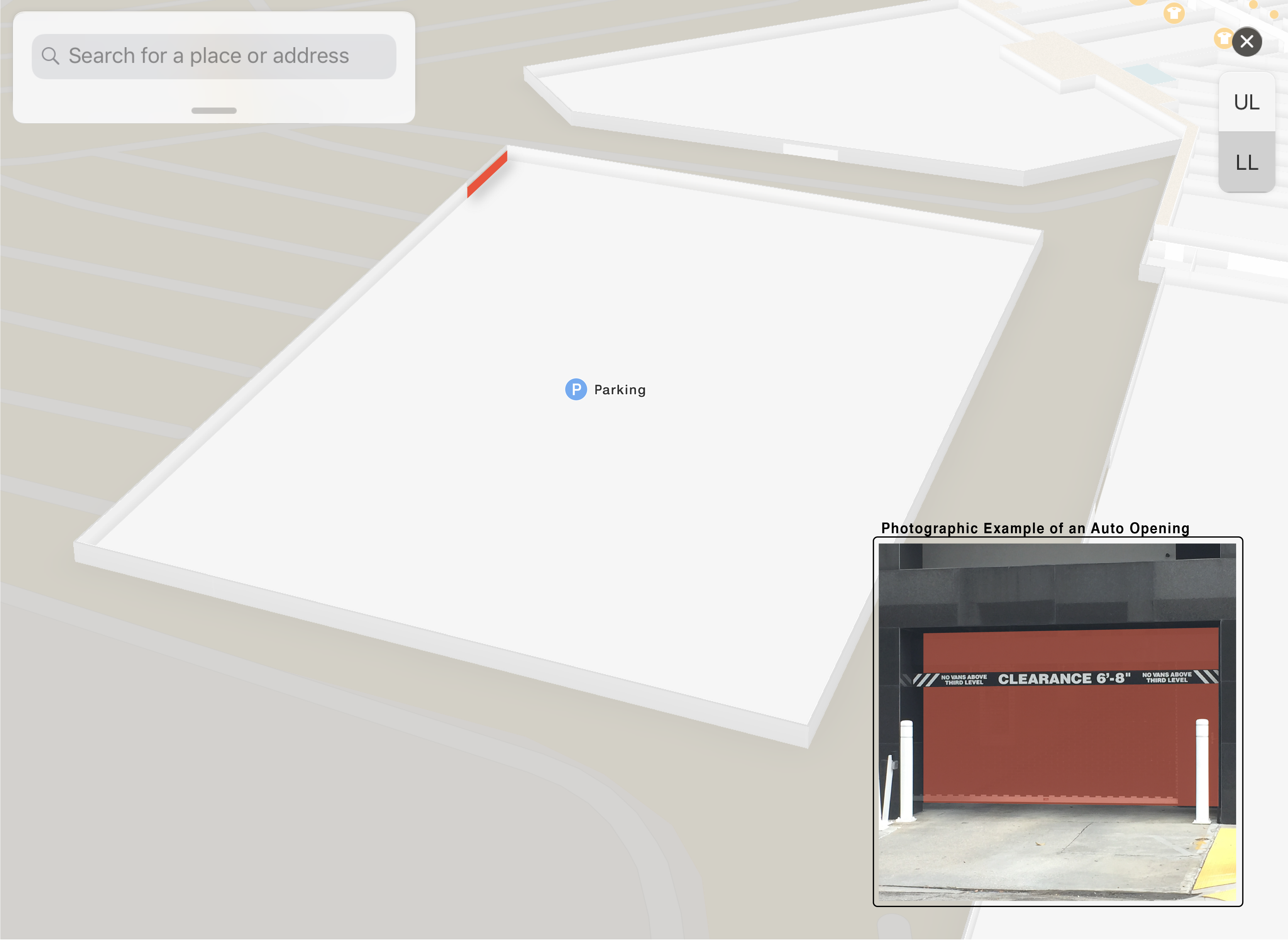
Opening - Bicycle
Opening category. "bicycle" models the presence and physical width of an entrance/exit that is intended for use by persons with bicycles.
Opening - Pedestrian
Opening category. "pedestrian" models the presence and physical extent of an entrance with or without a physical door. "pedestrian" should be used when the entrance cannot be classified using any other category. "pedestrian" is not further defined in IMDF.
Illustration
"pedestrian" Openings that model physical entrances to stores and restrooms inside a shopping center. Each Opening is covered by the boundary of a Unit.
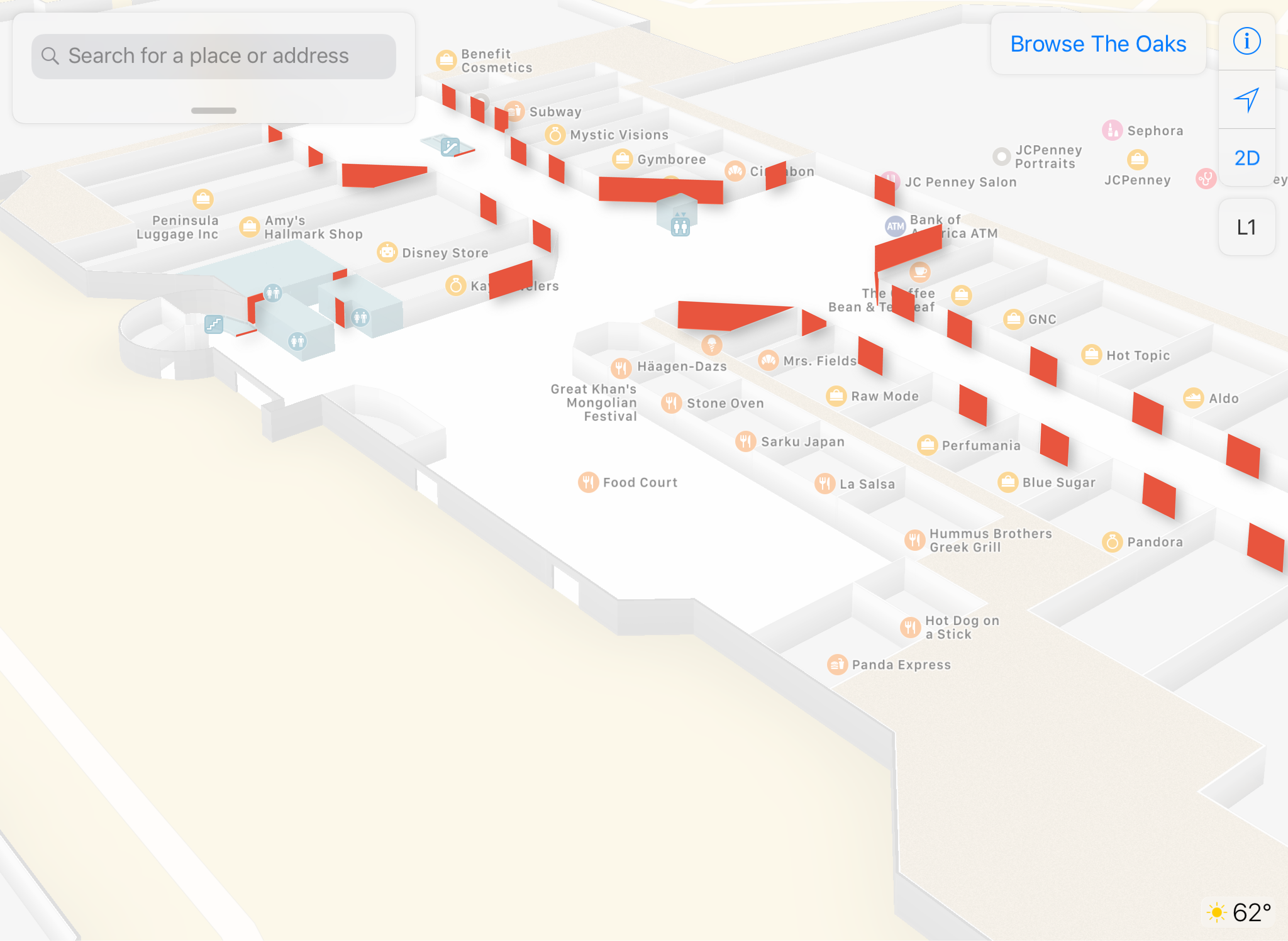
Opening - Emergency Exit
Opening category. "emergencyexit" describes an Opening that is specifically intended for emergency use by the Venue Organization.
Illustration
A sign-posted exit whose physical presence may be modeled as an "emergencyexit" Opening.
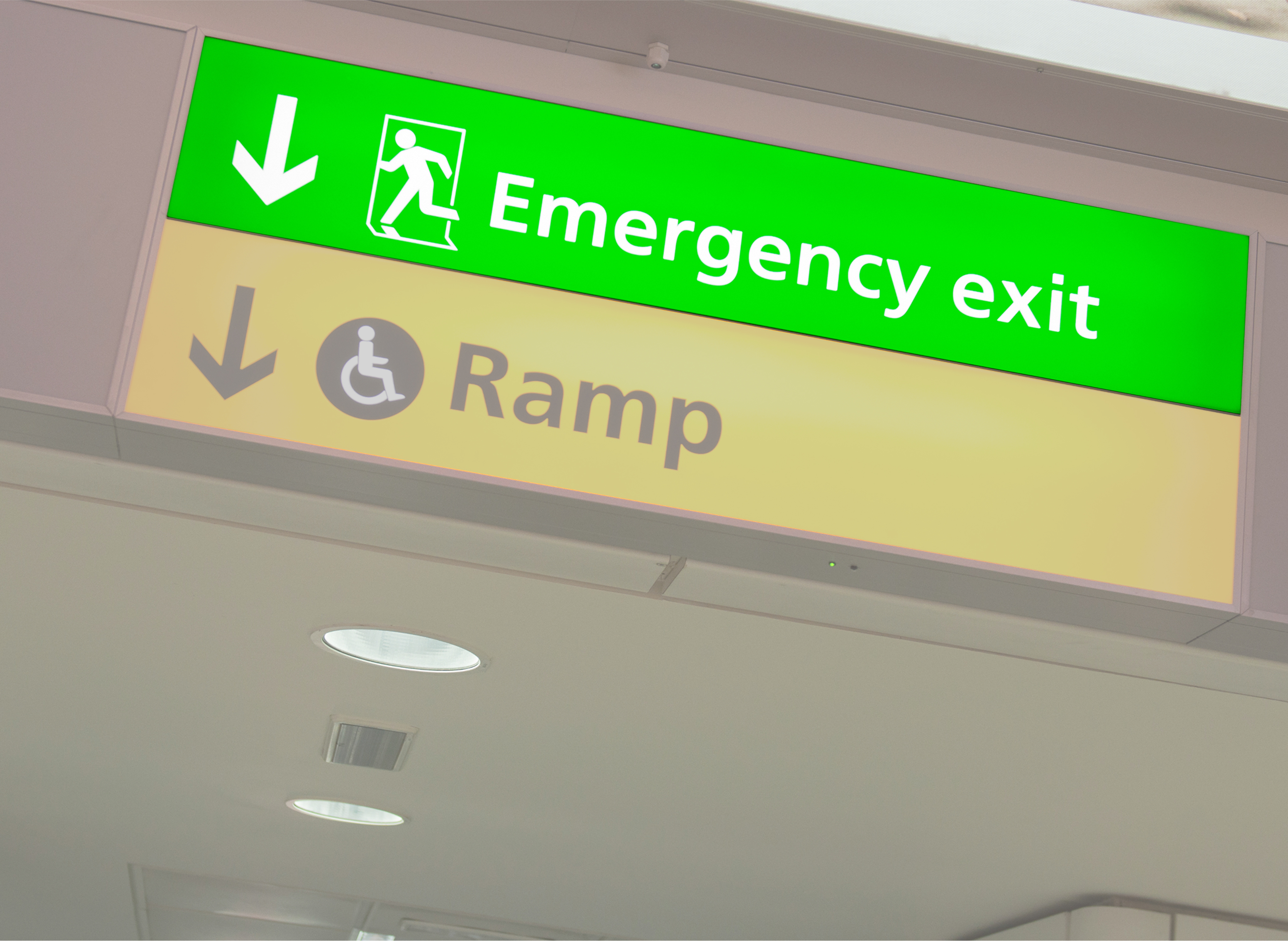
Opening - Pedestrian/Principal
Opening category. "pedestrian.principal" describes an Opening that is directly reachable from a physical road and/or external pedestrian network.
Illustration
Several "pedestrian.principal" Openings immediately reachable from the pedestrian and road network. All Openings are covered by the boundary of their respective Units.
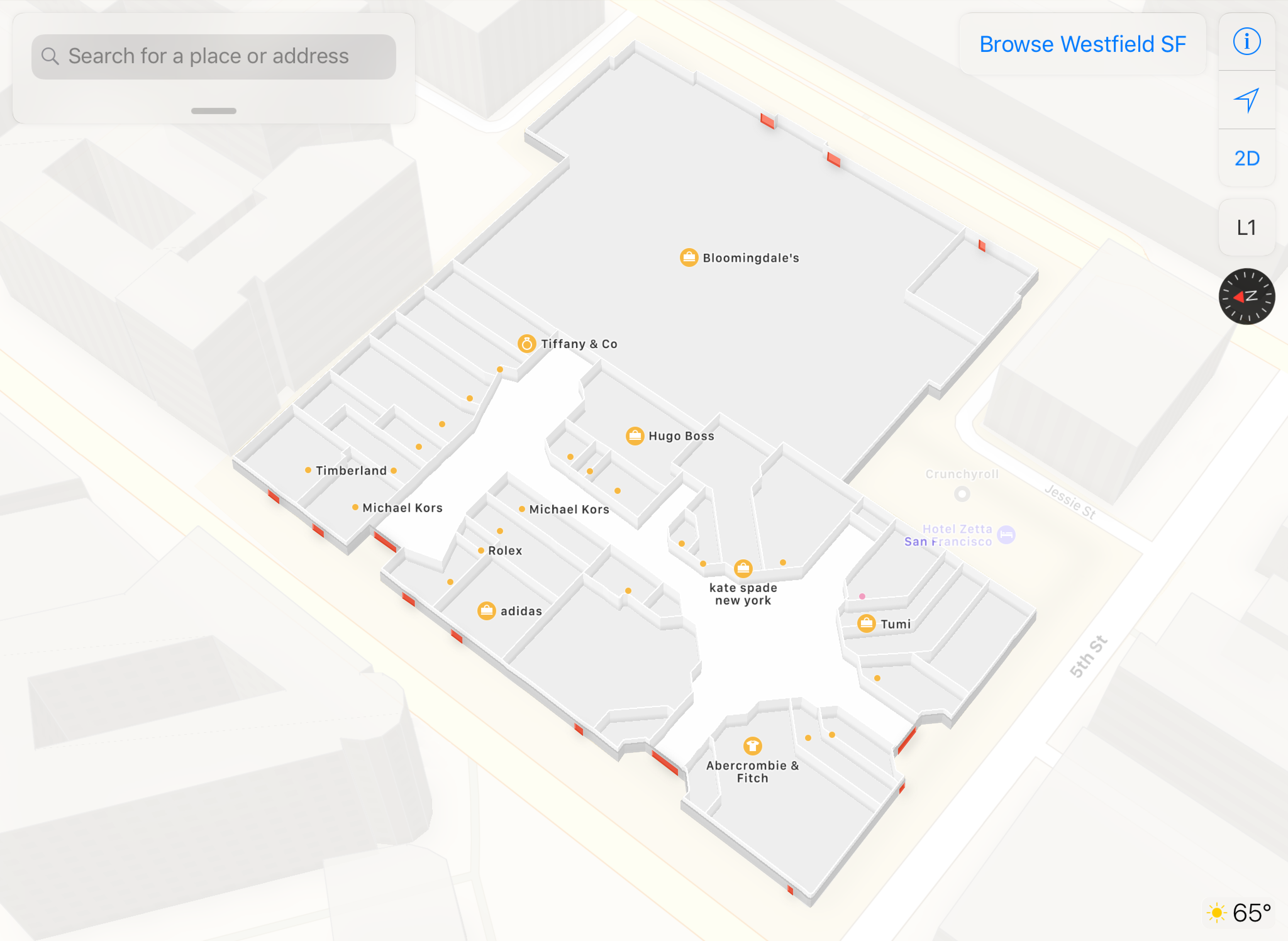
Opening - Pedestrian/Transit
Opening category. "pedestrian.transit" describes an Opening that is directly reachable from a physical public or municipal transit network.
Open to Below
Unit category. "opentobelow" models the presence and physical extent of a vertical "column" of air that is visible to a pedestrian, and which extends through one or more floor of a physical building.
Illustration
"opentobelow" Units that model columns of air that extend vertically from the first floor and through the second floor of this Venue.
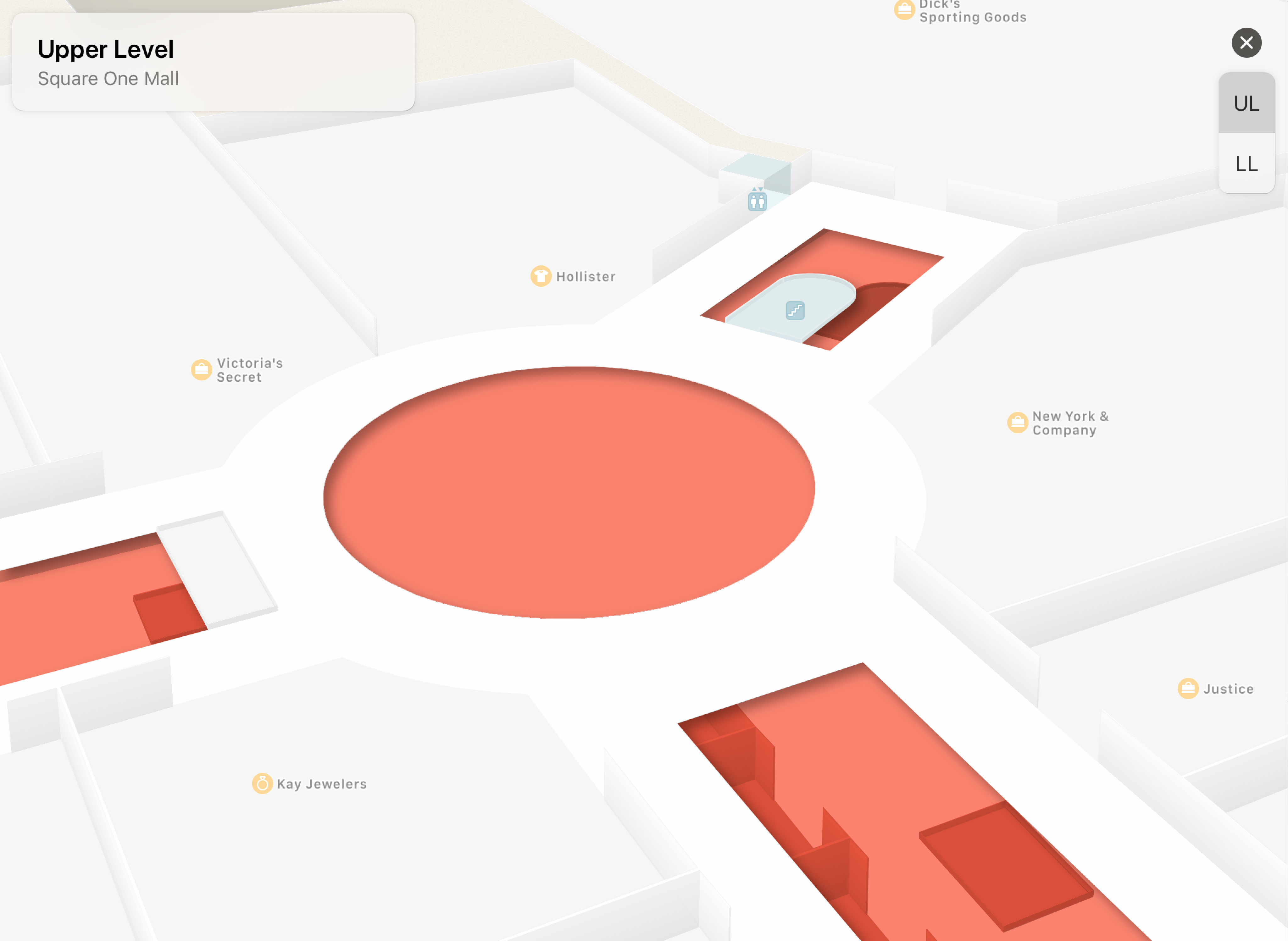
A physical environment in which an "opentobelow" Unit would be appropriate to model the column of air that exists between footbridges in this Venue.

Comment: The boundary of an
"opentobelow"does not model a physical, vertical (floor-to-ceiling) barrier except along a Level boundary. Along with"walkway.island","road"and"platform", this is an exception to the general rule.
Ordinal
ordinal indicates a Level's stacking position amongst others that may exist which model other physical floors. A floor's position, relative to ground, is a key factor when calculating a Level's ordinal.
Illustration
An ordinal indicates a Level's position amongst others that physically exist within a described Building.

On sloped terrain, where entrances exist on more than one floor, the Level that models the lowest floor which supports ground-floor access to the physical building is assigned an ordinal equal to 0.
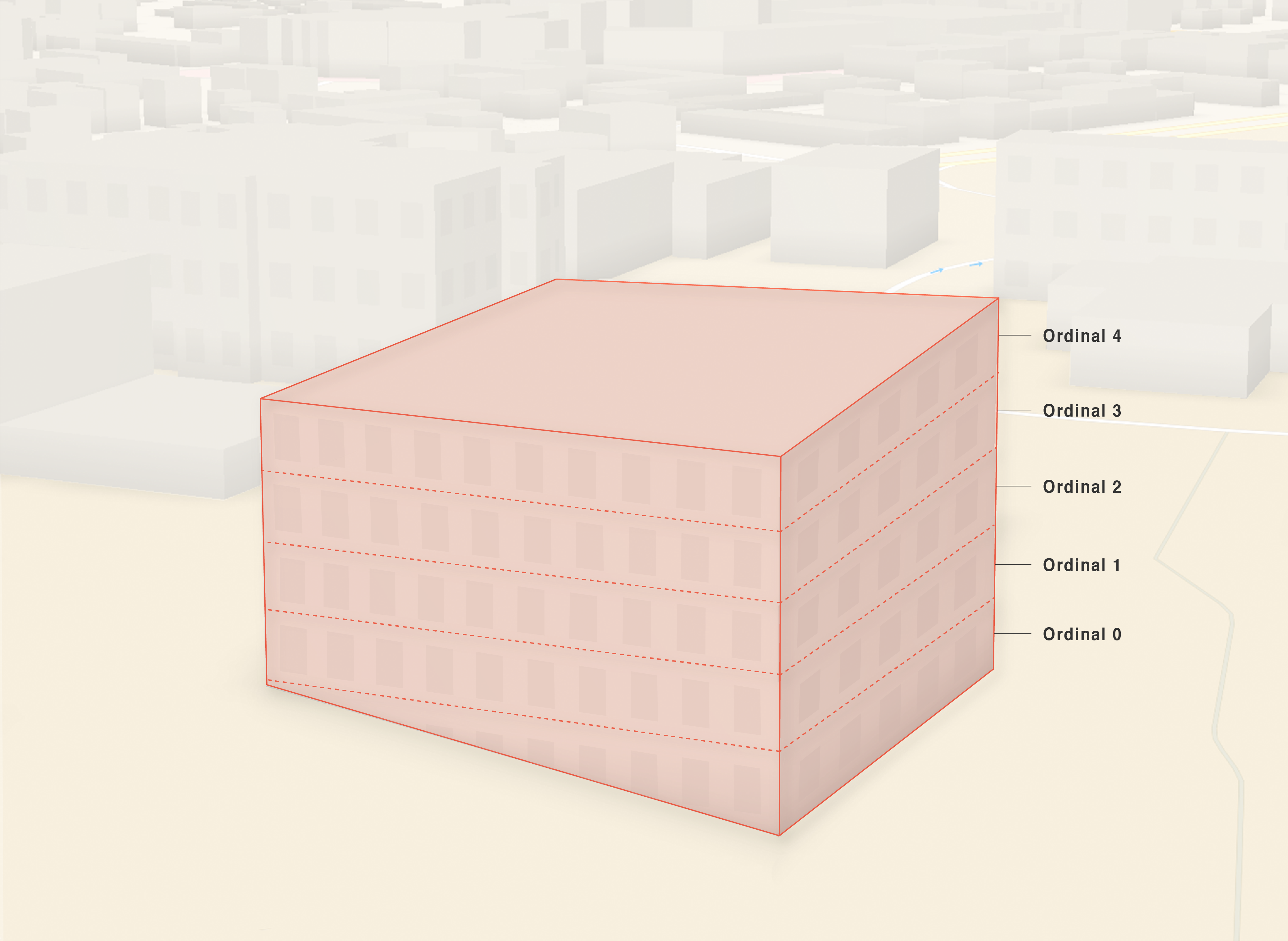
Origin
An origin is a single identified Opening or Unit that participates in a Relationship with a destination. A Relationship between an origin and a destination, via an intermediary, can be described using a Relationship.
OSM Opening Hours
Outdoor (Level)
An outdoor Level (outdoor = true) models the presence and physical extent of an outdoor environment that is considered to be inseparable from the Venue and which represents a valid part of the map application user "experience."
Illustration
A single, contiguous outdoor Level that models an outdoor physical environment at The Village At Corte Madera. Conceptually, this outdoor area is inseparable from the Venue and it is included in the modeling effort in order to provide a more complete map application user "experience."
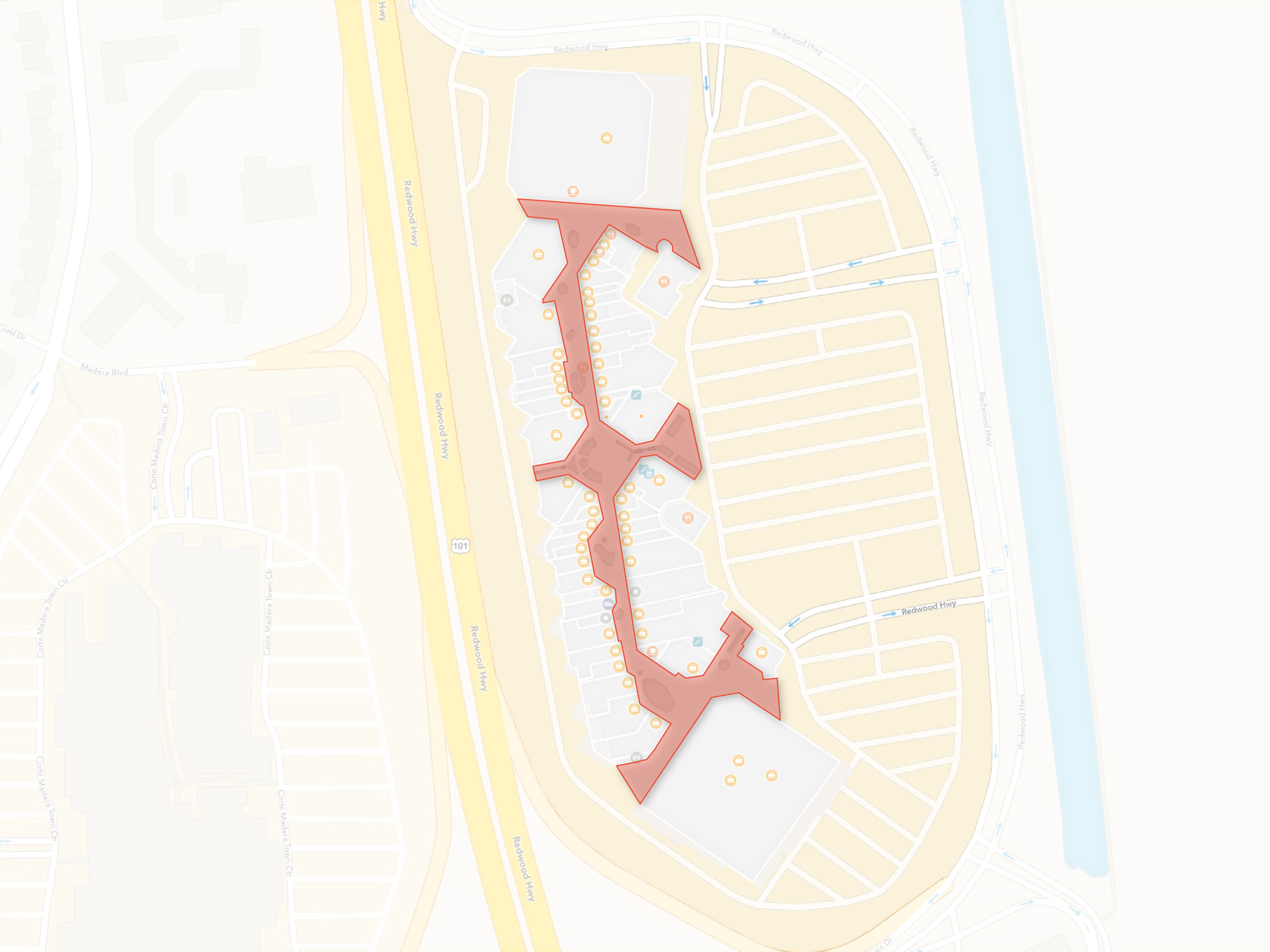
Out of Service
Access Control category. "outofservice" describes the operational status of an Opening.
Overlap, Overlapped, Overlapping
A spatial condition in which "...two geometries of the same dimension...returns t (TRUE) if their intersection set results in a geometry different from both but of the same dimension." Reference.
Illustration
Three (3) overlapping "concourse" Geofences at Chicago Midway International Airport (MDW). The overlapping portions, which are highlighted, define the extent of a pedestrian area that is common among the Geofences.
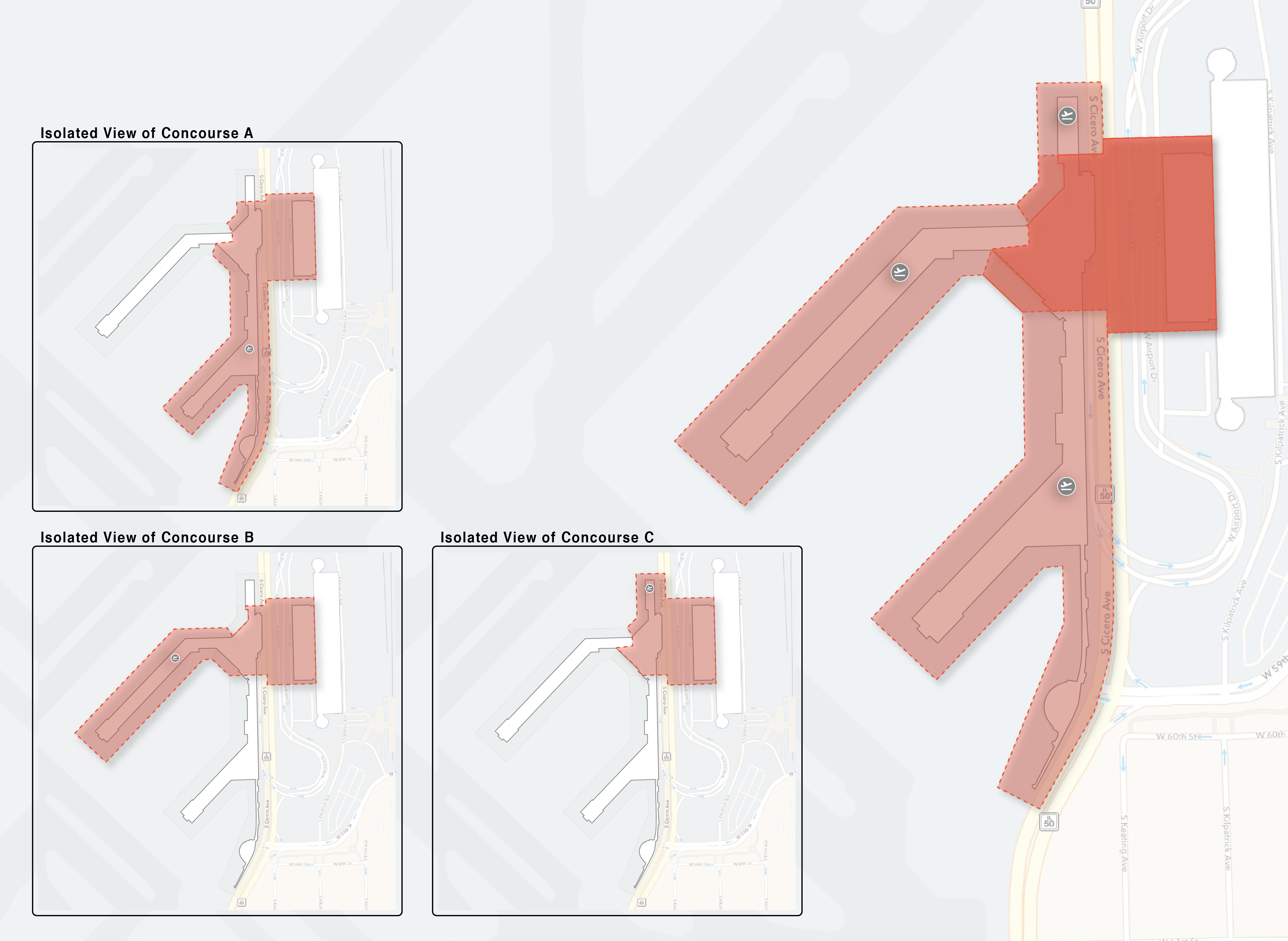
P
Paid Area
Paid Area (Amenity)
Amenity category. "paidarea" models the presence and approximate point location of a physical environment that is describable by the Venue Organization as a paid area.
Paid Area (Geofence)
Geofence category. "paidarea" models the extent of a Geofence whose area encompasses a physical environment that is describable by the Venue Organization as a paid area.
Paid Area (Section)
Section category. "paidarea" models the extent of a Section whose area encompasses a physical environment that is describable by the Venue Organization as a paid area.
Parents
The "parent" in a "parent/child" relationship. parents is a property of the following feature types:
- Section
- Geofence
Parking Facility
Venue category.
Parking (Amenity)
Amenity category. "parking" models the presence and approximate point location of an operation whose intended purpose is the storage of vehicles. "parking" should be used when an operation cannot be classified using any other category. "parking" is not further defined in IMDF.
Parking (Section)
Section category. "parking" models the presence and approximate thematic extent of an open or semi-enclosed environment whose intended purpose is the storage of vehicles. "parking" should be used when an area cannot be classified using any other category in the hierarchy. "parking" is not further defined in IMDF.
Illustration
"parking" Section that is equal to a "parking" Level. The "parking" Section possesses a display-point to be used as the curated point-based representation of the Section.

Parking (Unit)
Unit category. "parking" models the presence and physical extent of a physically enclosed area whose intended purpose is the storage of vehicles.
Illustration
A "parking" Unit.
- The
"parking"Unit equals the"parking"Level - The
"parking"Unit possesses a display-point which is the curated point-based representation of the Unit

Parking - Bicycle (Amenity)
Amenity category. "parking.bicycle" models the presence and approximate point location of an environment whose intended purpose is the storage of bicycles.
Parking - Bicycle (Section)
Section category. "parking.bicycle" models the presence and approximate thematic extent of an open or semi-enclosed environment whose intended purpose is the storage of bicycles.
Parking - Compact (Amenity)
Amenity category. "parking.compact" models the presence and approximate point location of an environment whose intended purpose is the storage of vehicles defined in the automotive industry as being "compact."
Parking - Compact (Section)
Section category. "parking.compact" models the presence and approximate thematic extent of an open or semi-enclosed environment whose intended purpose is the storage of vehicles defined in the automotive industry as being "compact."
Parking - EV (Amenity)
Amenity category. "parking.ev" models the presence and approximate point location of an environment whose intended purpose is the storage of electric vehicles.
Parking - EV (Section)
Section category. "parking.ev" models the presence and approximate thematic extent of an open or semi-enclosed environment whose intended purpose is the storage of electric vehicles.
Parking - Long-term (Amenity)
Amenity category. "parking.longterm" models the presence and approximate point location of an environment whose intended purpose is the storage of vehicles for an extended period of time.
Parking - Long-term (Section)
Section category. "parking.longterm" models the presence and approximate thematic extent of an open or semi-enclosed environment whose intended purpose is the storage of vehicles for an extended period of time.
Parking - Motorcycle (Amenity)
Amenity category. "parking.motorcycle" that models the presence and approximate point location of an environment whose intended purpose is the storage of motorcycles.
Parking - Motorcycle (Section)
Section category. "parking.motorcycle" that models the presence and approximate thematic extent of an open or semi-enclosed environment hose intended purpose is the storage of motorcycles.
Parking - Short-term (Amenity)
Amenity category. "parking.shortterm" models the presence and approximate point location of an environment whose intended purpose is the storage of vehicles for a short period of time.
Parking - Short-term (Section)
Section category. "parking.shortterm" models the presence and approximate thematic extent of an open or semi-enclosed environment whose intended purpose is the storage of vehicles for a short period of time.
Parking - Waiting (Amenity)
Amenity category. "parking.waitingarea" models the presence and approximate point location of an environment whose intended purpose is use by a person (and their vehicle) to wait for the arrival of another person(s).
Parking - Waiting (Section)
Section category. "parking.waitingarea" models the presence and approximate thematic extent of an open or semi-enclosed environment whose intended purpose is use by a person (and their vehicle) to wait for the arrival of another person(s).
Park & Ride (Amenity)
Amenity category. "parkandride" models the presence and approximate point location of an environment whose intended purpose is to host a Park & Ride service.
Park & Ride (Section)
Section category. "parkandride" models the presence and approximate thematic extent of an open or semi-enclosed environment whose intended purpose is to host a Park & Ride service.
Party Wall
Pedestrian Crossing
Amenity category. "pedestriancrossing" models the presence and approximate point location of a pedestrian crossing.
Phone
phone is a property of the following feature types:
- Venue
- Occupant
- Amenity
Phone (Amenity)
Amenity category. "phone" models the presence and approximate point location of a telephone or a "bank" of telephones.
Phone - Emergency
Amenity category. "phone.emergency" models the presence and approximate point location of an emergency telephone service.
Phone Room
Unit category. "phoneroom" models the presence and physical extent of a physically enclosed space intended for phone calls.
Platform (Amenity)
Amenity category. "platform" models the presence and approximate point location of the platform structure where a train can arrive. Reference. See also: Train Track (Amenity).
Platform (Geofence)
Geofence category. "platform" models the extent of a Geofence whose area encompasses a physical environment that is describable by the Venue Organization as a platform.
Platform (Section)
Section category. "platform" models the presence and approximate thematic extent of an open or semi-enclosed area of a railway platform that is distinct from another area of the same physical railway platform.
Illustration
Physical environment in which the train platform is a candidate for capture as a single "platform" Unit. Conceptually, two (2) "platform" Sections may be used to define the extent of each side of the physical platform that has a different business purpose and a different label.
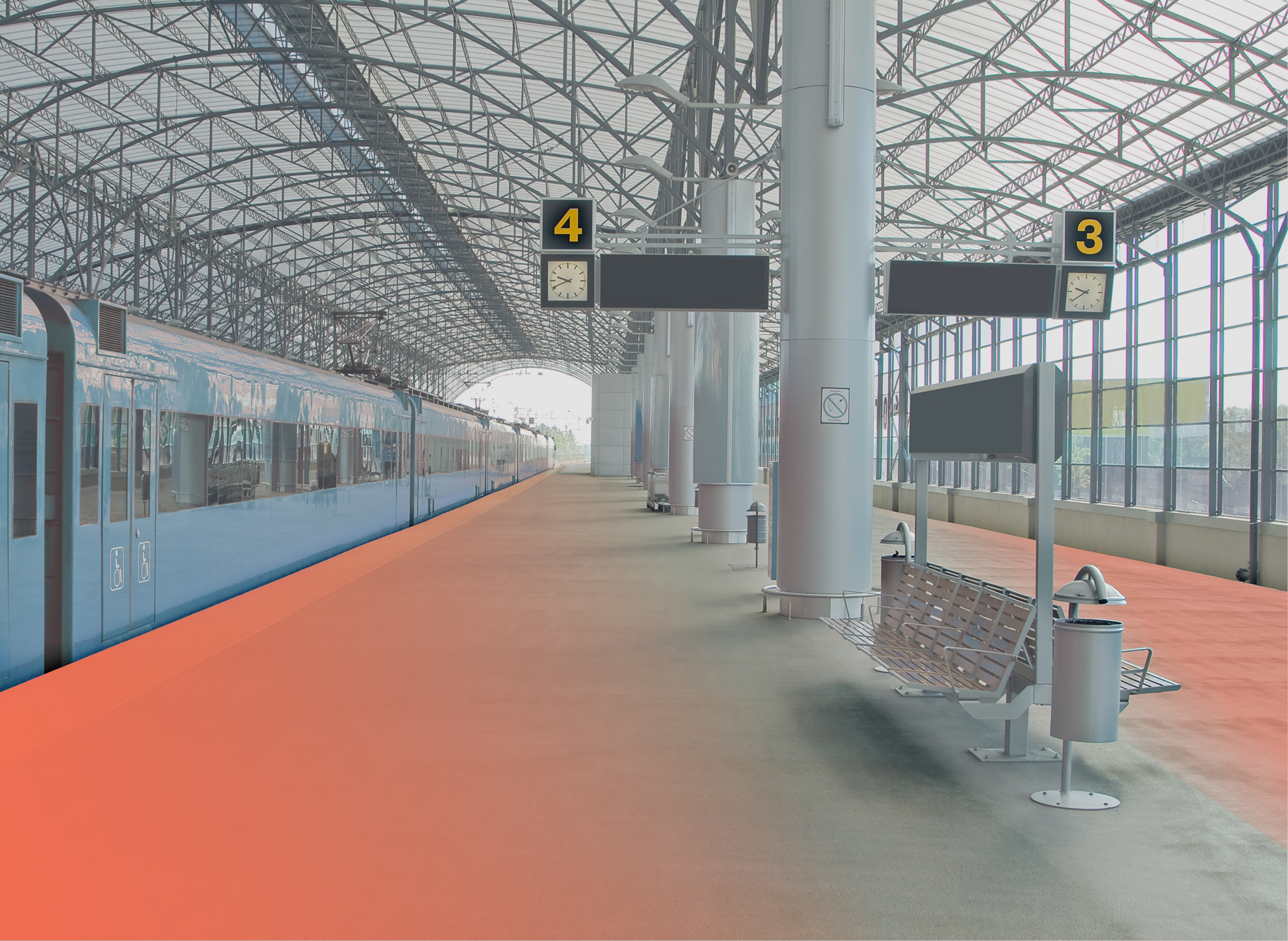
Platform (Unit)
Unit category. "platform" models the presence and physical extent of a railway platform.
Illustration
Physical environment in which the train platform is a candidate for capture as a single "platform" Unit.
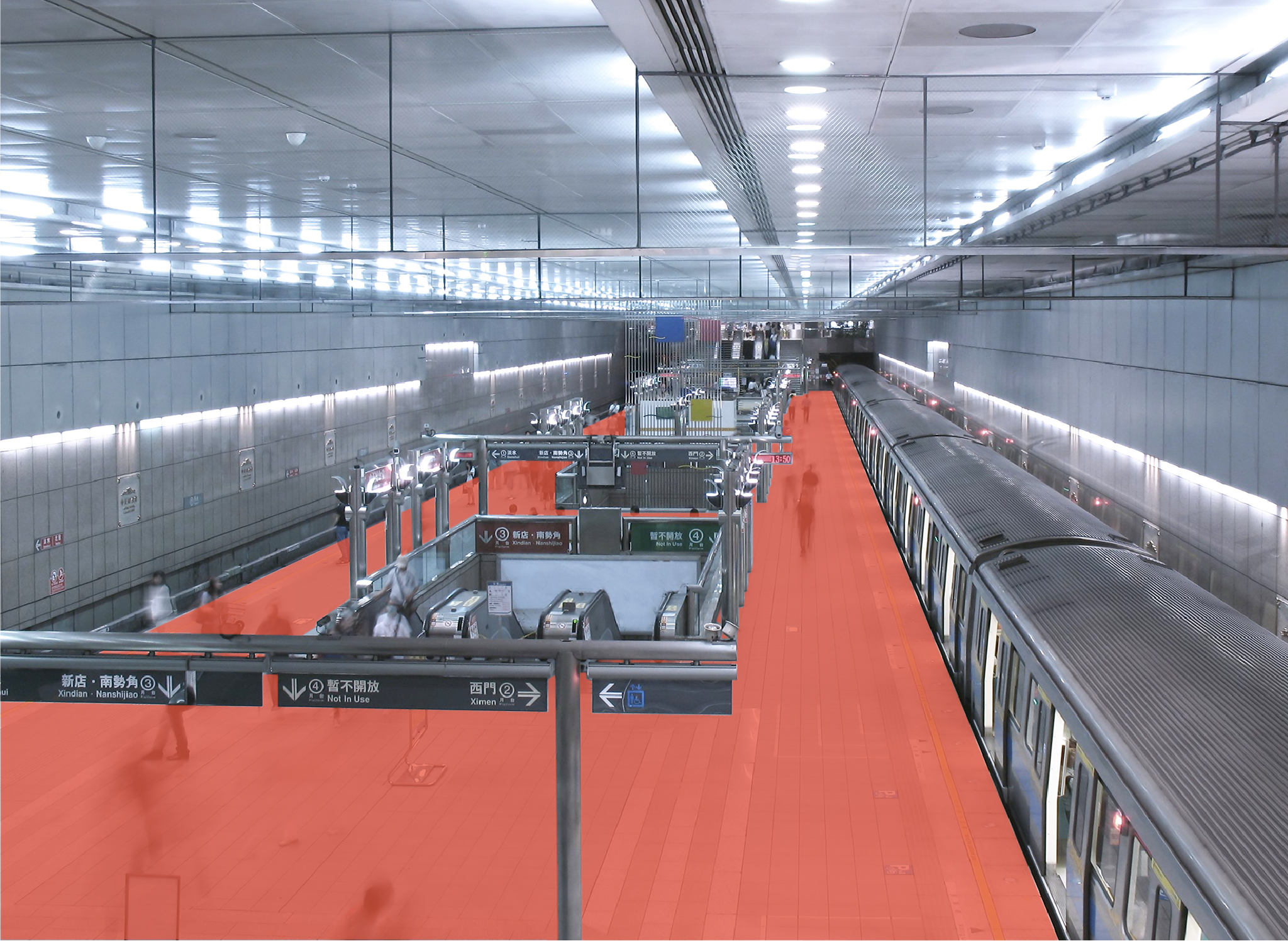
Comment: The boundary of an
"platform"does not model a physical, vertical (floor-to-ceiling) barrier except along a Level boundary. Along with"walkway.island","road"and"opentobelow", this is an exception to the general rule.
POI
Point of Interest. A generic term that collectively refers to Amenity and Occupant (via Anchor) feature types.
Police
Amenity category. "police" models the presence and approximate point location of a police sub-station, office or desk that is permanently staffed by police.
Pony Wall
Postal Code - Extension
An extension of the basic postal code that is generally optional for completion by the general public. An extension typically refers to a specific delivery route, a side of a building, a group of apartments, or several floors of a large office building. postal_code_ext is a property of:
- Address
Illustration
Sample Address that includes a postal_code_ext information type.

Postal Code - Vanity
An extension of the basic postal code that is chosen by Venue Organization and accepted by the government agency responsible for postal delivery services. postal_code_vanity is a property of:
- Address
Illustration
Sample Address that includes a postal_code_vanity information type.

Post-Security (Geofence)
Geofence category. "postsecurity" models the extent of a Geofence whose area encompasses a physical environment that is describable by the Venue Organization as post-security.
Illustration
A "postsecurity" Geofence overlaying Norman Y. Mineta International Airport (SJC).
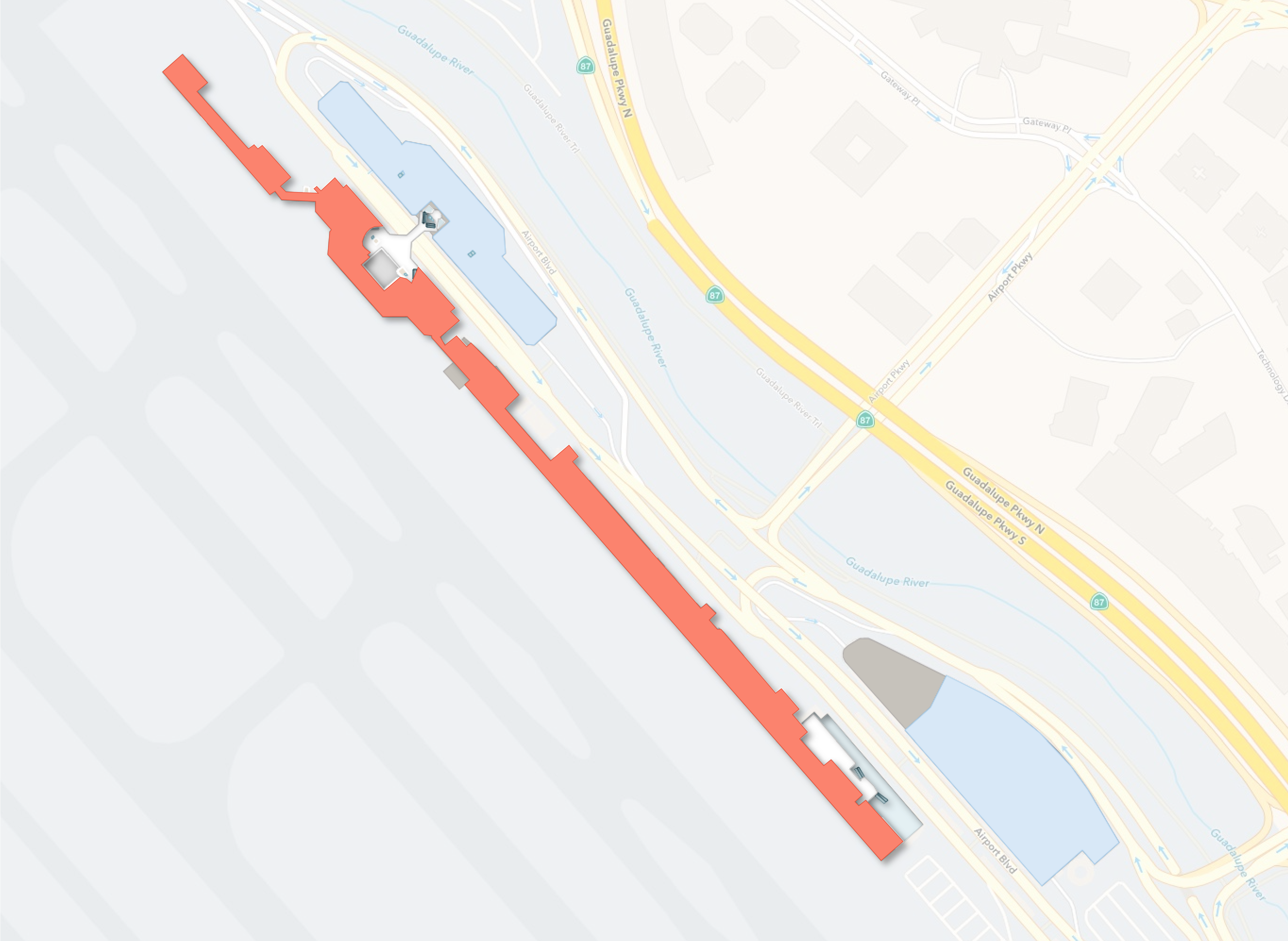
Post-Security (Section)
Section category. "postsecurity" models the presence and approximate thematic extent of an open or semi-enclosed environment that is describable by the Venue Organization as post-security.
Power/Charging Station
Amenity category. "powerchargingstation" models the presence and approximate point location of an automated charging machine.
Prayer Room
Amenity category. "prayerroom" models the presence and approximate point location of a place for religious prayer or meditation. Inter-faith (non-denominational) is assumed. Specific religious practices are also categorized:
"prayerroom.christianity""prayerroom.islam""prayerroom.islam.female""prayerroom.islam.male""prayerroom.judaism""prayerroom.buddhism""prayerroom.hinduism""prayerroom.sikh""prayerroom.taoic""prayerroom.shintoism"
Pre-Security (Geofence)
Geofence category. "presecurity" models the extent of a Geofence whose area encompasses a physical environment that is describable by the Venue Organization as pre-security.
Illustration
A "presecurity" Geofence overlaying Norman Y. Mineta International Airport (SJC).
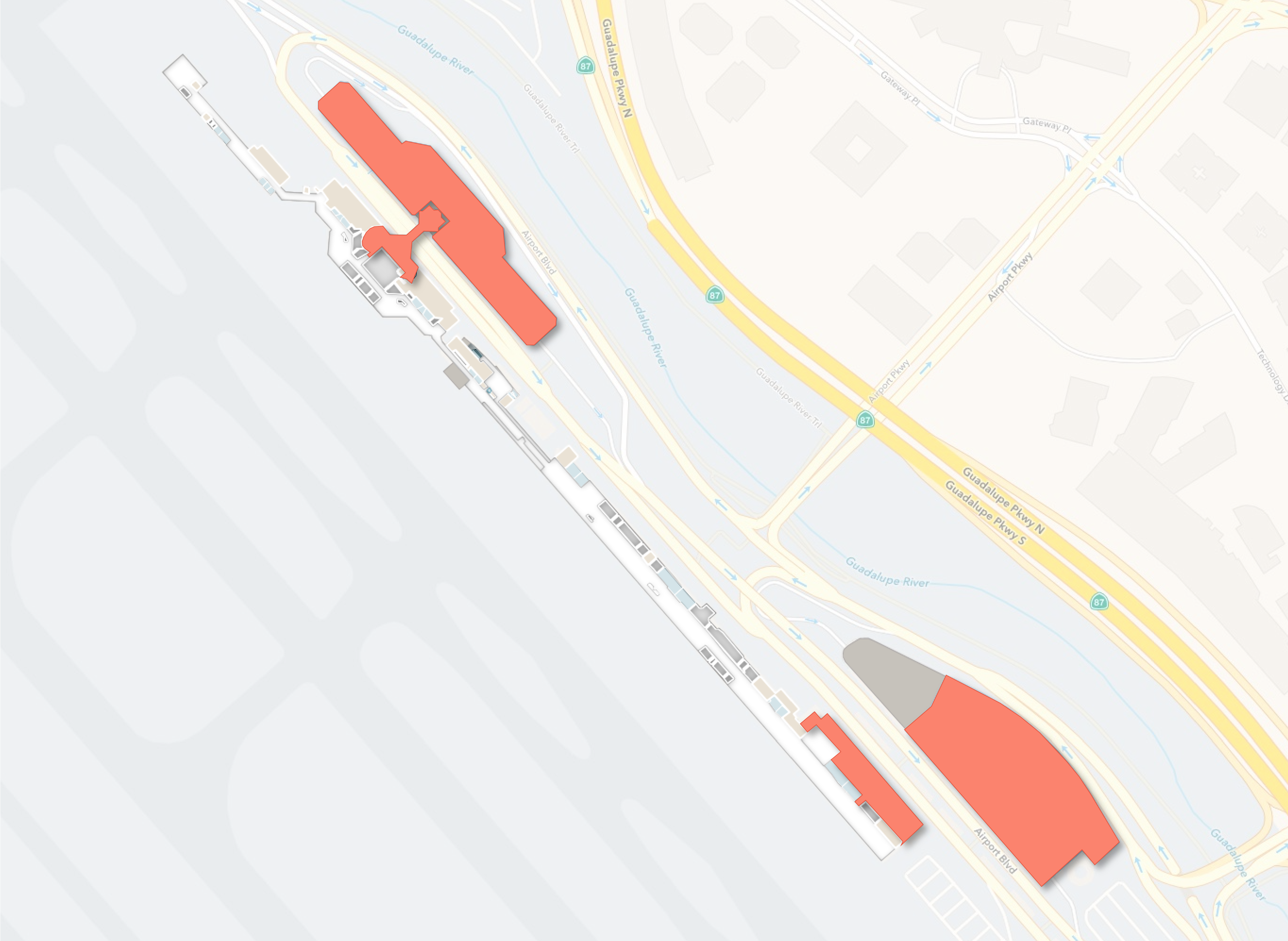
Pre-Security (Section)
Section category. "presecurity" models the presence and approximate thematic extent of an open or semi-enclosed environment that is describable by the Venue Organization as pre-security.
Private
Section category. "private" models the presence and approximate thematic extent of an open or semi-enclosed environment that is describable by the Venue Organization as private.
Illustration
An area of an anchor store that is, in physical reality, a set of rooms. For aesthetic reasons, and to create a simpler map, the rooms were modeled as a theme in the Section layer. This "private" Section touches several "retaildepartment" Sections.
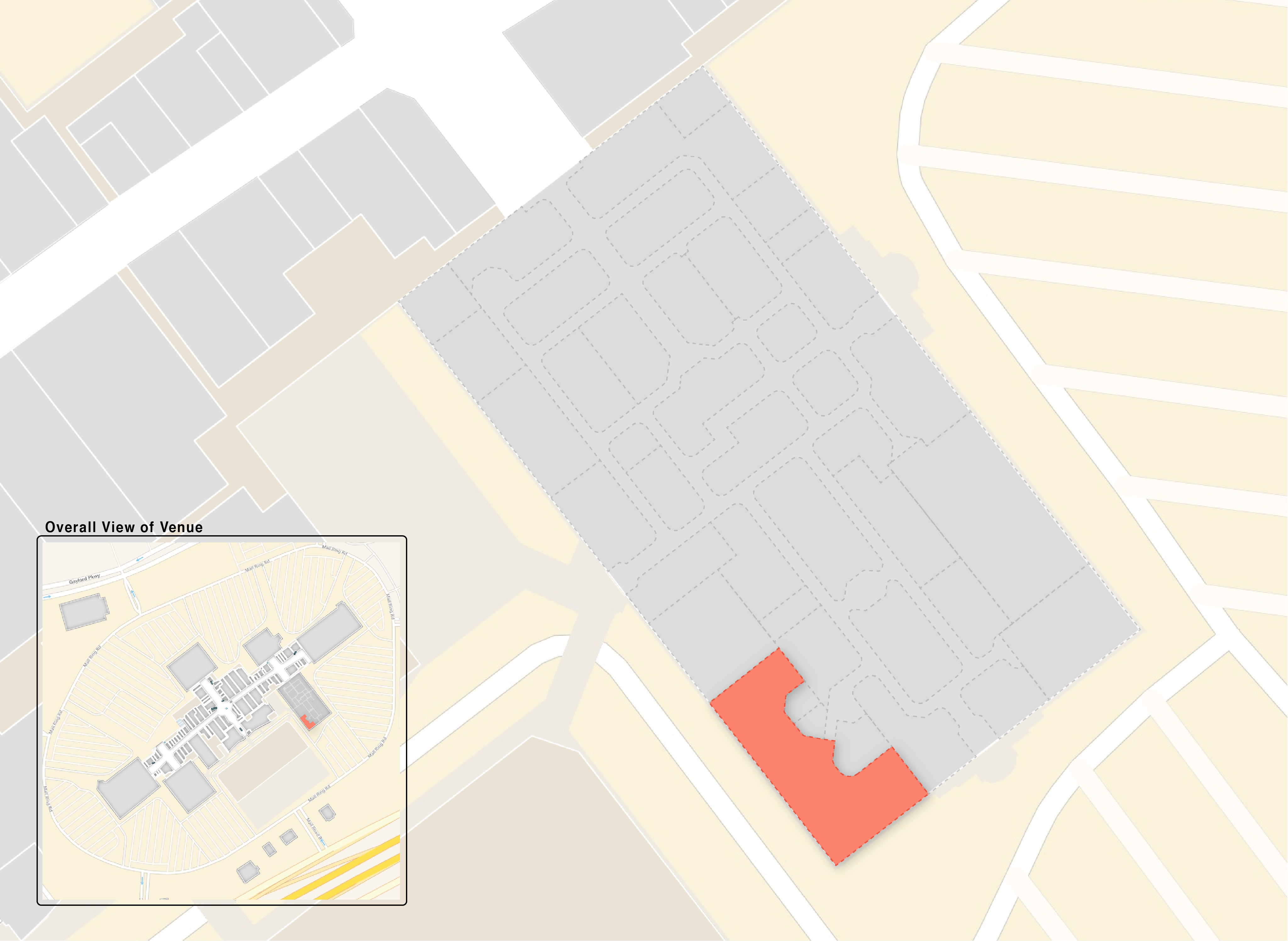
Private Lounge
Unit category. "privatelounge" models the presence and physical extent of an enclosed space that is made available to authorized pedestrians. (See also Lounge)
Illustration
When considering how to map a physical environment that includes the presence of a "brand name" private lounge.
- Capture as a
"room"Unit category and centrally position an Occupant (via Anchor) within the boundary of the Unit
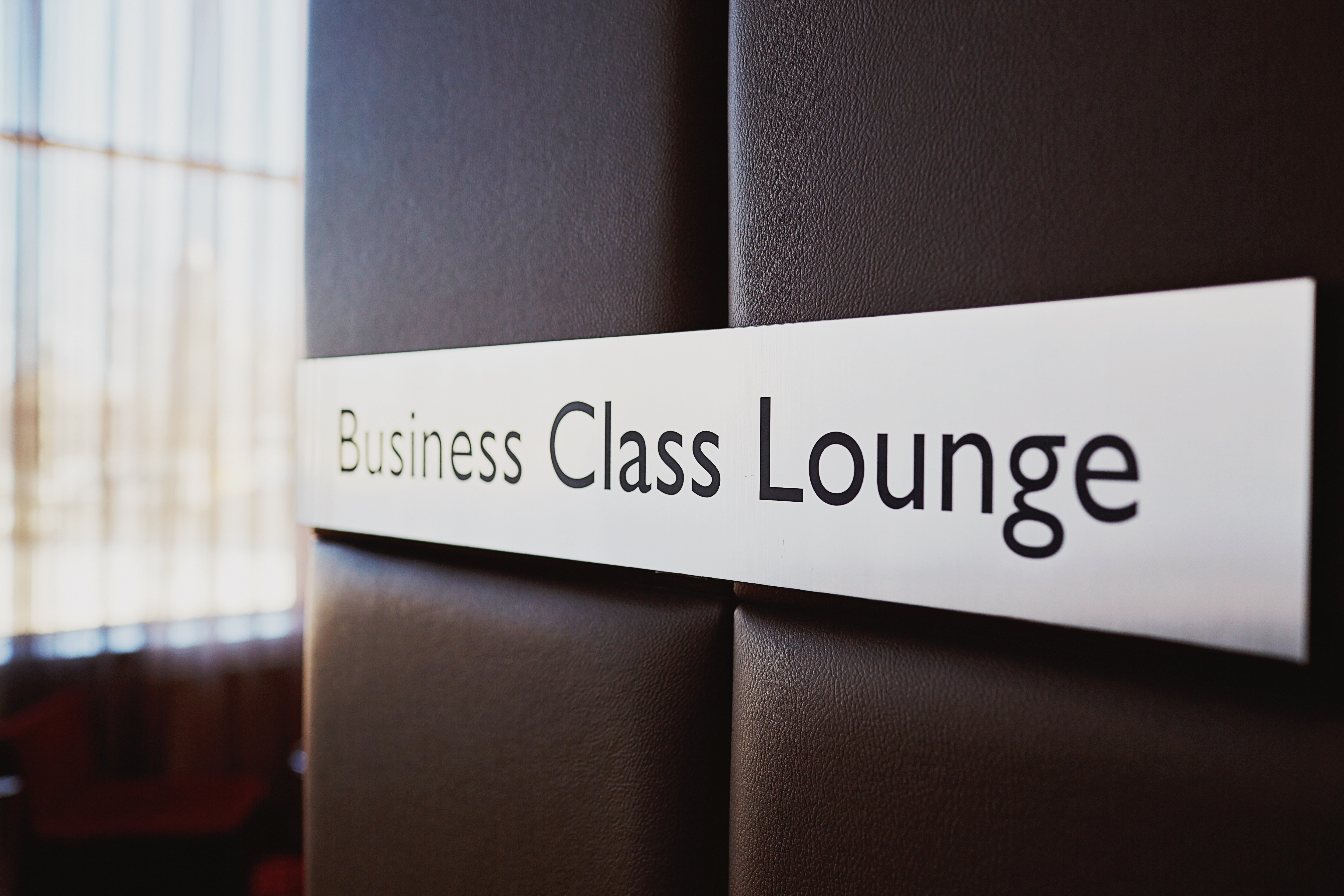
Product Return
Amenity category. "productreturn" models the presence and approximate point location of a product return service operation.
Q
Intentionally blank
R
Radial Displacement
An object that appears to lean radially away from the center of an aerial/satellite image. Radial displacement is caused by the conical field of view of the camera lens.
Ramp (Amenity)
Amenity category. "ramp" models the presence and approximate point location of an incline plane.
Ramp (Unit)
Unit category. "ramp" models the presence and physical extent of an incline plane. "ramp" may model the existence of:
- An alternate pedestrian pathway to one that presents physical obstacles (e.g.,
"steps") on the same Level - A pedestrian pathway that supports vertical traversal between different Levels
Illustration

Reception Desk
Amenity category. "reception.desk" models the presence and approximate point location of a front desk operation.
Recompose Area
Section category. "recomposearea" models the presence and approximate thematic extent of an open or semi-enclosed environment where one can restore composure or calmness. Such as when one exits a security check-point.
Recreation (Amenity)
Amenity category. "recreation" models the presence and approximate point location of a break room or recreational space.
Recreation (Unit)
Unit category. "recreation" models the presence and physical extent of a break room or recreational space.
Relationship (Feature)
Feature reference.
Resort
Venue category.
Restriction
restriction describes a space that is restricted to a sub-set of the general public. restriction is a property of:
- Building
- Geofence
- Level
- Section
- Unit
- Venue
Restriction categories
Restriction - Employees (Only)
Restriction category. "employeesonly" describes a space that is restricted to employees of the physical Venue.
Illustration
A Venue Organization that wishes to explicitly map their non-public spaces may use a category other than "nonpublic" and set a "employeesonly" restriction on the Unit.
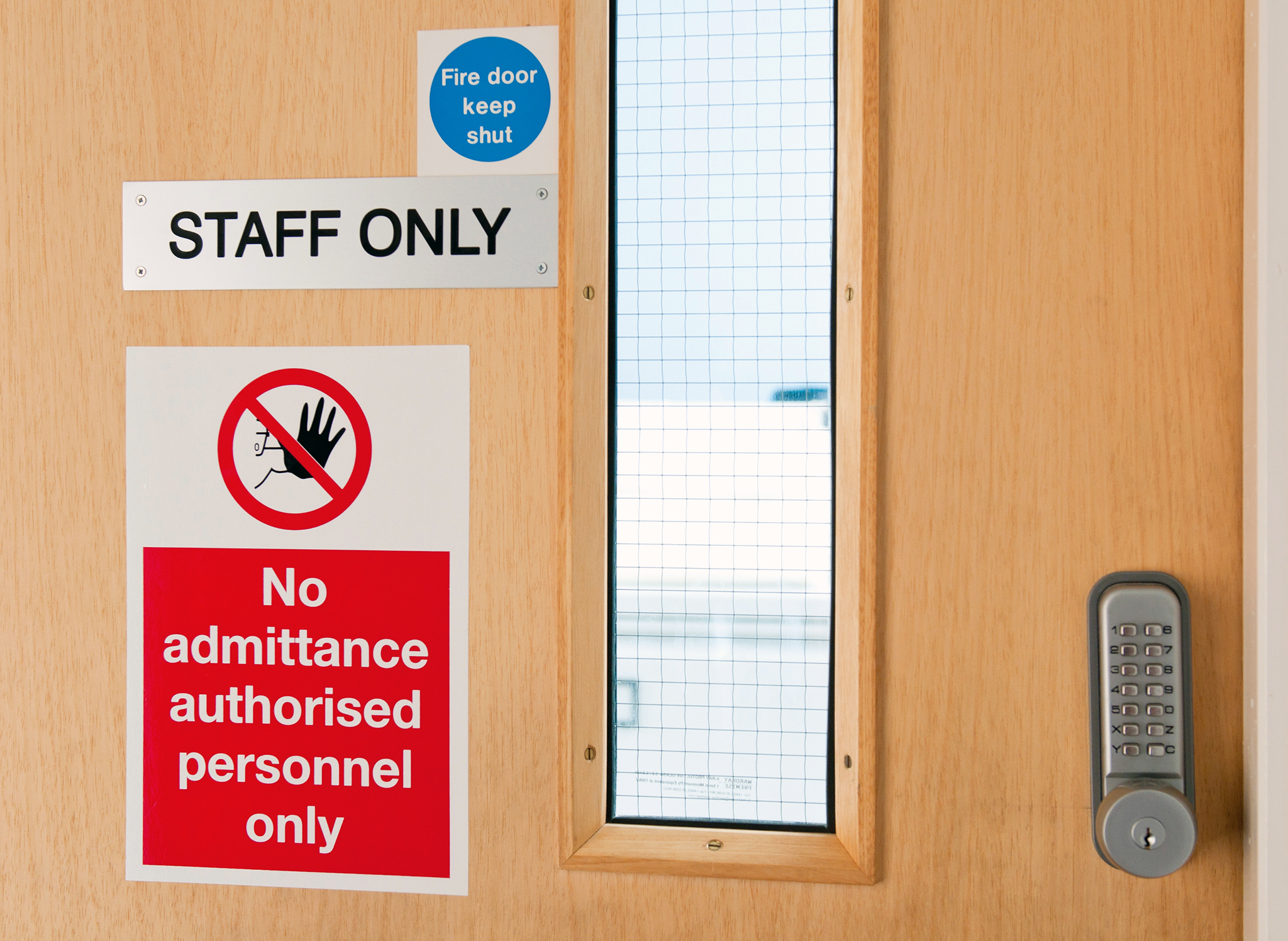
Restriction - Restricted
Restriction category. "restricted" describes a space that is restricted to a sub-set of the general public.
Restroom (Amenity)
Amenity category. "restroom" models the presence and approximate point location of one or more neighboring space containing bathroom facilities.
Restroom (Unit)
Unit category. "restroom" models the presence and physical extent of a single enclosed space containing bathroom facilities. "restroom" should be used when the enclosed space cannot be classified using any other category in the hierarchy.
Illustration
Several "restroom" Units.

Illustration
Several "restroom" Units. Isolated "restroom" Units possess a display-point that is centrally positioned within its respective Unit. Where different categories of "restroom" Unit touch, an Amenity with an appropriate category is centrally positioned among the Units.
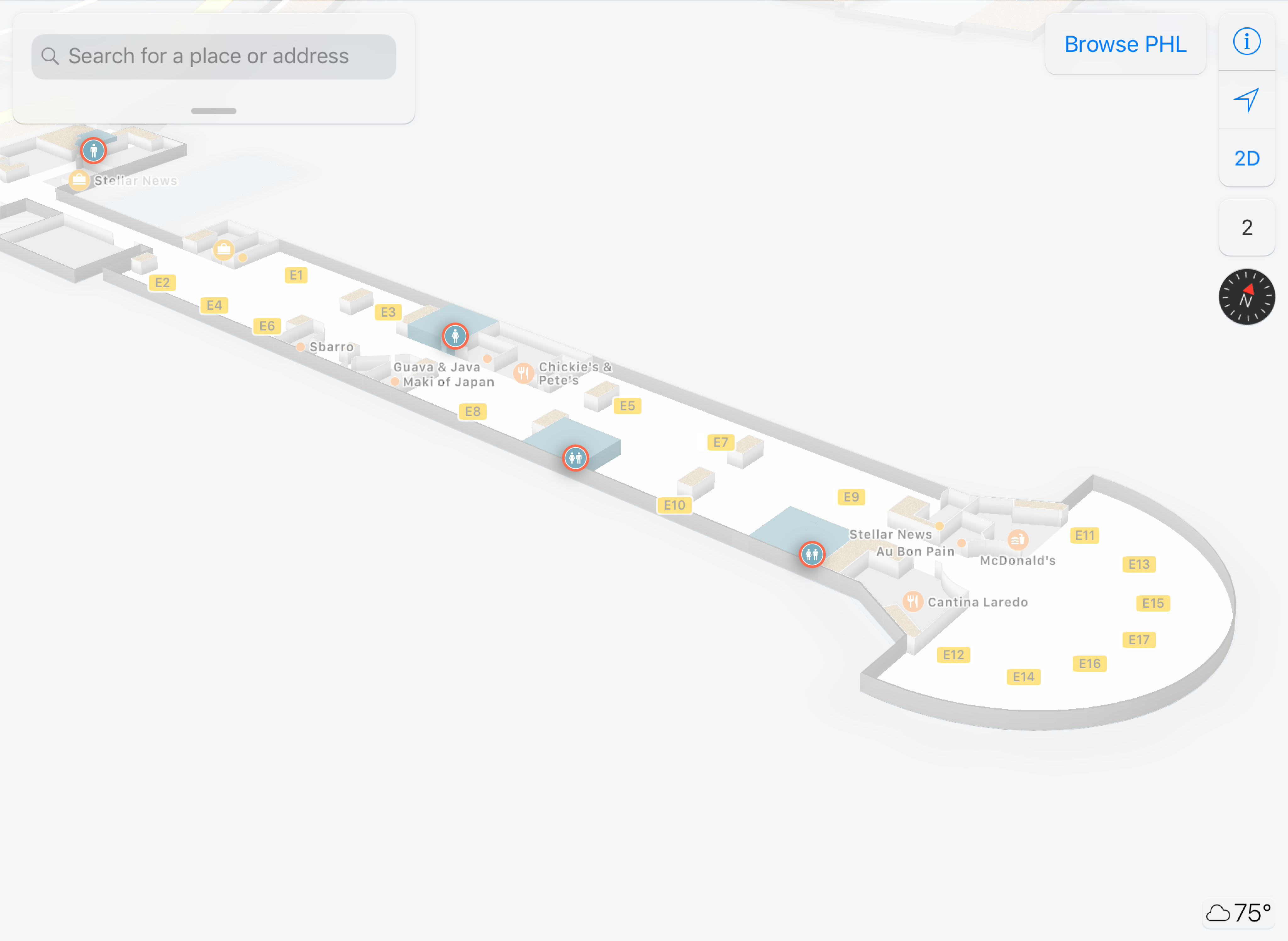
Restroom - Family (Amenity)
Amenity category. "restroom.family" models the presence and approximate point location of one or more neighboring space containing bathroom facilities that are intended for use by a family.
Restroom - Family (Unit)
Unit category. "restroom.family" models the presence and physical extent of a single space containing bathroom facilities that are intended for use by a family.
Restroom - Female (Amenity)
Amenity category. "restroom.female" models the presence and approximate point location of one or more neighboring space containing bathroom facilities that are intended for use by a female.
Restroom - Female (Unit)
Unit category. "restroom.female" models the presence and physical extent of a single space containing bathroom facilities that are intended for use by a female.
Restroom - Male (Amenity)
Amenity category. "restroom.male" models the presence and approximate point location of a space containing bathroom facilities that are intended for use by a male.
Restroom - Male (Unit)
Unit category. "restroom.male" models the presence and physical extent of a single space containing bathroom facilities that are intended for use by a male.
Restroom - Transgender (Amenity)
Amenity category. "restroom.transgender" models the presence and approximate point location of one or more neighboring space containing bathroom facilities that are intended for use by a person that identifies themselves as transgender.
Restroom - Transgender (Unit)
Unit category. "restroom.transgender" models the presence and physical extent of a single space containing bathroom facilities that are intended for use by a person that identifies themselves as transgender.
Restroom - Unisex (Amenity)
Amenity category. "restroom.unisex" models the presence and approximate point location of one or more neighboring space containing bathroom facilities that are intended for use by any person.
Restroom - Unisex (Unit)
Unit category. "restroom.unisex" models the presence and physical extent of a single space containing bathroom facilities that are intended for use by any person.
Restroom - Wheelchair (Amenity)
Amenity category. "restroom.wheelchair" models the presence and approximate point location of a bathroom facility that is entirely dedicated to persons with a disability. Related categories available for more precise mapping:
"restroom.female.wheelchair""restroom.male.wheelchair""restroom.transgender.wheelchair""restroom.unisex.wheelchair"
Restroom - Wheelchair (Unit)
Unit category. "restroom.wheelchair" models the presence and physical extent of a bathroom facility entirely dedicated to persons with a disability. Related categories available for more precise mapping:
"restroom.female.wheelchair""restroom.male.wheelchair""restroom.transgender.wheelchair""restroom.unisex.wheelchair"
Retail
Section category. "retail" models the presence and approximate thematic extent of an open or semi-enclosed environment containing a retail operation. "retail" should be used when an area cannot be classified using any other category in the hierarchy. "retail" is not further defined in IMDF.
Retail Department
Section category. "retaildepartment" models the presence and approximate thematic extent of an open or semi-enclosed environment that contains a particular category of products and/or services. Categories of a "retaildepartment" are defined by the Venue Organization. They are not defined in IMDF.
Illustration
Several "retaildepartment" Sections within a "room" Unit. Some Sections touch while others are disjoint. The existence of "gaps" among Sections facilitates the exposure of a network of pedestrian pathways that are formerly recognized by the Venue Organization in this anchor store. In modeling terms, the "room" or "walkway" Unit category is "exposed" where the Section does not cover the Unit.
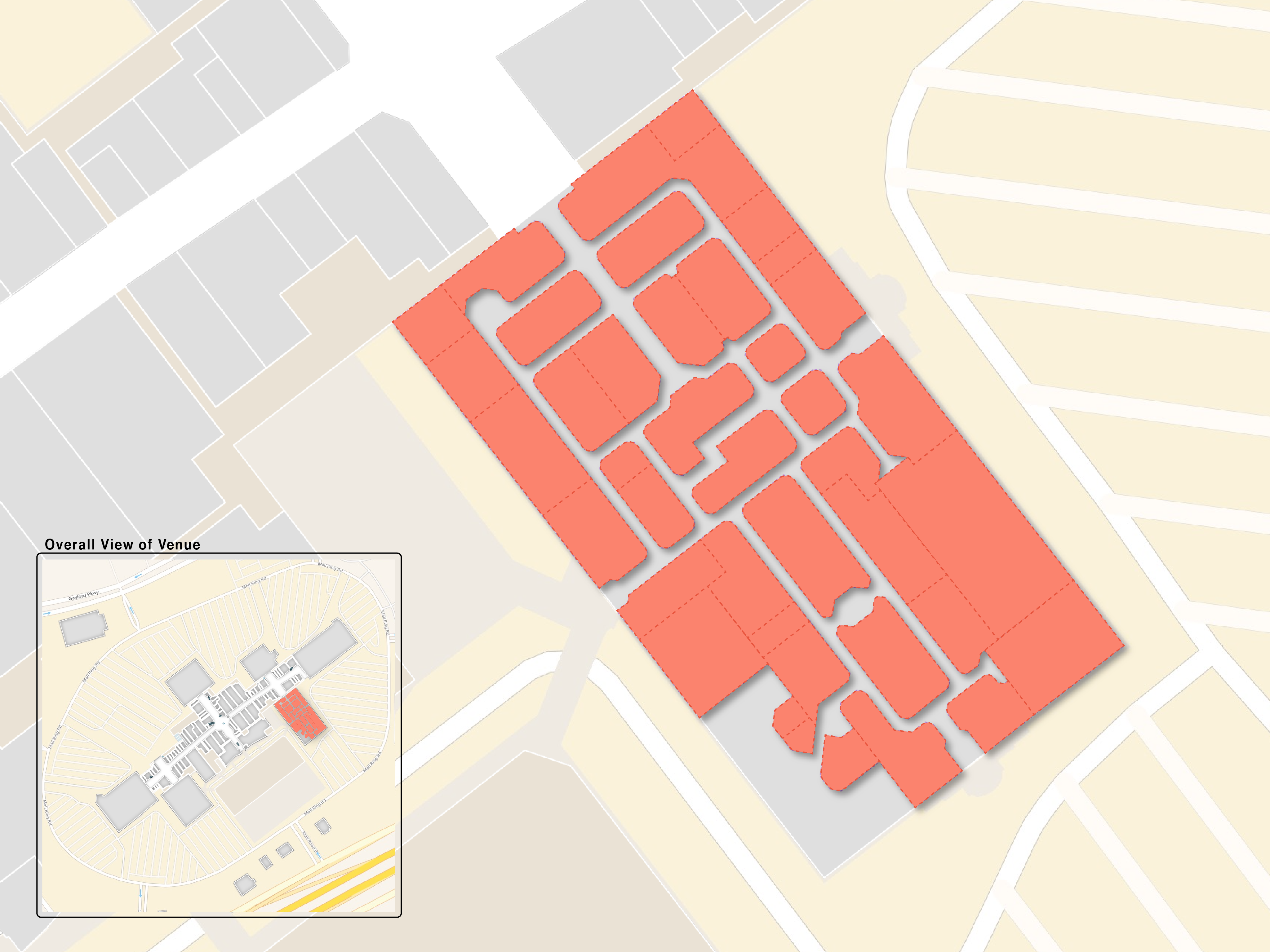
Retail Store
Venue category.
Riser
A vertical construction component in a set of stairs.
Road (Unit)
Unit category. "road" models the presence and physical extent of an area within a physical building that is used by moving vehicles.
Comment: The boundary of a
"road"does not model a physical, vertical (floor-to-ceiling) barrier except along a Level boundary. Along with"walkway.island","platform"and"opentobelow", this is an exception to the general rule.
Road (Section)
Section category. "road" models the presence of an open or semi-enclosed environment used by moving vehicles.
Room
Unit category. A "room" models a "...distinguishable space within a structure. Usually, a room is separated from other spaces or passageways by interior walls; moreover, it is separated from outdoor areas by an exterior wall, sometimes with a door." Reference.
S
Seat
Amenity category. "seat" models the presence and approximate point location of a seat.
Seating
Amenity category. "seating" models the presence and approximate point location of one or more seat.
Seating
Section category. "seating" models the presence of an open or semi-enclosed seating environment.
Illustration
Physical environment in which the "seating" Section category may be used to define the extent of this service.
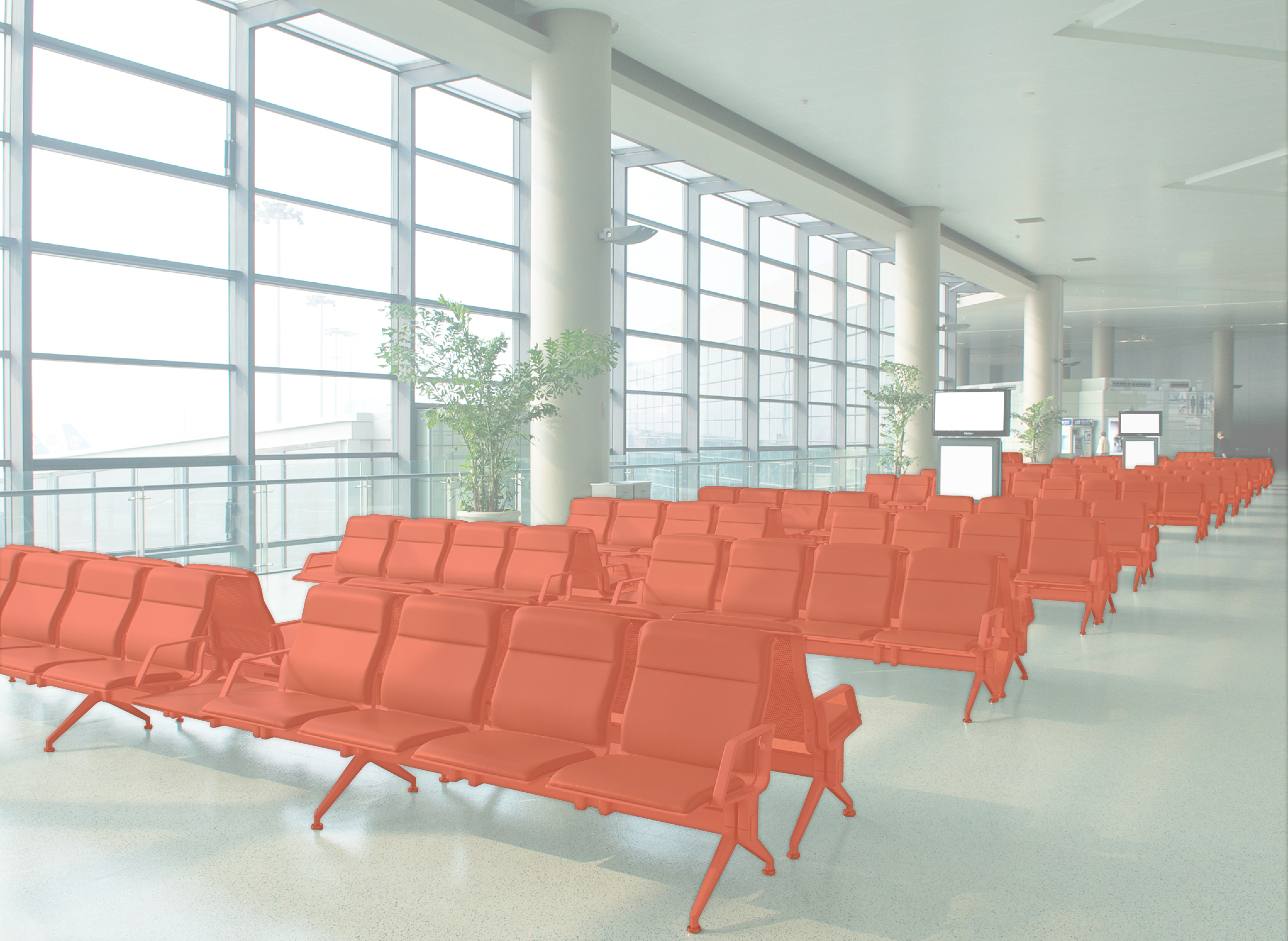
Seating Row
Section category. "seatingrow" models the presence of a row of seats.
Section (Feature)
Feature reference.
Security (Amenity)
Amenity category. "security" models the presence and approximate point location of an area containing a security operation. "security" should be used when the operation cannot be classified using any other category in the hierarchy. "security" is not further defined in IMDF.
Security (Section)
Section category. "security" models the presence and approximate thematic extent of an open or semi-enclosed area containing a security operation. "security" should be used when an area cannot be classified using any other category in the hierarchy. "security" is not further defined in IMDF.
Illustration
The presence of capital equipment, such as security screening equipment, that supports the security operation may be captured as Fixtures. The preferred approach is to only define the extent of a security operation using a "security" Section and to use the display-point as the curated point-based representation of the Section.
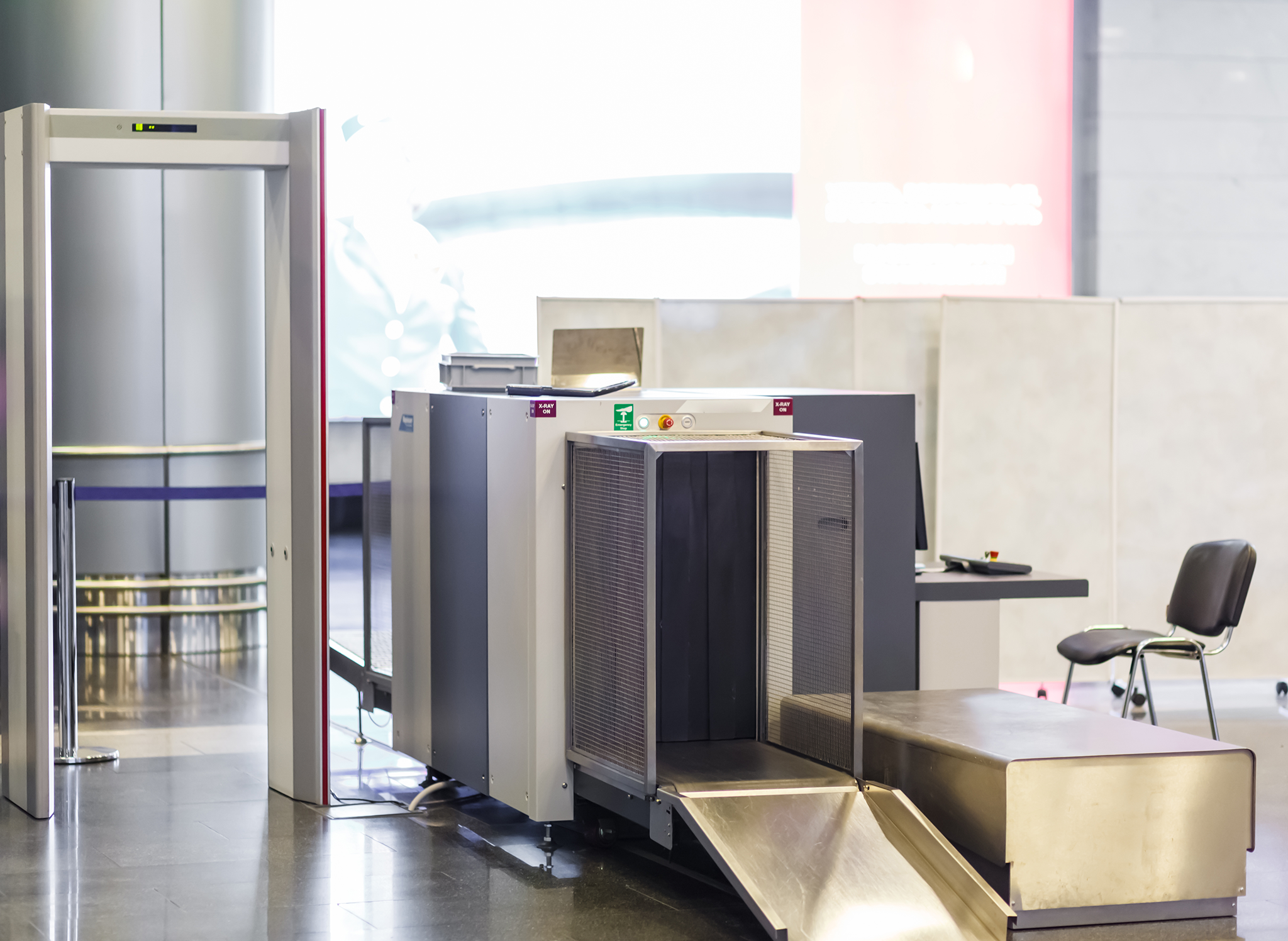
Illustration
Two (2) "security" Sections that touch both "postsecurity" and "presecurity" Geofences.
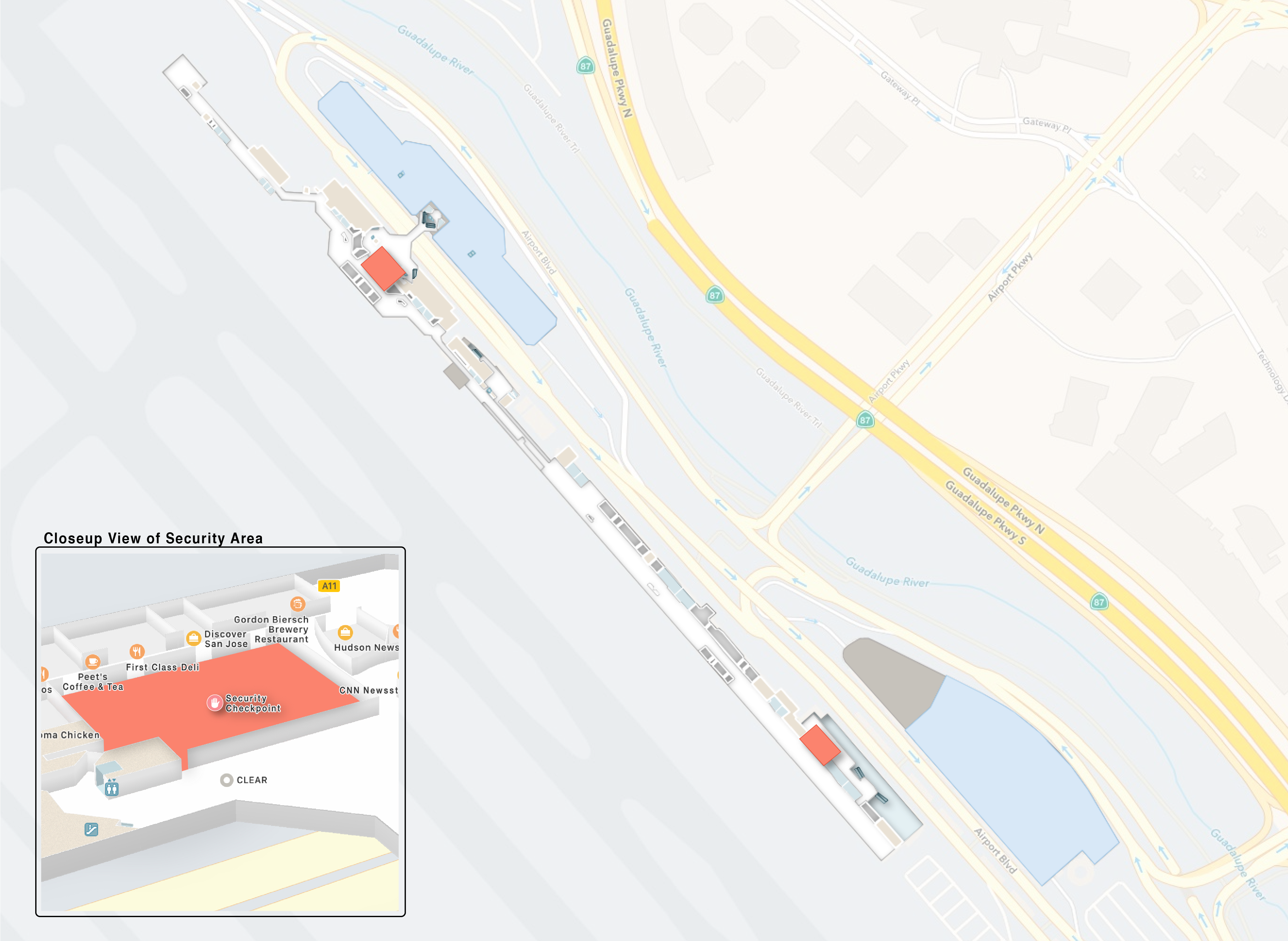
A "security" Section's display-point.
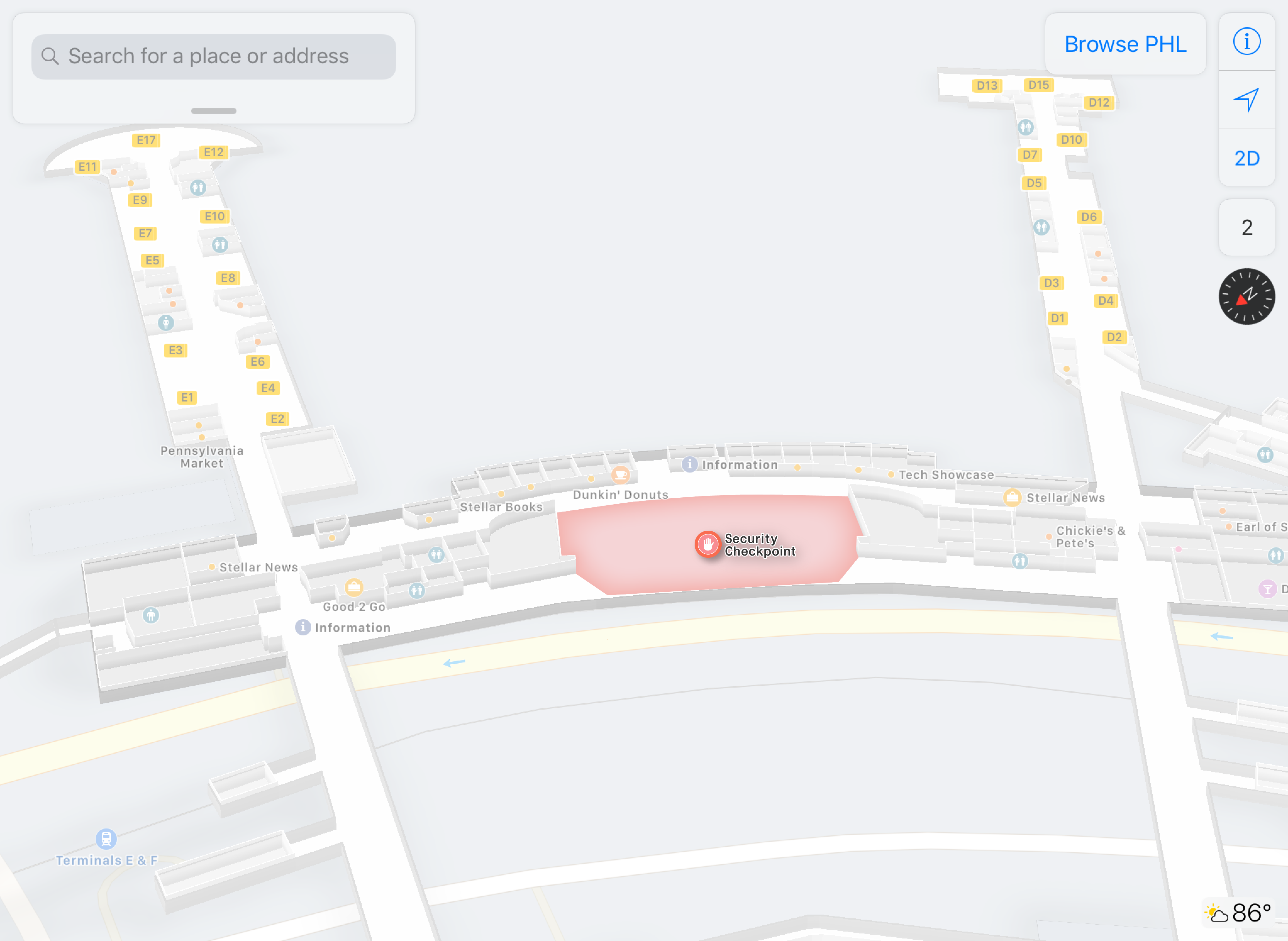
Security Checkpoint
Amenity category. "security.checkpoint" models the presence and approximate point location of personnel/equipment that supports a security operation.
Security Screening
Fixture category. "securityequipment" models the presence and physical extent of capital equipment that supports a security operation.
Self-intersect
A spatial condition in which a line segment crosses another that is possessed by the same feature.
Illustration - Polyonal
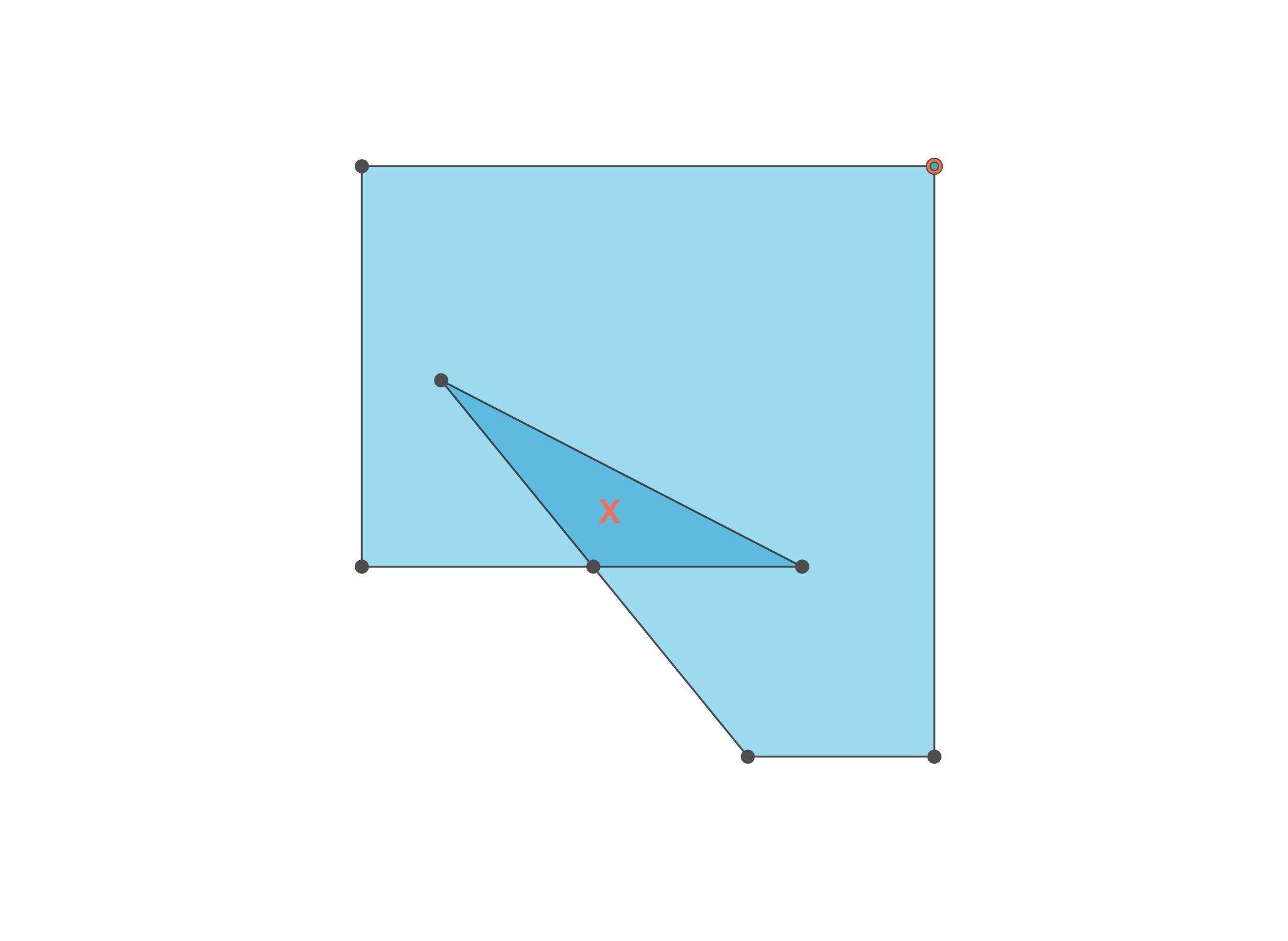
Illustration - Line
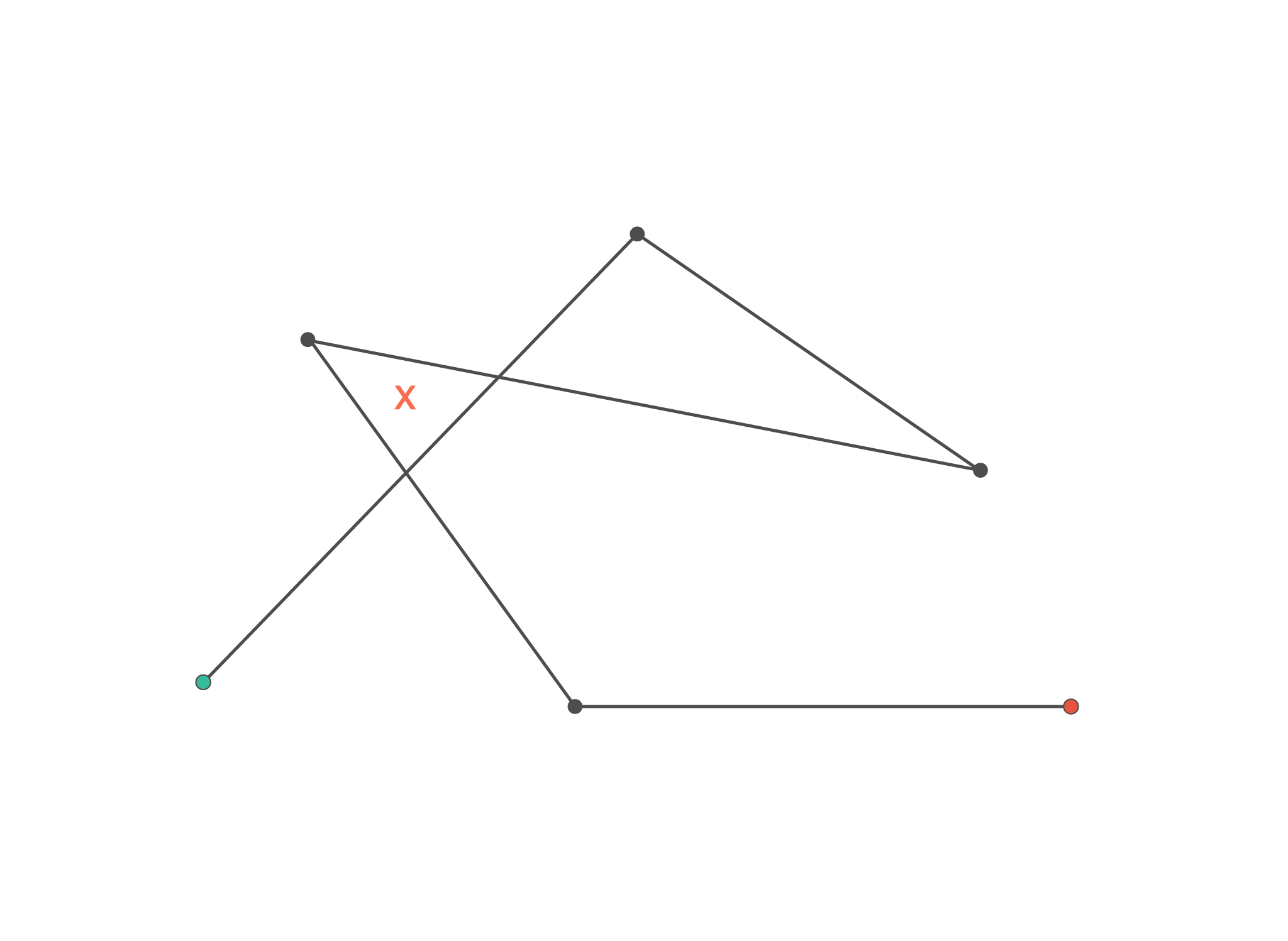
Server Room
Unit category. "serverroom" models the presence and physical extent of an enclosed space devoted to the operation of computer servers.
Service (Amenity)
Amenity category. "service" should be used to model the presence and approximate point location of a service operation that cannot be classified using any other "service" category in the hierarchy. "service" is not further defined in IMDF.
Service (Section)
Section category. "servicearea" models the presence and approximate thematic extent of an open or semi-enclosed area containing a service operation. "servicearea" should be used when an area cannot be classified using any other category in the hierarchy. "servicearea" is not further defined in IMDF.
Shopping Center
Venue category.
Short Name
"short_name" contains the label associated with a physical floor modeled as a Level. A floor's short_name may be derived from another physical object that suitably describes each floor. Alternatively, the Floor Naming Convention may be used.
Illustration
The existence of services to persons that experience disabilities is evident in this physical environment. To model these services:
- Capture the elevator as an
"elevator"Unit - Set the display-point
- Set accessibility to
"braille"to explicitly indicate ADA compliance. This is the preferred approach in this specific case.
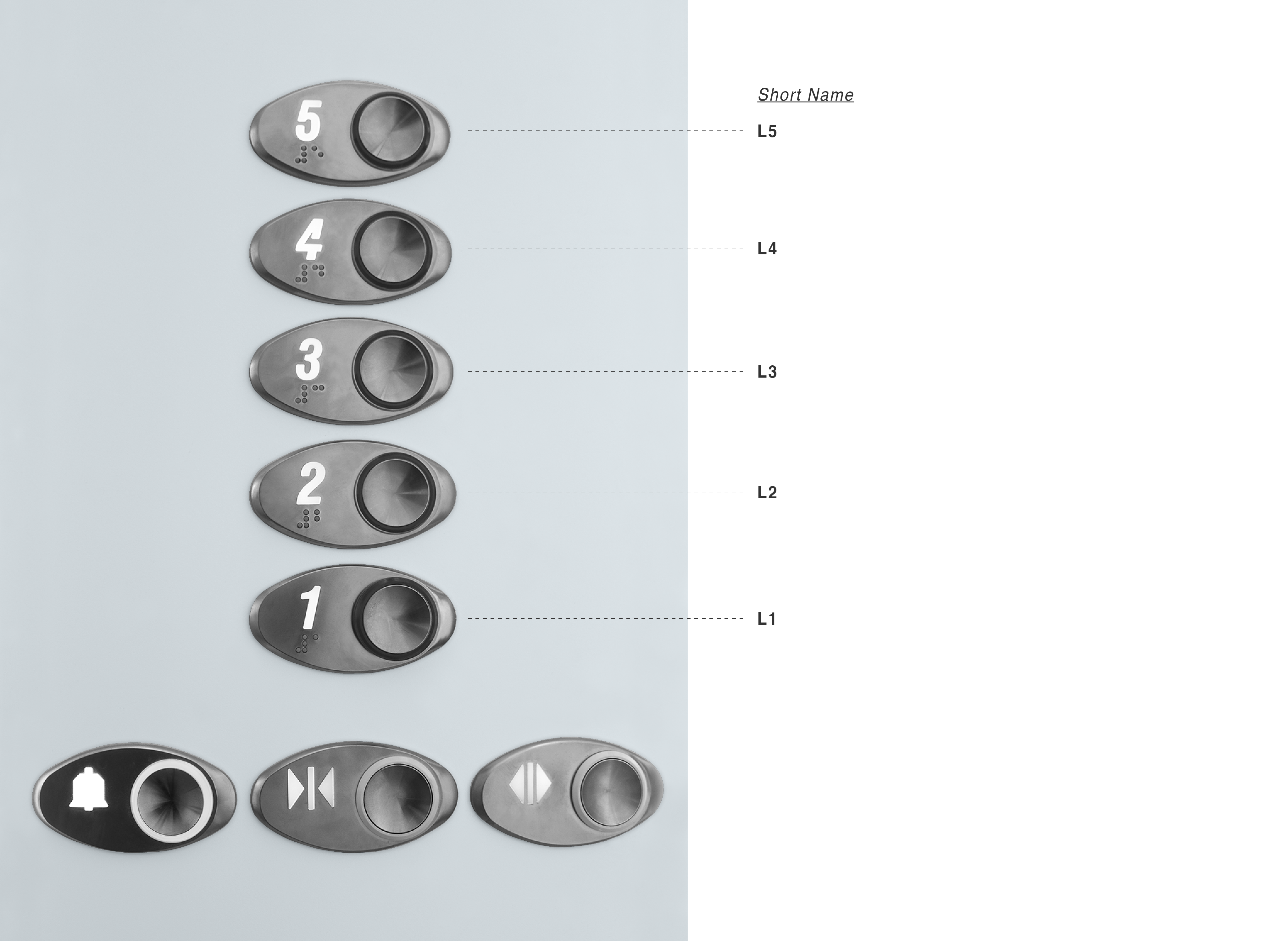
Shower (Amenity)
Amenity category. "shower" models the presence and approximate point location of one or more neighboring shower facility and adjoining locker/changing area.
Shower (Unit)
Unit category. "shower" models the presence and physical extent of an enclosed space that provides shower facilities and adjoining locker/changing area.
Site Plan
Simplified, Simplification
Simplification is the process of reducing a physical, vertical barrier, of variable cross-sectional depth, to a boundary that is shared by Units. In other words, symmetrical difference does not exist among Units that reference the same Level. Additionally, symmetrical difference does not exist between the union of all Units and the referenced Level.
Illustration
Two different approaches to the simplification of physical, vertical barriers:
- Approach One: Follow source data that describes the "face" of a physical, vertical barrier. Left-side illustration
- Approach Two: Approximate an imaginary line running down the center of a physical, vertical barrier. Right-side illustration
Note In both cases, the Level extent is "...analogous to the surface (facade) of the physical building at the height where the modeled floor is positioned."
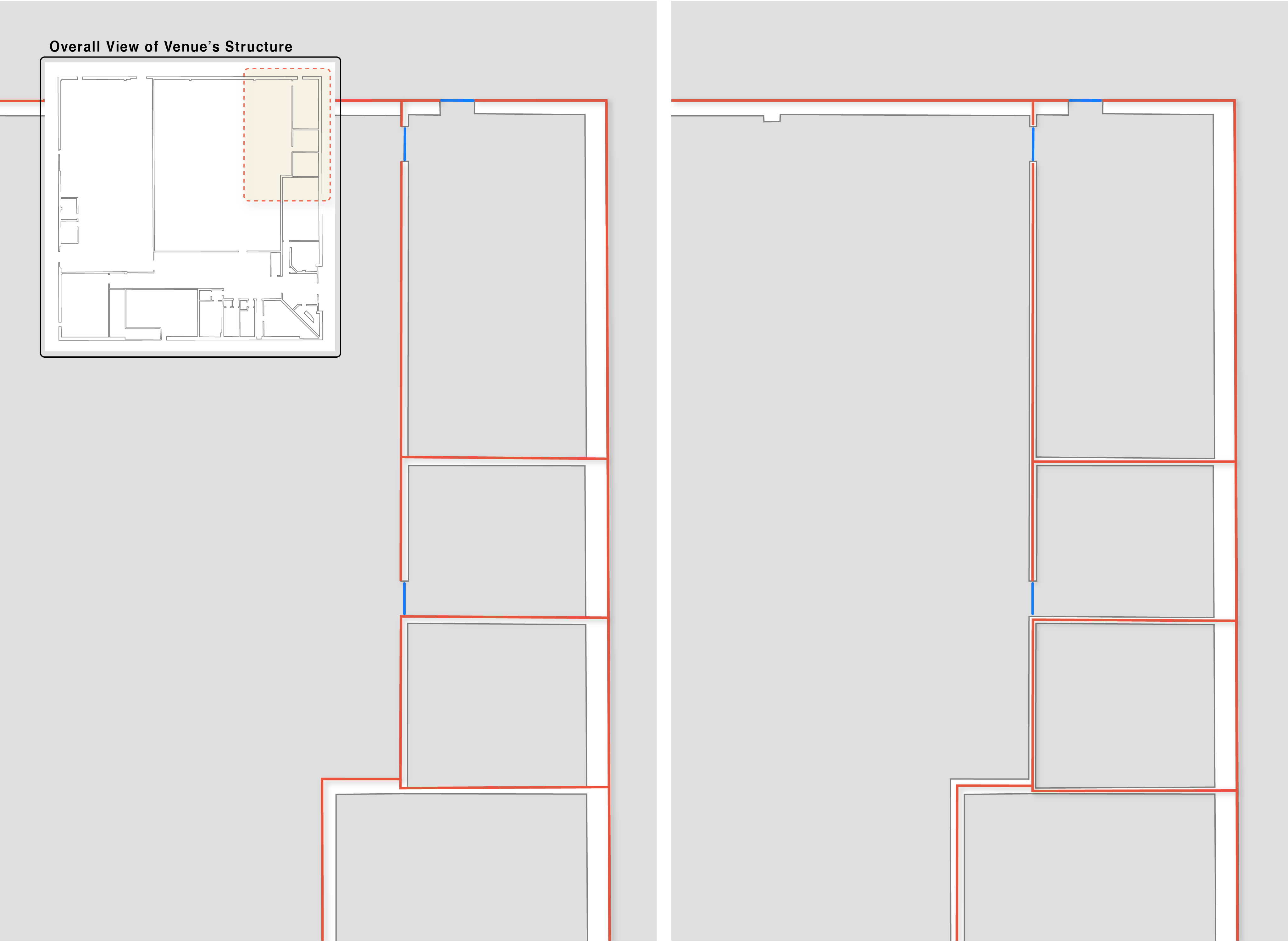
Skybridge
Sleepbox
Amenity category. "sleepbox" models the presence and approximate point location of one or more service that offers a bed and an associated set of facilities in a limited space.
Smoking (Amenity)
Amenity category. "smokingarea" models the presence and approximate point location of a smoking area or facility.
Smoking (Unit)
Unit category. "smokingarea" models the presence and physical extent of a space containing a smoking facility.
Source Data
The "raw" data from which feature types are derived.
Stairs (Amenity)
Amenity category. "stairs" models the presence and approximate point location of one or more neighboring staircase that supports vertical traversal to a physically different floor that may or may not be eligible for capture as a Level.
Stairs (Unit)
Unit category. "stairs" models the presence and physical extent of a single staircase that supports vertical traversal to a physically different floor that may or may not be eligible for capture as a Level.
Illustration
A "stairs" Unit.

Illustration
A "stairs" Unit's display-point.
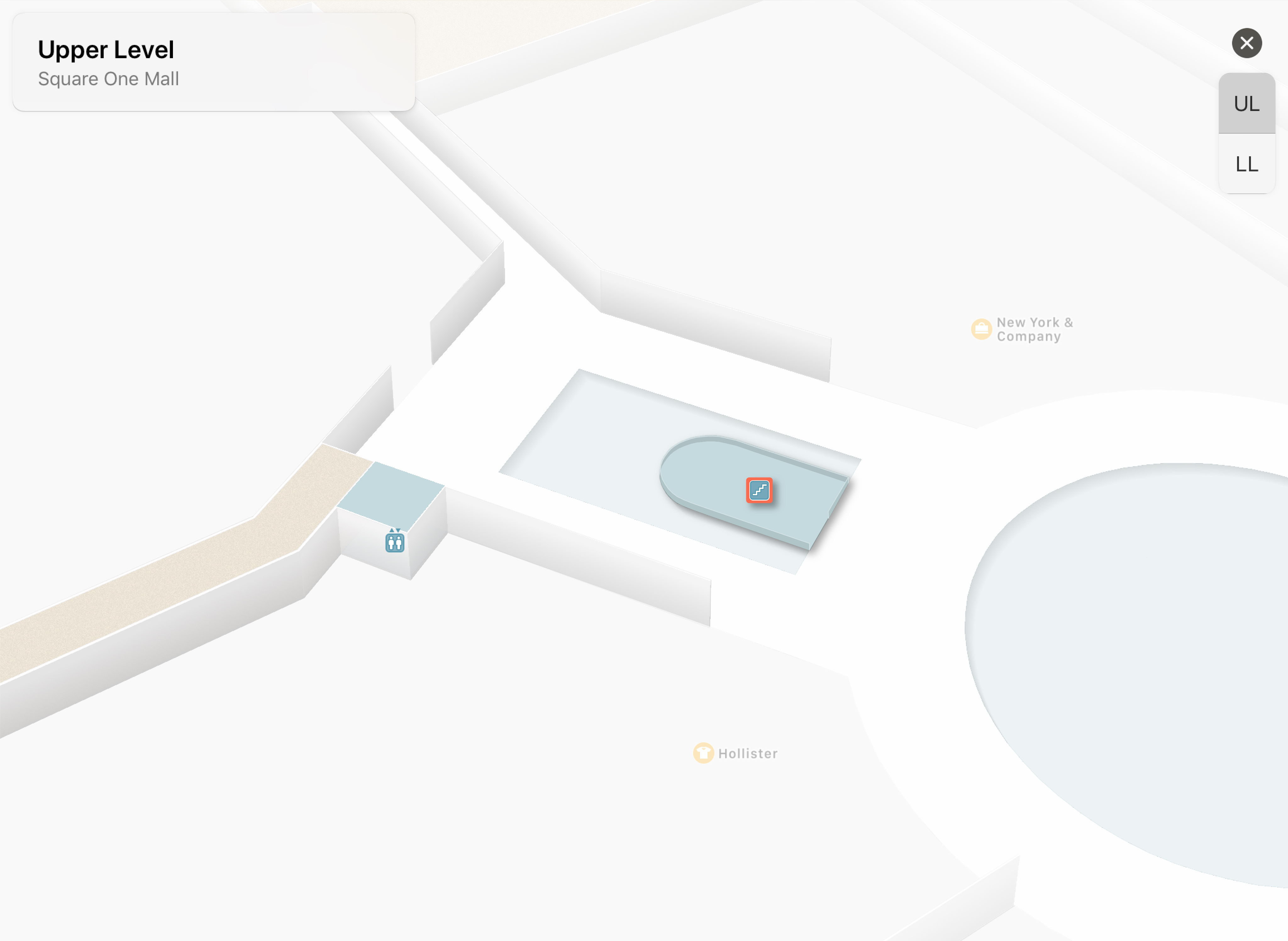
Stadium
Venue category.
Steps
Unit category. "steps" models the presence and physical extent of a series of steps that support vertical traversal on a physical floor of variable height. Despite the variable height, the physical floor is modeled as a single Level.
Illustration
Options exist when considering how to map the presence of physical steps in this physical environment.
- Ignore their existence, incorporate their area into a
"walkway"or"ramp"Unit. - Capture the steps as
"steps"Units in order to improve "...environmental awareness among pedestrians with a disability." This is the preferred approach in this specific case.
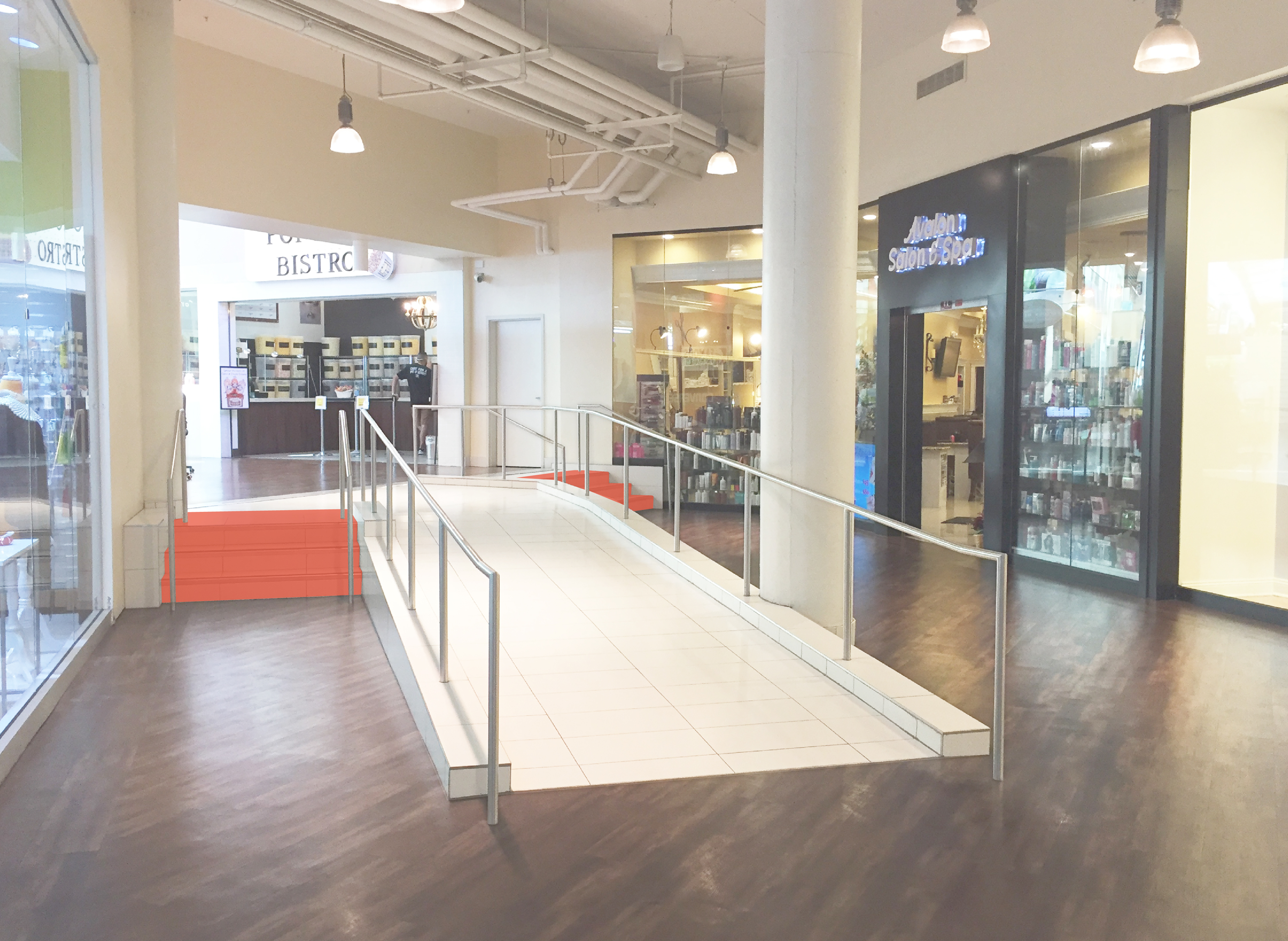
Storage (Amenity)
Amenity category. "storage" models the presence and approximate point location of a storage facility.
Storage (Unit)
Unit category. "storage" models the presence and physical extent of a storage facility.
Strip Mall
Venue category. Reference
Stroller Rental
Amenity category. "strollerrental" models the presence and approximate point location of a stroller rental service. Reference
Structure
Unit category. "structure" models the presence and physical extent of a network of floor-to-ceiling walls or an integrated system of walls and columns.
Illustration
Walls and structurally integrated columns are captured as "structure" to model the physical extent of a network of floor-to-ceiling barriers.
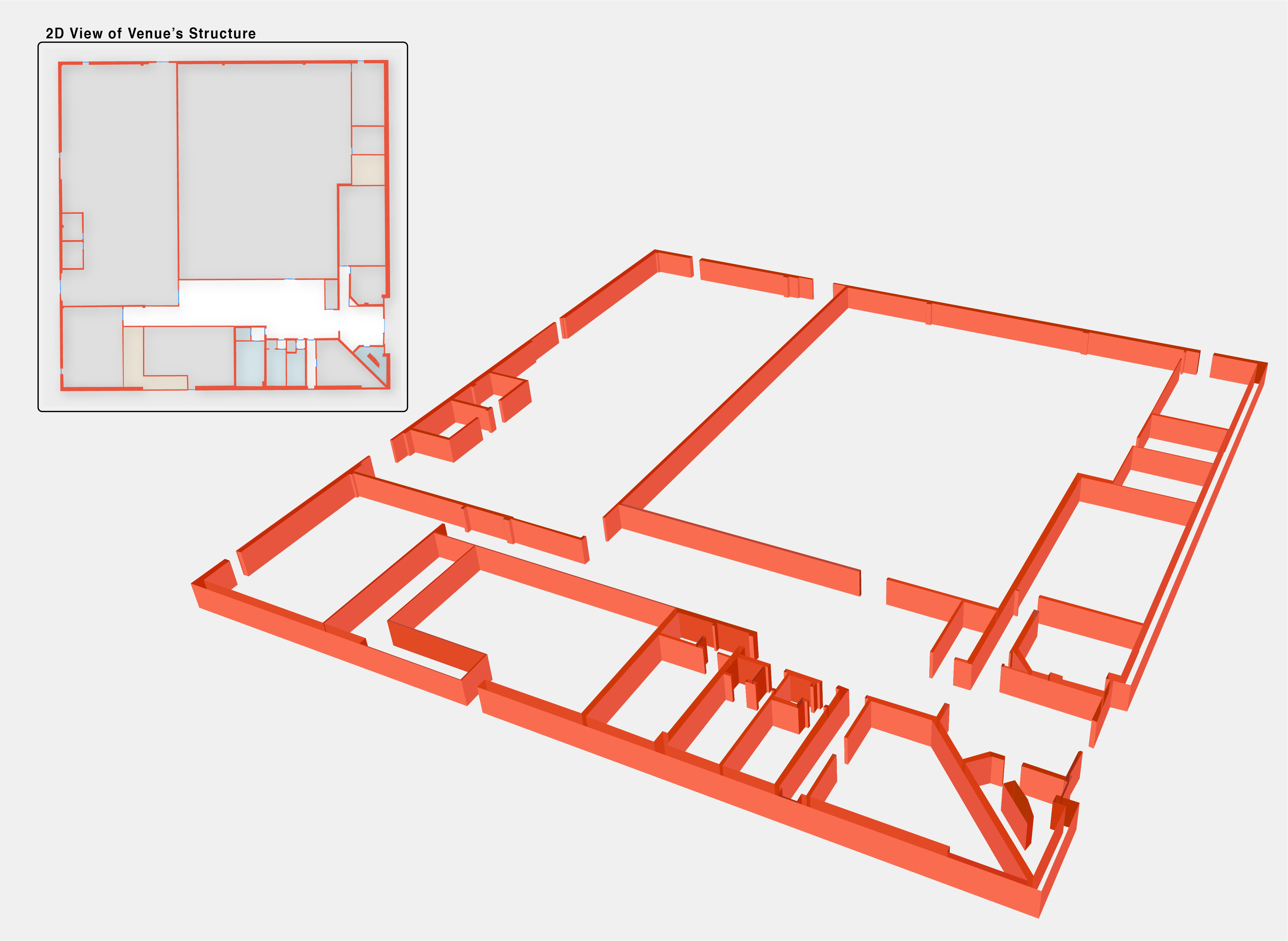
Student Services
Amenity category. "studentservices" models the presence and approximate point location of a student services operation.
Student Admissions
Amenity category. "studentadmissions" models the presence and approximate point location of a student admissions operation.
Survey, Surveyed
The survey process enables indoor positioning within a venue using the Indoor Survey Application. By dropping 'points' on a map within the Survey Application, the surveyor indicates their relative position within the physical Venue as they proceed through survey areas. As the surveyor proceeds, the Indoor Survey Application measures the radio frequency (RF) signal data and combines it with an iPhone's sensor data. The end result is indoor positioning without the need to install special hardware.
Swimming Pool
Amenity category. "swimmingpool" models the presence and approximate point location of a swimming pool.
Swimming Pool - Children
Amenity category. "swimmingpool.children" models the presence and approximate point location of a child's swimming pool.
Swimming Pool - Family
Amenity category. "swimmingpool.family" models the presence and approximate point location of a family swimming pool.
Symmetrical Difference
Symmetrical difference may either be unintentional or intentional.
Unintentional symmetrical difference is the consequence of the poor "snapping" of vertices among features in or among different layers.
Intentional symmetrical difference is a legacy map production approach. It was used to imply the existence of a physical, vertical barrier. Symmetrical difference was limited to the following feature type:
- Unit
Illustration
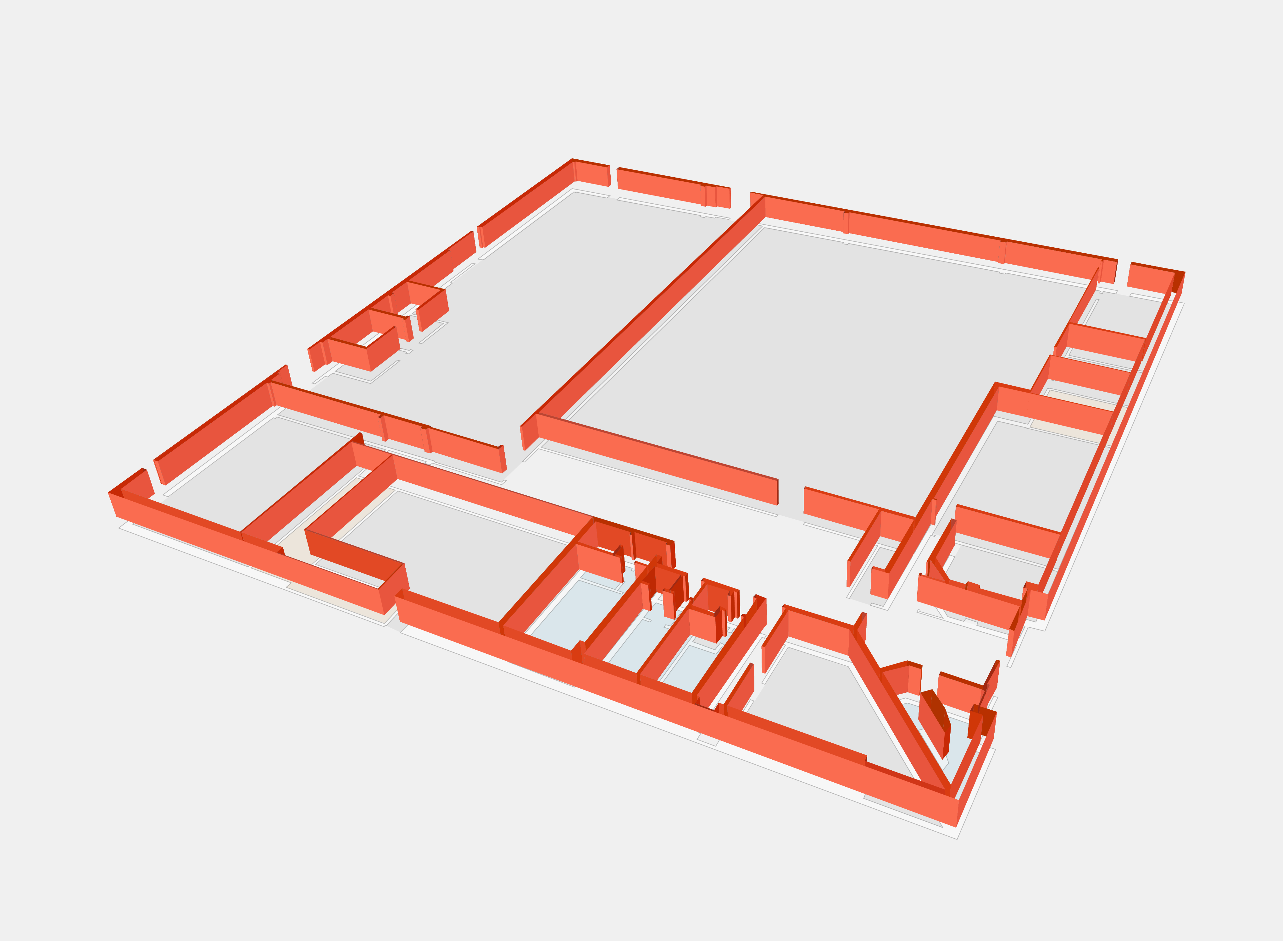
When it is a requirement to only generally model a physical, vertical barrier, then the following Unit categories may be used:
When it is a requirement to specifically describe the material nature of the physical, vertical barrier, then the following Unit categories may be used:
"brick""concrete""drywall""glass""wood"
Swimming Pool
Amenity category. "swimmingpool" models the presence and approximate point location of a water feature that is intended for use by people.
T
Tactile Paving
Accessibility category. "tactilepaving" describes the presence of a ground surface that is provided to a pedestrian with a sight disability.
Illustration
The existence of tactile paving is evident in this physical environment. To model these services:
* Capture an Opening and set accessibility to "tactilepaving".
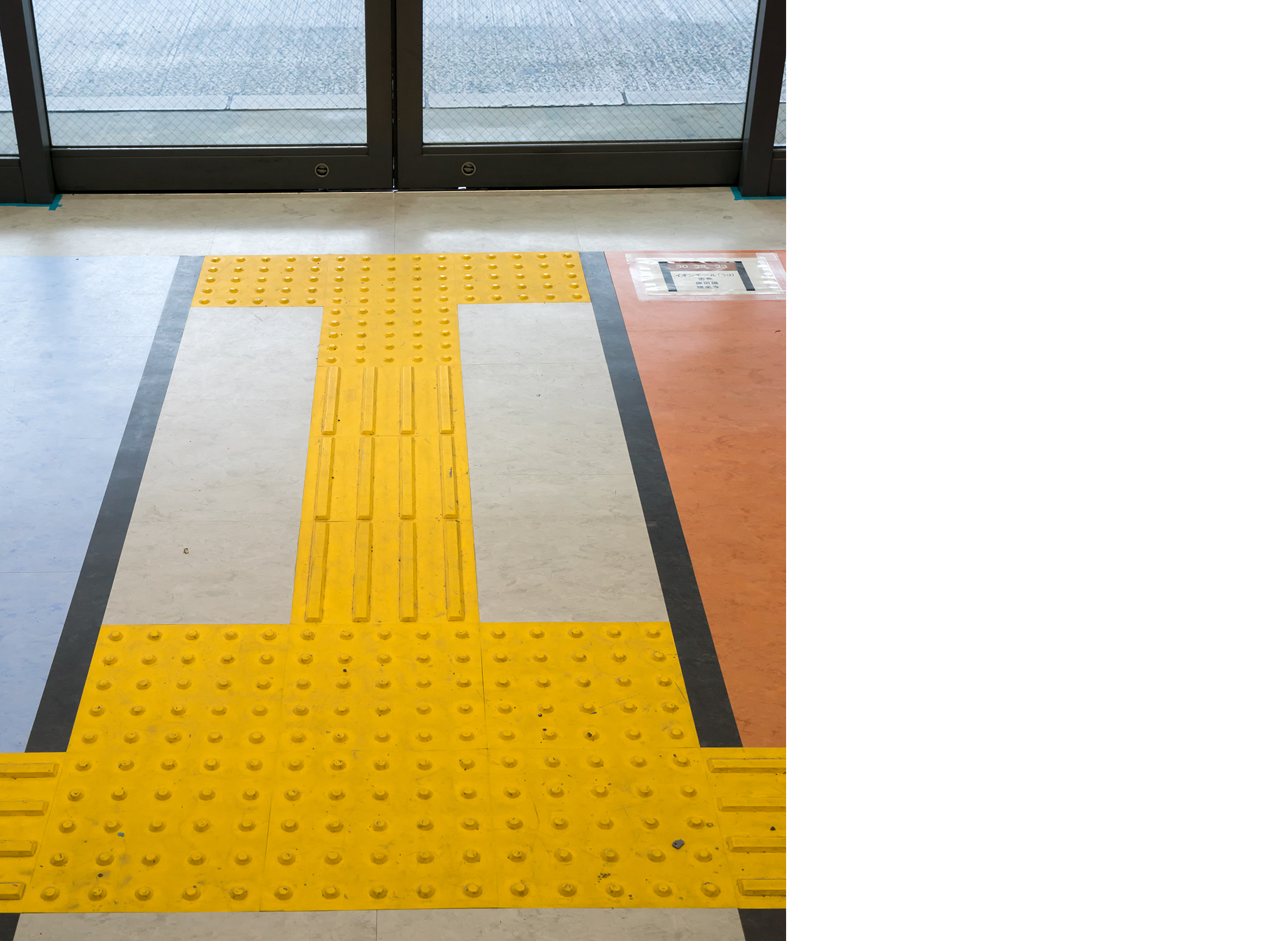
Terminal (Geofence)
Geofence category. "terminal" models the extent of a Geofence whose area encompasses a physical environment that is describable by the Venue Organization as a terminal.
Illustration
Two (2) "terminal" Geofences at Norman Y. Mineta International Airport (SJC) that touch. Each Geofence defines the extent of its respective terminal. Each Geofence contains a part of its referenced Level. This is because the Level feature, in its entirety, models a floor that, in its entirety, supports two (2) airport terminal operations.
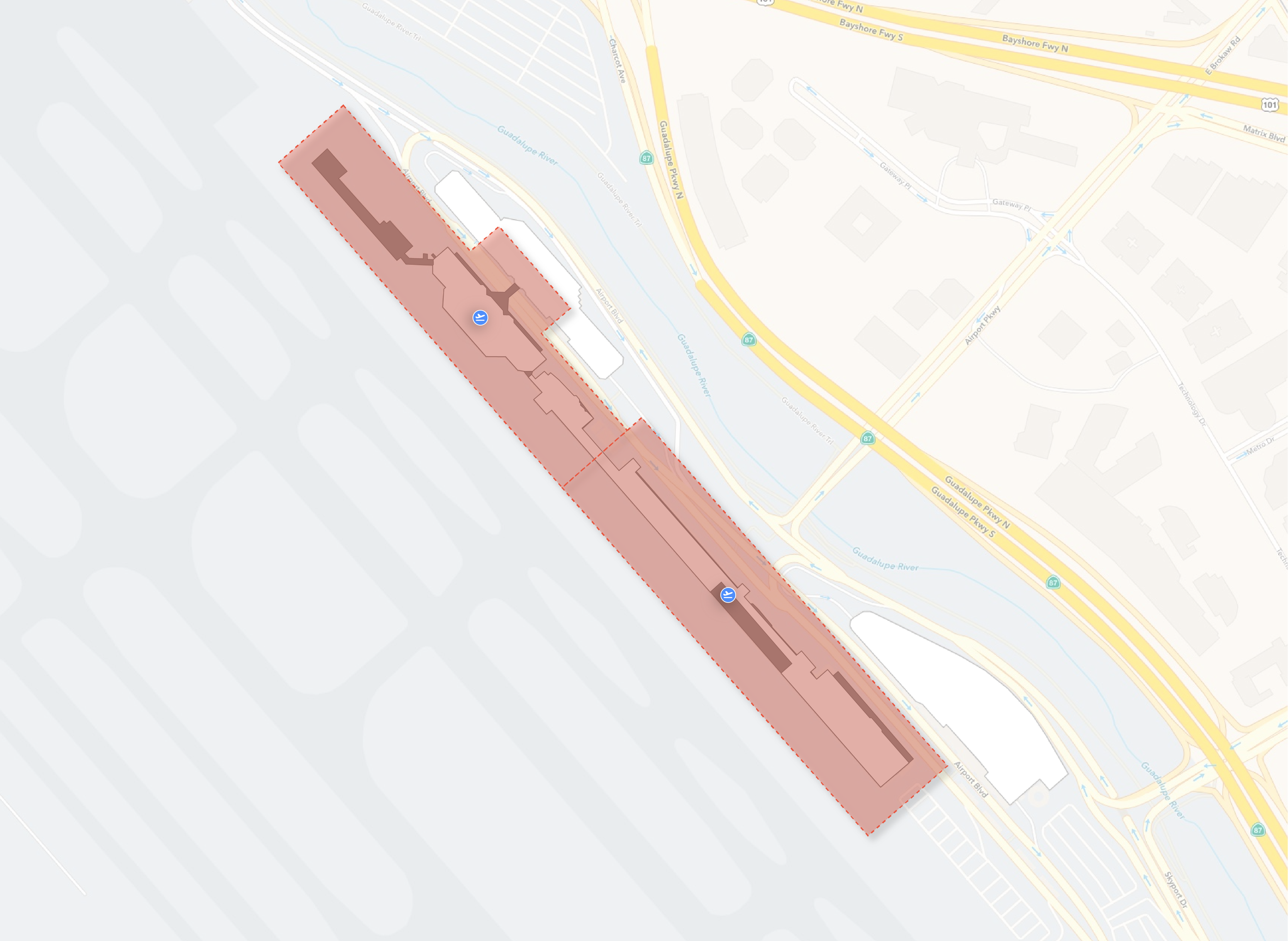
Terrace
Unit category. "terrace" models the presence and physical extent of an external, raised, open, flat area near a building.
Theater
Venue category.
Theme Park
Venue category.
Threshold
A doorsill, line, strip, or inferable boundary that exists along a horizontal plane that a pedestrian may cross to enter a separately defined physical space.
Ticketing (Amenity)
Amenity category. "ticketing" models the presence and approximate point location of an automated or manned ticketing operation. "ticketing" should be used when the operation cannot be classified using any other category in the hierarchy. "ticketing" is not further defined in IMDF.
Ticketing (Section)
Section category. "ticketing" models the presence and approximate thematic extent of an area containing ticketing operations and services.
Ticketing - Airline
Amenity category. "ticketing.airline" models the presence and approximate point location of a manned airline ticketing operation.
Ticketing - Bus/Municipal
Amenity category. "ticketing.bus.muni" models the presence and approximate point location of an automated or manned bus ticketing operation that is provided by a local transit authority.
Ticketing - Bus/National
Amenity category. "ticketing.bus.national" models the presence and approximate point location of an automated or manned bus ticketing operation that is provided by a national transit authority.
Ticketing - Rail/Municipal
Amenity category. "ticketing.rail.muni" models the presence and approximate point location of an automated or manned rail ticketing operation that is provided by a national transit authority.
Ticketing - Rail/National
Amenity category. "ticketing.rail.national" models the presence and approximate point location of an automated or manned rail ticketing operation that is provided by a national transit authority.
Ticketing - Shuttle
Amenity category. "ticketing.shuttle" models the presence and approximate point location of an automated or manned private ticketing operation that is provided by a private enterprise, not a national or local transit authority.
Touch, Touching, Touched
A spatial condition in which "...none of the points common to both geometries intersect the interiors of both geometries." Reference.
Illustration
Two Units that touch.
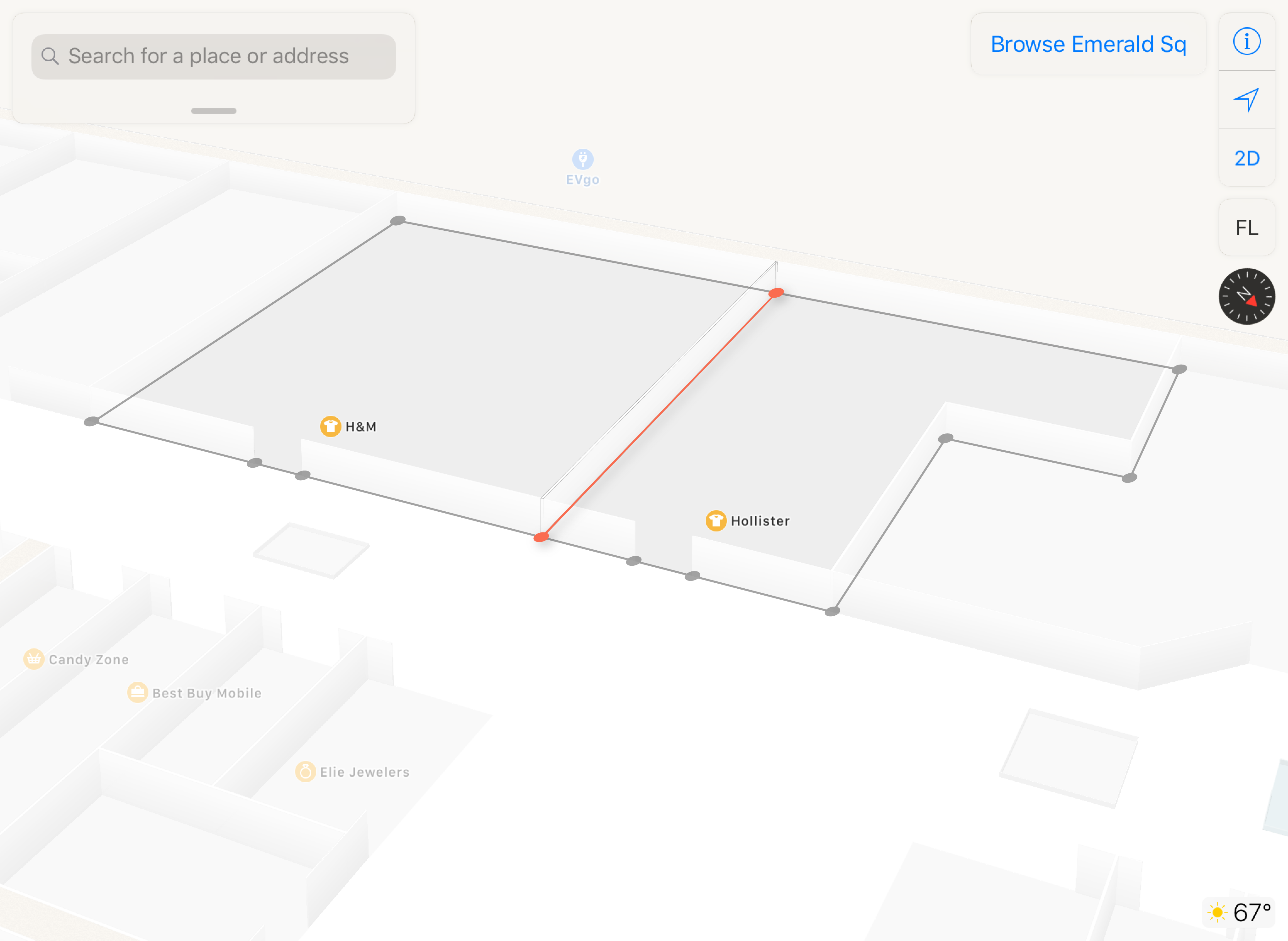
Train Track (Amenity)
Amenity category. "traintrack" models the presence and approximate point location of a place where a train can arrive. Reference. See also: Platform (Amenity).
Transit (Amenity)
Amenity category. "transit" models the presence and approximate point location of an automated or manned transportation operation. "transit" should be used when an operation cannot be classified using any other category. "transit" is not further defined in IMDF.
Transit (Building)
Building category. "transit" describes a transportation operation. The Building's associated footprint models the presence and physical extent of the transportation operation.
Transit - Bus (Building)
Building category. "transit.bus" describes a bus transportation operation. The Building's associated footprint models the presence and physical extent of the bus transportation operation.
Transit - Train (Building)
Building category. "transit.train" describes a train transportation operation. The Building's associated footprint models the presence and physical extent of the train transportation operation.
Transit - Limo
Amenity category. "limo" models the presence and approximate point location of a limousine service.
Transit - Bus
Amenity category. "bus" models the presence and approximate point location of one or more bus stop.
Transit - Bus/Municipal
Amenity category. "bus.muni" models the presence and approximate point location of one or more bus stop that is serviced by a local transit authority.
Transit - Bus/National
Amenity category. "bus.national" models the presence and approximate point location of one or more bus stop that is serviced by a national transit authority.
Transit - Rail/Municipal
Amenity category. "rail.muni" models the presence and approximate point location of one or more rail stop that is serviced by a local transit authority.
Transit - Rail/National
Amenity category. "rail.national" models the presence and approximate point location of one or more rail stop that is serviced by a national transit authority.
Transit - Private/Shuttle
Amenity category. "shuttle" models the presence and approximate point location of one or more bus stop that is serviced by a private enterprise, not a national or local transit authority.
Transit - Ride-share
Amenity category. "rideshare" models the presence and approximate point location of a ride-share pick-up spot or zone.
Transit - Taxi
Amenity category. "taxi" models the presence and approximate point location of a taxi waiting area or line-up.
Transit Station
Venue category.
U
Under Construction (Geofence)
Geofence category. "underconstruction" models the extent of a Geofence whose area encompasses a physical environment that is describable by the Venue Organization as under construction.
Unenclosed Area
Unit category. "unenclosedarea" models the presence and extent of an area whose boundary is not delimitted by a barrier. "unenclosedarea" is the "unbounded" equivalent of a "room" Unit whose extent may be largely defined by contract law wherein few, if any, physical limitations can be referenced to delimit the gross leasable area.
UI
User Interface.
Union
A spatial calculation where geometries of the same dimension are returned "...as a collection." Reference.
Unit (Address)
unit is a property of:
- Address
unit contains the label that is associated with a physical object or service that is modeled. unit stores ground truth and is expected to reflect a value that is used for addressing purposes. The unit component of an Address may be:
- A value that is officially recognized and used by a postal delivery service. Reference
- A proprietary designation that supports internal routing of communications
Unit (Feature)
Feature reference.
University
Venue category.
Unspecified (Amenity)
Amenity category. "unspecified" models the presence and approximate point location of a physical object or service that cannot be classified using any other Amenity category.
Unspecified (Level)
Level category. "unspecified" models the presence and physical extent of a space whose utilization is unknown. "unspecified" is not further defined in IMDF.
Unspecified (Unit)
Unit category. "unspecified" models the presence and physical extent of a space whose utilization is unknown. "unspecified" may be used when the "nonpublic" Unit category has been ascertained by the Venue Organization to be inappropriate for use. "unspecified" is not further defined in IMDF.
UX
User Experience.
V
Valet
Amenity category. "valet" models the presence and approximate point location of a valet parking service.
Vegetation (Fixture)
Fixture category. "vegetation" models the presence and physical extent of a natural or artificial vegetation feature. By design, "vegetation" is not a pedestrian pathway.
Illustration
A physical environment in which a "vegetation" Fixture would be appropriate to model the existence of this physical object. This Fixture would be positioned within the "walkway" Unit. In this scenario, the "walkway" Unit would be positioned within an outdoor Level (outdoor = false).
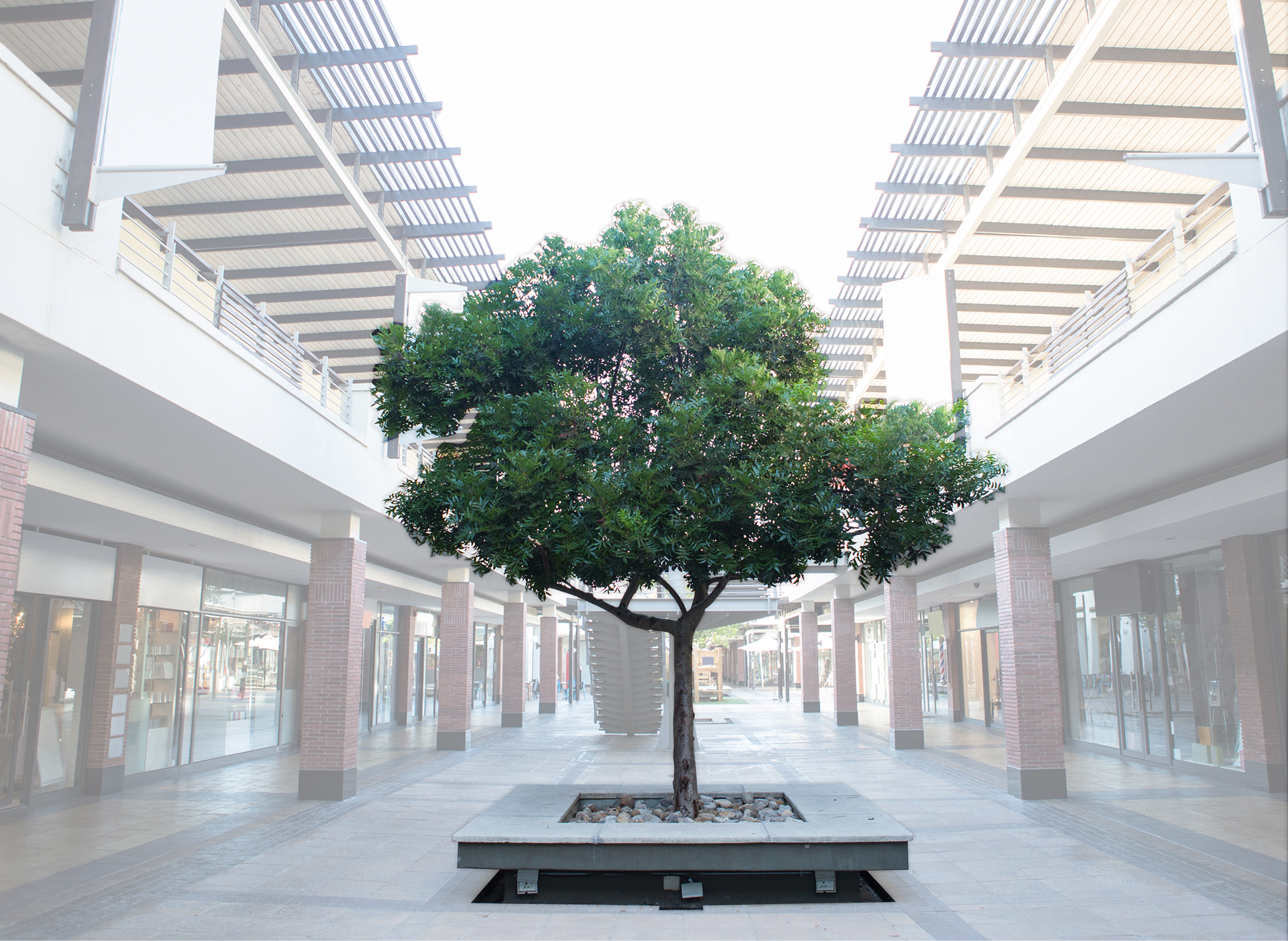
Vegetation (Section)
Section category. "vegetation" models the presence of an open or semi-enclosed vegetative area that may or may not be prohibited from being used as a pedestrian pathway.
Illustration
A physical environment where "vegetation" Sections would be appropriate to model the existence of these areas. Conceptually, where "vegetation" Sections do not cover the underlying Unit, the "walkway" Unit would be exposed.
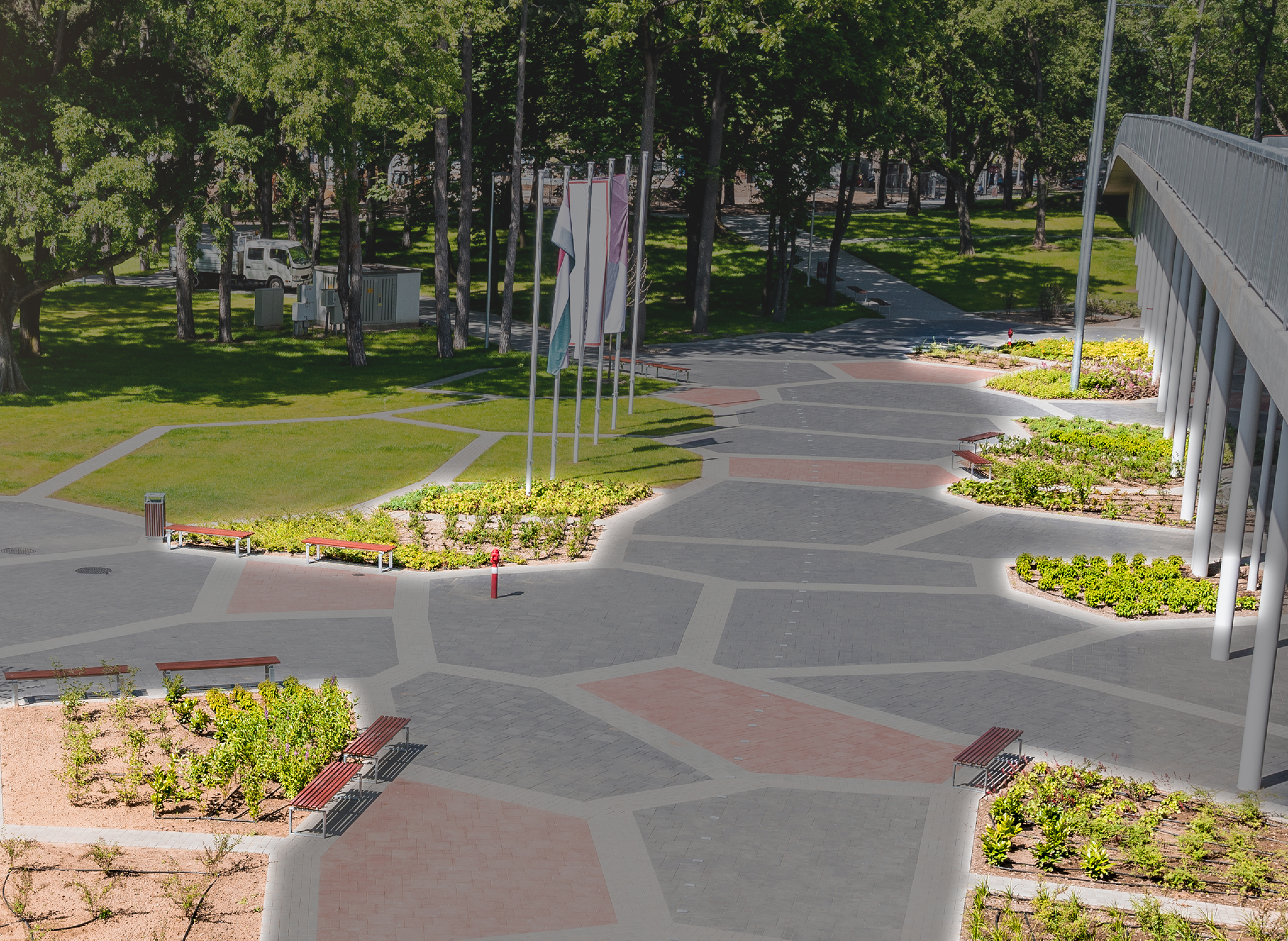
Vegetation (Unit)
Unit category. "vegetation" models the presence and physical extent of a vegetative area.
Vending Machine
Amenity category. "vendingmachine" models the presence and approximate point location of an automated system that vends products/services that include, but are not limited to, electronics, cosmetics, food and beverage.
Vending Machine - Train Ticket
Amenity category. "vendingmachine.trainticket" models the presence and approximate point location of an automated system that vends train tickets and passes.
Venue (Feature)
Feature reference.
Venue Directory
A general term used to describe a proprietary resource that is owned/maintained by a Venue Organization. Typically, this resource is a list of businesses (potential Occupants), their contact information, and addresses. A Venue Directory might also be supplemented by a Venue map.
Venue Organization
A business, governing body or other institution that has the legal or management rights to capture, manage, maintain, or update a physical characteristic held by a physical Venue or the information used to describe the Venue.
Vertical Datum
Vertical Traversal Capability
A physical environment that facilitates a pedestrian's desire to ascend or descend to an alternative floor. The following Amenity and Unit categories model a vertical traversal capability:
"elevator""escalator""ramp""stairs"
Additionally, the following Unit category models a vertical traversal capability with the exception that the capability is modeled on the same Level. (The steps do not lead to a different Level):
"steps"
Volatile
In the context of a Fixture, this is a term to describe physical objects whose presence and location, within a physical space, are subject to periodic or unexpected change at different points in time.
In the context of a Unit, it is the extent to which the modeled space is subject to periodic or unexpected change at different points in time. Causes of "change" may be:
- Alteration to the physical shape of the space. Effect: Updated Unit geometry
- Alteration to the functional use of the space. Effect: Updated Unit category
- New leaseholder of the space. Effect: Updated Unit category if the existing category is not sufficiently precise or generic, e.g.,
"room"
W
Walkway
Unit category. "walkway" models the presence and physical extent of a pedestrian pathway.
Illustration
A single "walkway" Unit that models "...a pathway whose design and intended purpose is to facilitate pedestrian movement through a Venue."
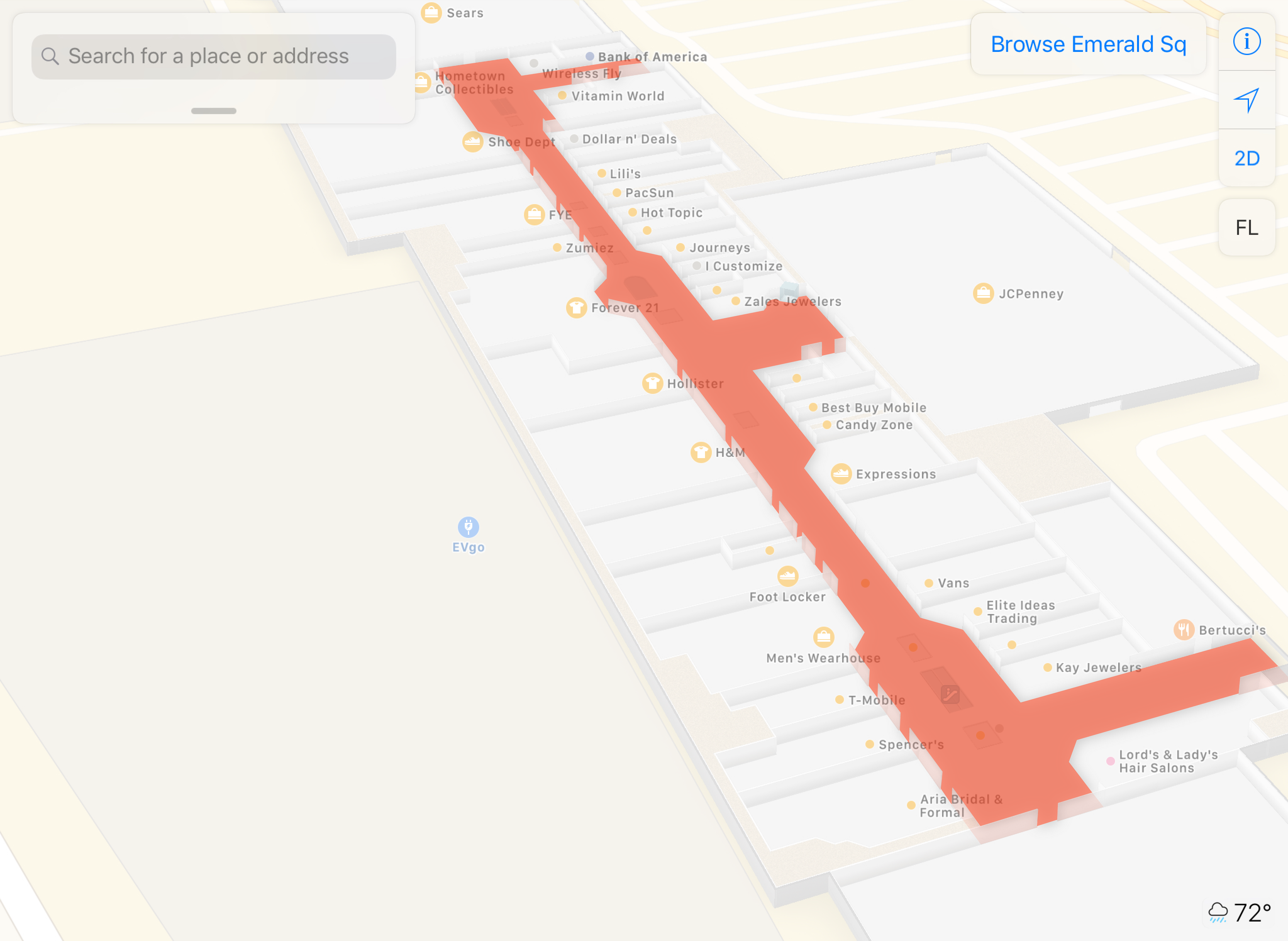
Walkway Island
Unit category. "walkway.island" models the presence and physical extent of a pedestrian "island." Also, referred to as:
- Pedestrian safety island
- Pedestrian island
- Pedestrian refuge
- Refuge island
Comment: The boundary of a
"walkway.island"does not model a physical, vertical (floor-to-ceiling) barrier except along an indoor Level boundary. Along with"opentobelow","platform","road"and"unenclosedarea", this is an exception to the general rule.
Wall (Fixture)
Fixture category. "wall" models the presence and physical extent of a standalone barrier that is permanent, temporary or moveable.
Illustration
These walls exhibit the following characteristics which make them appropriate for capture as "wall" Fixtures rather than "wall" Units:
- An asset that, if removed, does not impact the structural integrity of the physical building
- An asset that has utility within the defined space and serves to support a service/business function
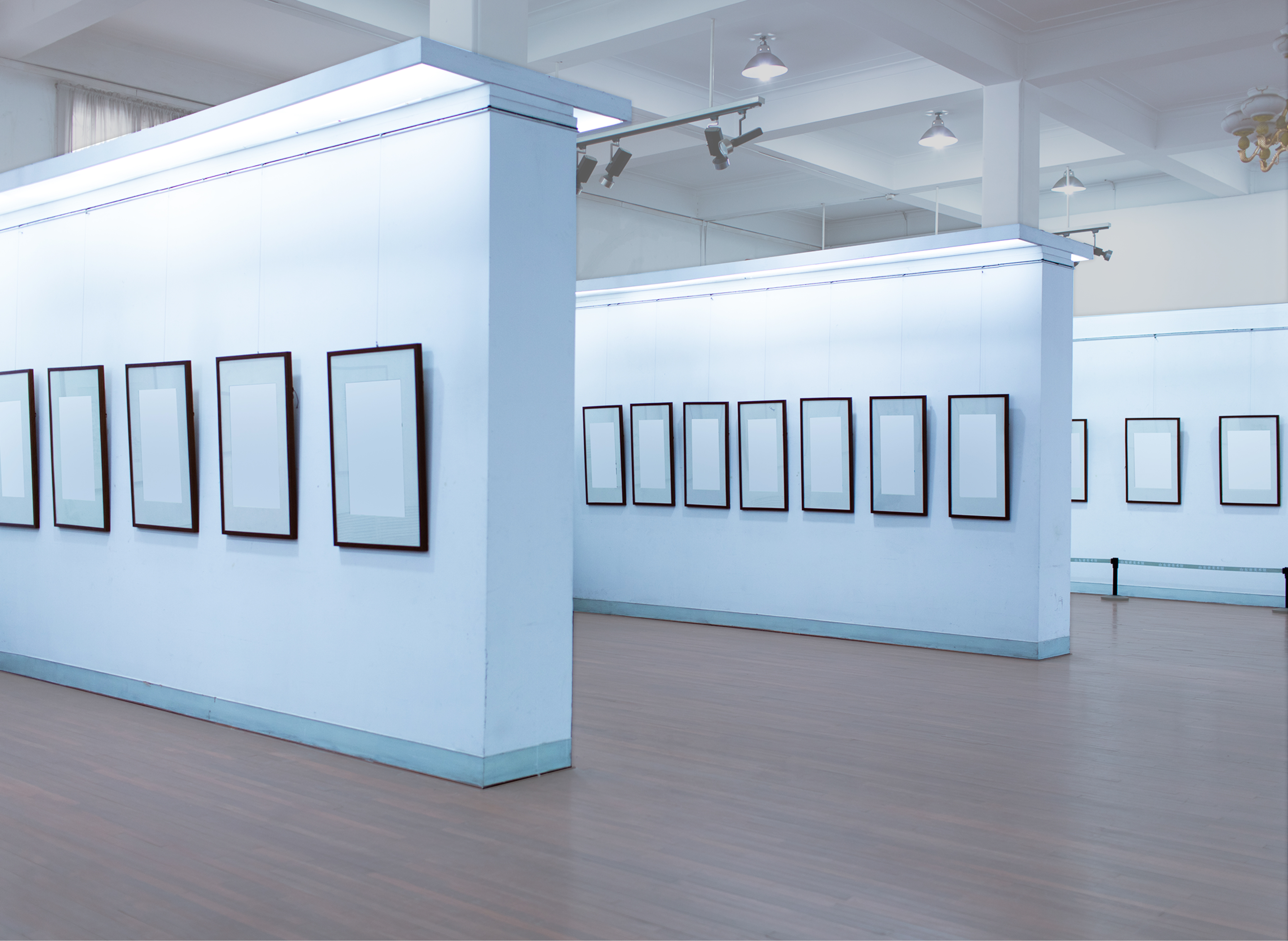
Water (Fixture)
Fixture category. "water" models the presence and physical extent of a natural or artificial water feature.
Illustration
A physical environment that would be a candidate for capture as a "water" Fixture. Given the relative notoriety of the water feature at this particular Venue, the use of an Amenity to signal landmark status ("landmark") would also be appropriate.
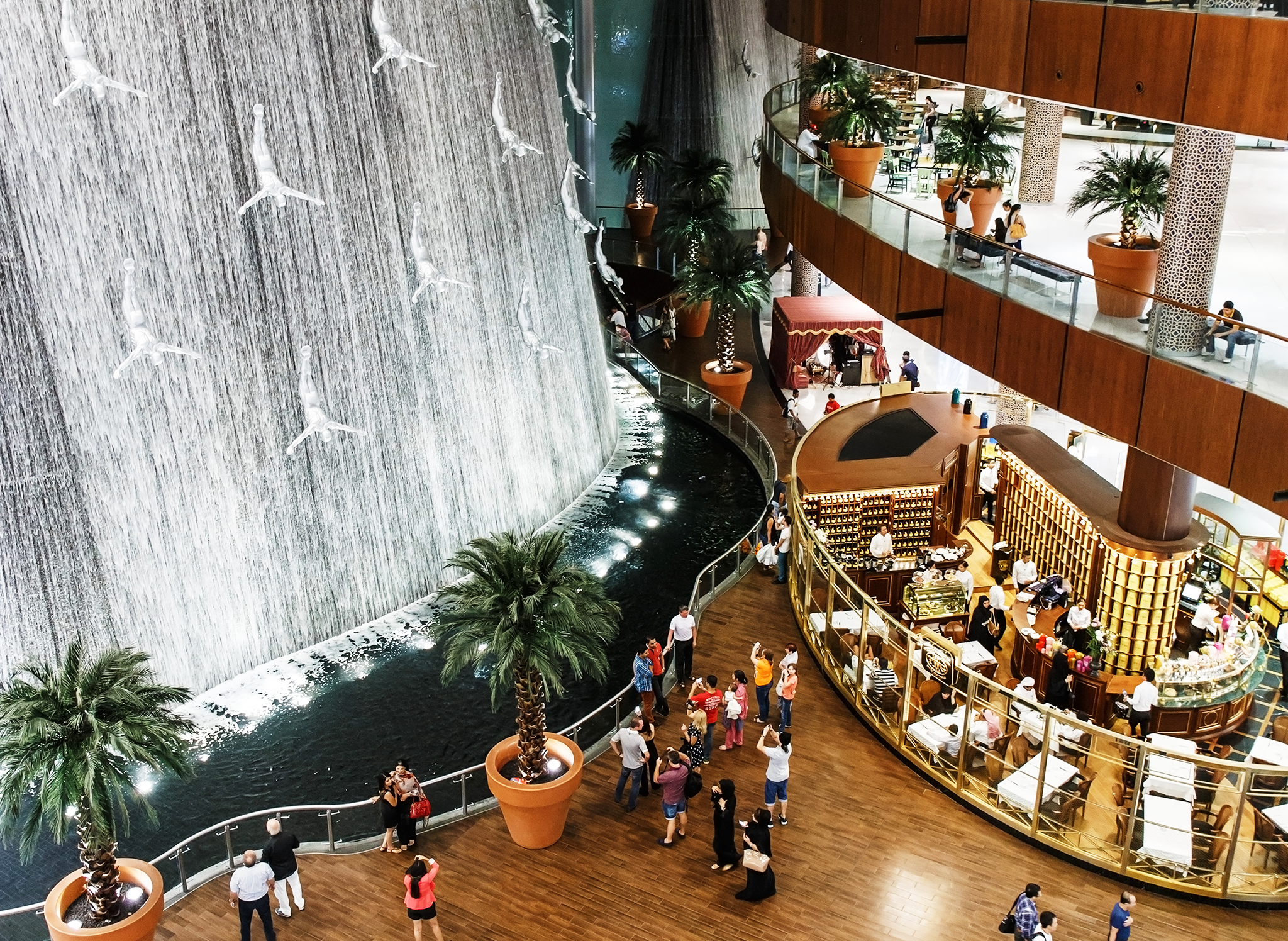
Conceptually, this water feature would be eligible for capture as a "water" Fixture in an outdoor context.

Website
website is a property of the following feature types:
- Venue
- Occupant
- Amenity
Wheelchair Assistance
Amenity category. "wheelchairassist" models the presence and approximate point location of a wheelchair assistance service.
Wi-Fi
Amenity category. "wifi" models the presence and approximate point location of a designated zone/area/"hot spot" where Wi-Fi service is available.
Within
A spatial condition in which "...the first geometry is completely within the second geometry." Reference.
Illustration
Openings that are within the boundary of their respective Units.
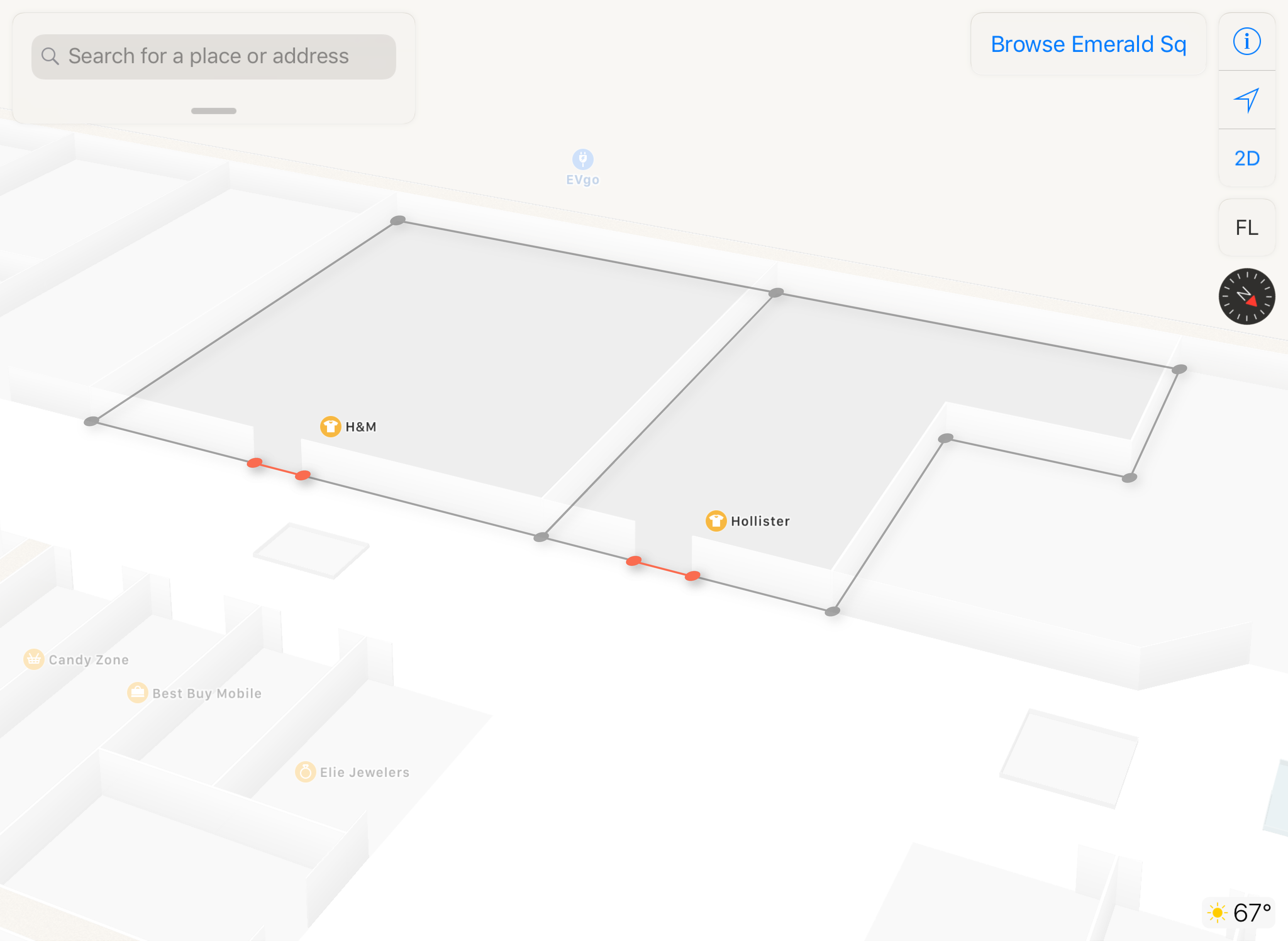
Units referencing different Levels. One Unit is within the other.
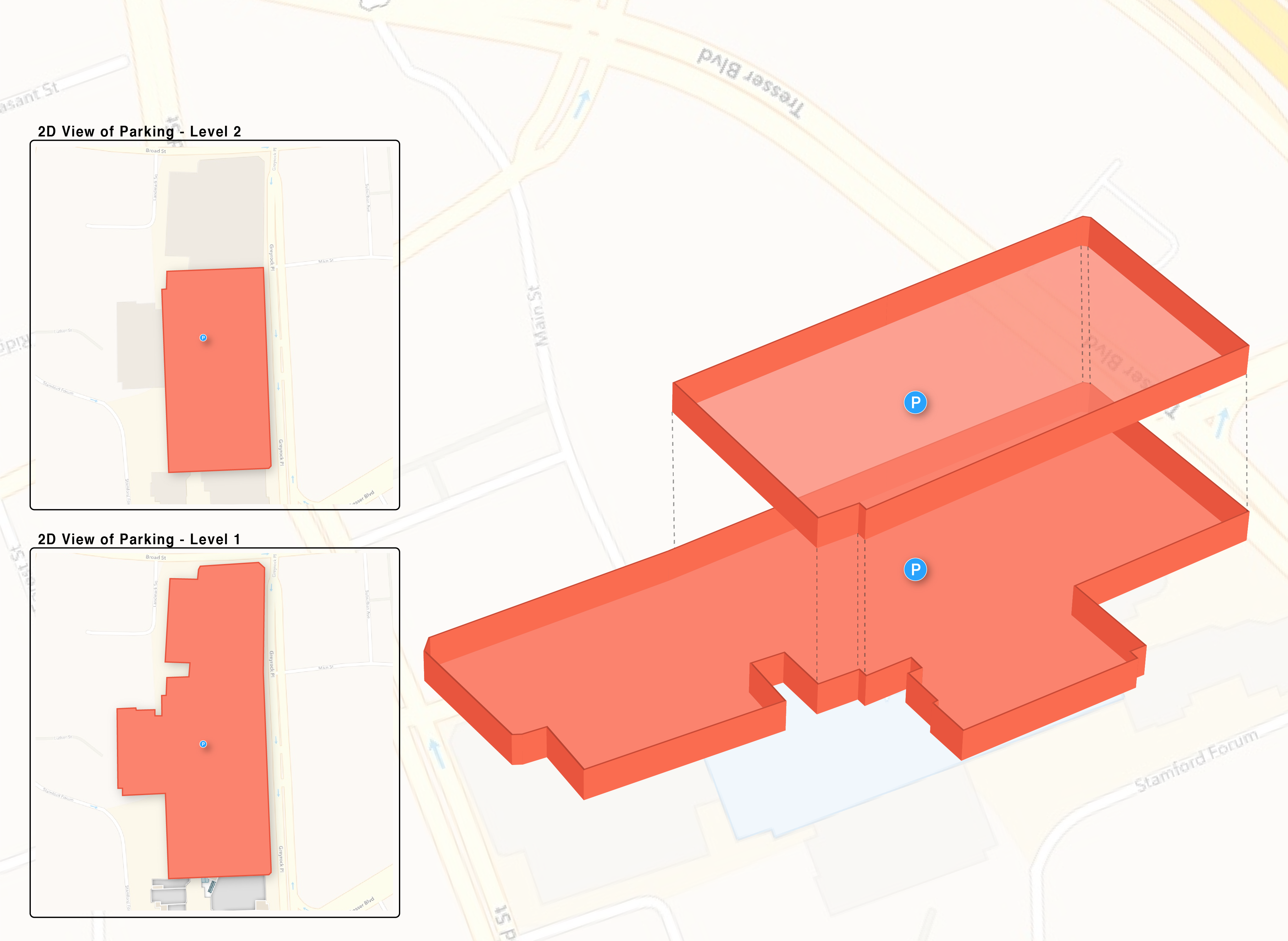
X
[Intentionally blank]
Y
[Intentionally blank]